Shade Loving Shrubs: The Best Bushes To Plant Under Trees
Do you have a tree in your yard and don’t know what to do with the empty space underneath? Well, I’m here to tell you that there are plenty of shade loving shrubs that thrive under trees! In fact, many of them actually require those shady spots in order to grow well. So whether your landscape has full shade or partial shade, read on for some recommendations.
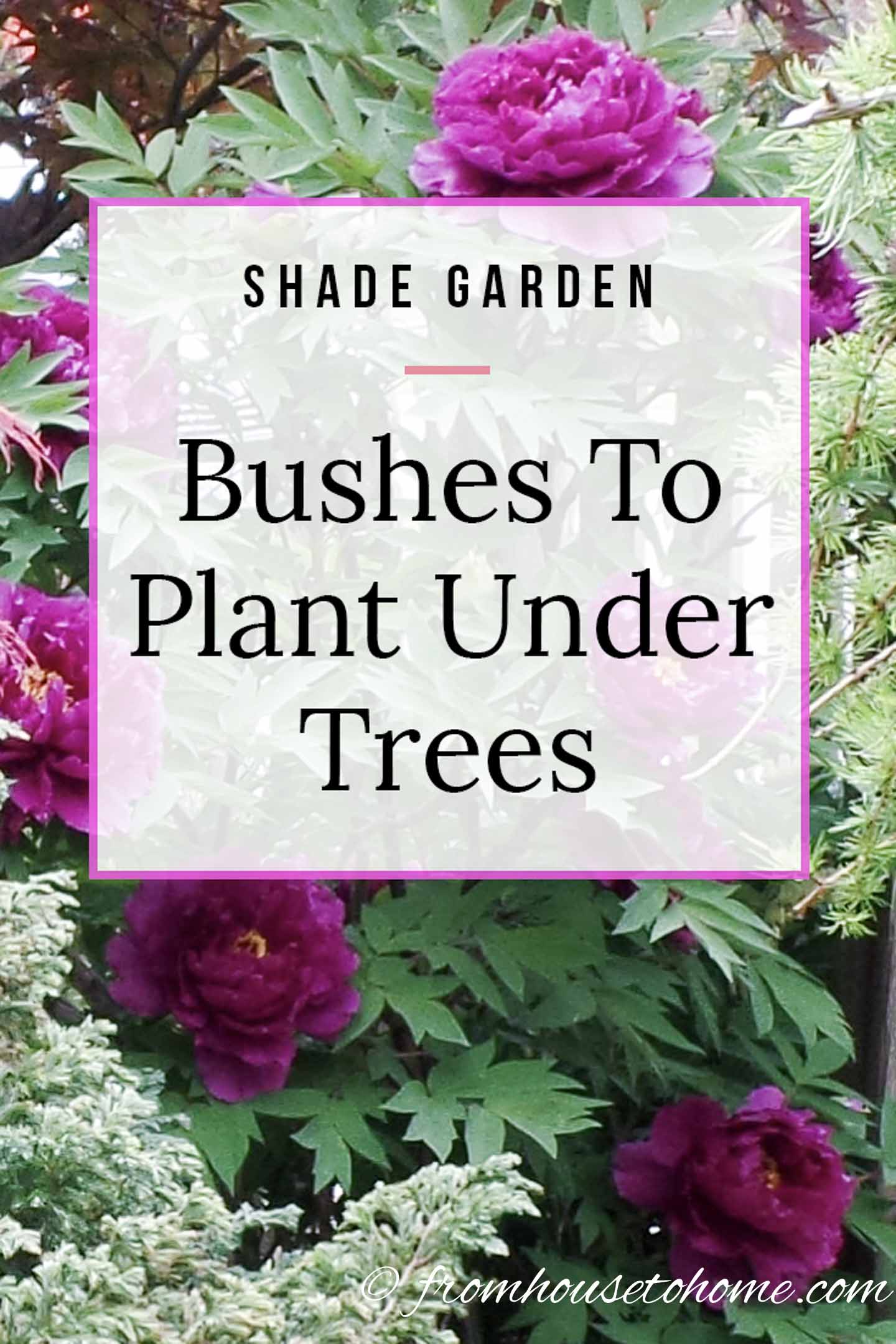
If you’re like me, you have a few trees in your yard and are always looking for plants that will thrive under their shady conditions.
The space between taller trees and low growing perennials lends itself to an array of blooming bushes and interesting foliage plants.
In fact, by growing a variety of shade tolerant shrubs, this shady area is the ideal place for plants that provide all-season interest.
I rely on the glorious flowers of rhododendrons, azalea and mountain laurel in the spring, the magnificence of hydrangeas in the summer, Japanese maple foliage in autumn, and evergreen foliage and bark in the winter.
And those are just a few of the available options. Keep reading to find the best shrubs for shade that you can plant under trees.
Flowering shrubs
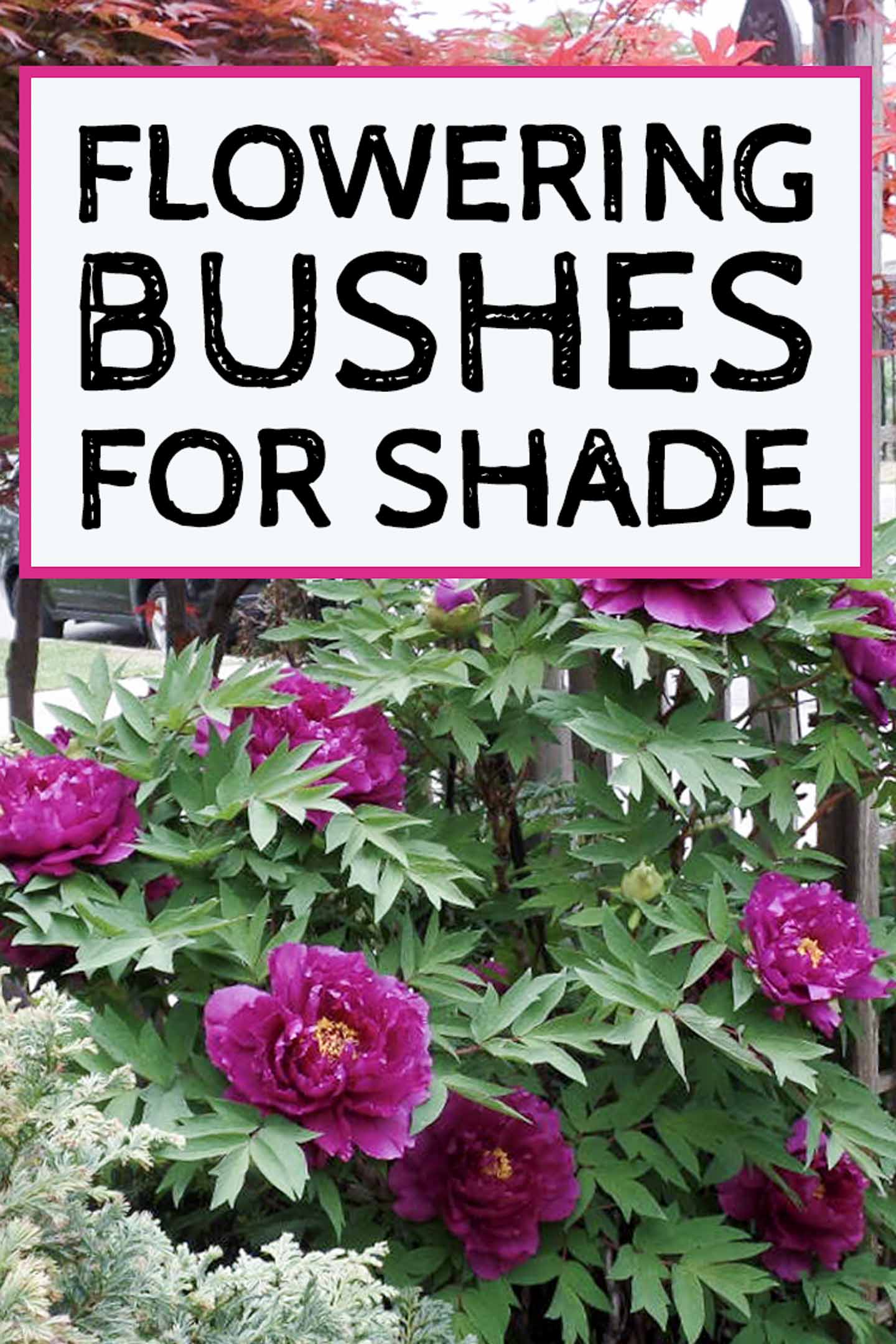
When I’m planting in the shade, I’m always looking for ways to add some color that brightens it up a little.
So I love shrubs for shade gardens that have beautiful blooms.
Luckily there are more of them than you might think! Here are some of my favorite flowering shrubs for shade.
1 | Japanese Andromeda (Pieris Japonica)
This post may contain affiliate links. We make a small commission if you buy the products from these links (at no extra cost to you). As an Amazon Associate, I earn from qualifying purchases. But we only recommend products we would use ourselves. For more information, click here to see our disclosures.
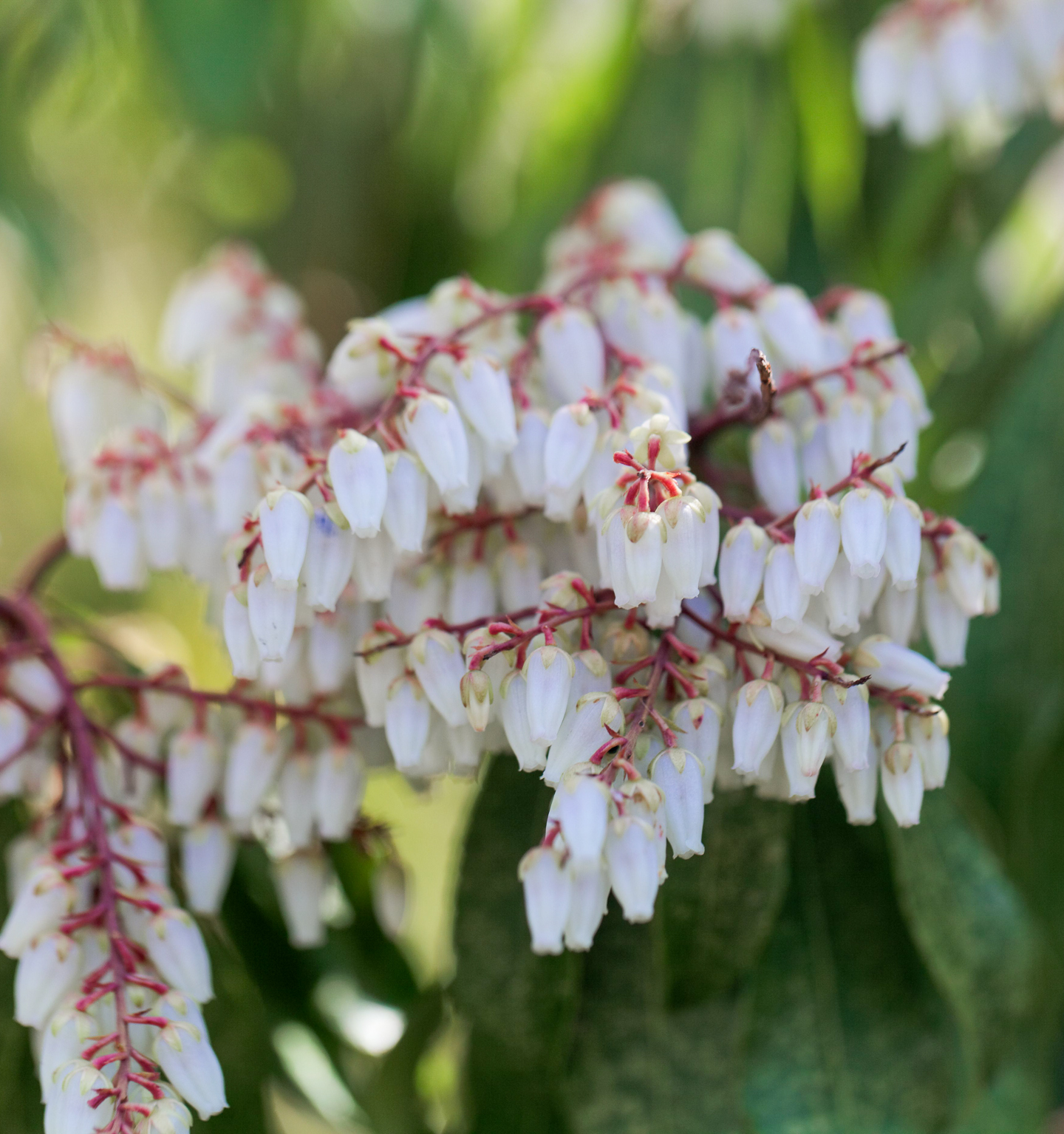
Zones: 5 to 8
Light: Shade to part shade
Bloom Time: Early spring
Height: 3′ to 10′ (depending on the variety)
Spread: 3′ to 10′
Pieris Japonica is a shade tolerant evergreen shrub with leaves that start out red, then change to pink and cream before becoming lime green.
It likes acidic, well drained soil which is characteristic of many of the shrubs that grow well in shade.
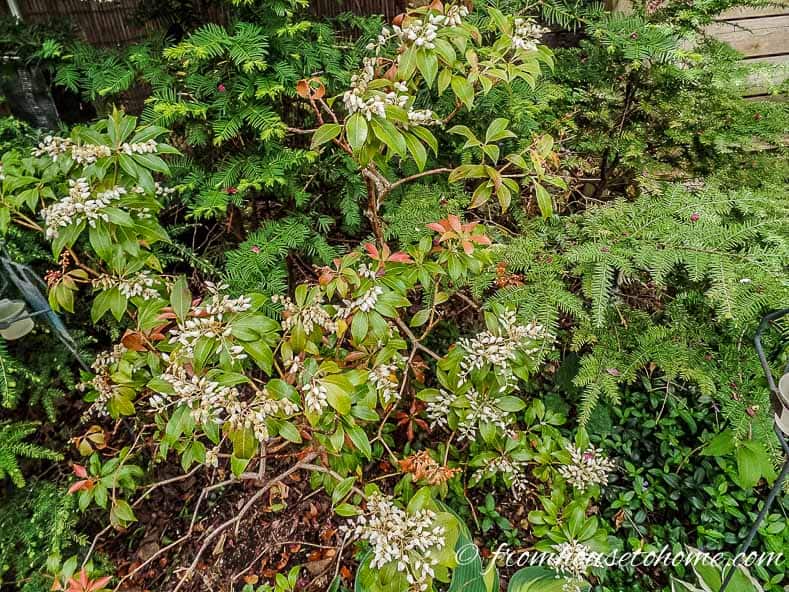
When planted with rhododendrons, azaleas and yews, the bright green leaves add contrast and interest to your garden all year.
In early spring, the stems are crowned with white or pink star-shaped clusters.
Learn more about growing Pieris Japonica HERE.
2 | Mountain Laurel (Kalmia latifolia)
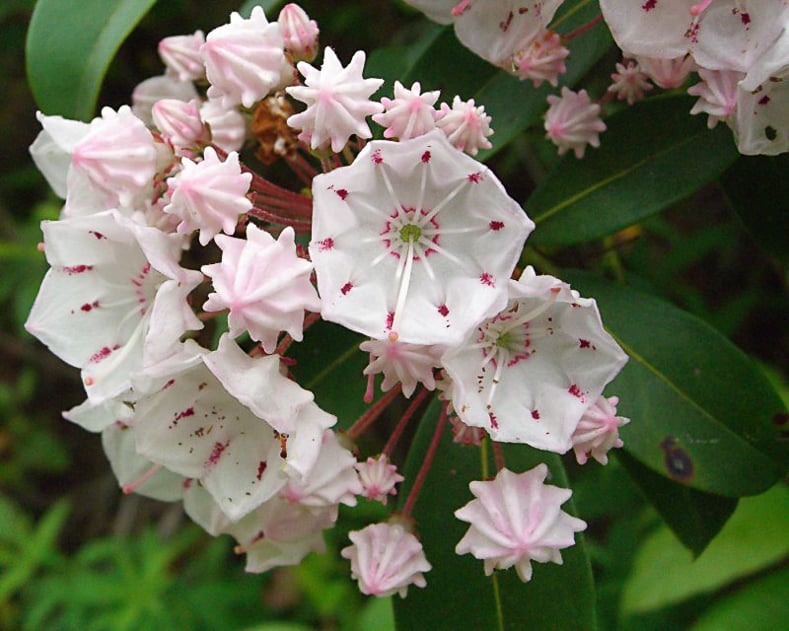
Zones: 3 – 11
Light: Full shade to part sun
Bloom Time: Late Spring to Early Summer
Height: 3′ to 12′ tall (depending on the variety)
Spread: 3′ to 12′ tall
Another fabulous late spring/early summer bloomer is the Mountain Laurel (Kalmia latifolia).
It is another one of the evergreens for shade that prefers acidic soil, sheltered conditions, and mulch for moisture retention.
The pink blooms take your breath away with their beauty.
Learn more about growing Mountain Laurel.
3 | Rhododendron

Zones: 4 to 9
Light: Shade to part shade
Bloom Time: Spring
Height: 3′ to 12′ (depending on the variety)
Spread: 3′ to 12′
As long as the soil conditions are acidic and regular moisture is provided, rhododendrons are the perfect flowering shrub for the mid-story. They thrive in the dappled shade under trees, but can grow in full or part shade.
Rhododendrons need shelter from winds and the sun, and require little or no pruning.
Mulch is important to protect the shallow roots and replace nutrients in the soil.
I like the contrast in shape of the broadleaf evergreen leaves among the needled yews.
Rhododendron’s range of colors and spring bloom times provide a succession of fabulous blossom from April to June.
When the early Rhododendrons are covered in magenta or fuchsia flowers, my heart sings and my soul recovers from the blight of winter.
Get some tips on growing Rhododendrons.
Buy them (including the purple one) HERE.*
4 | Azalea
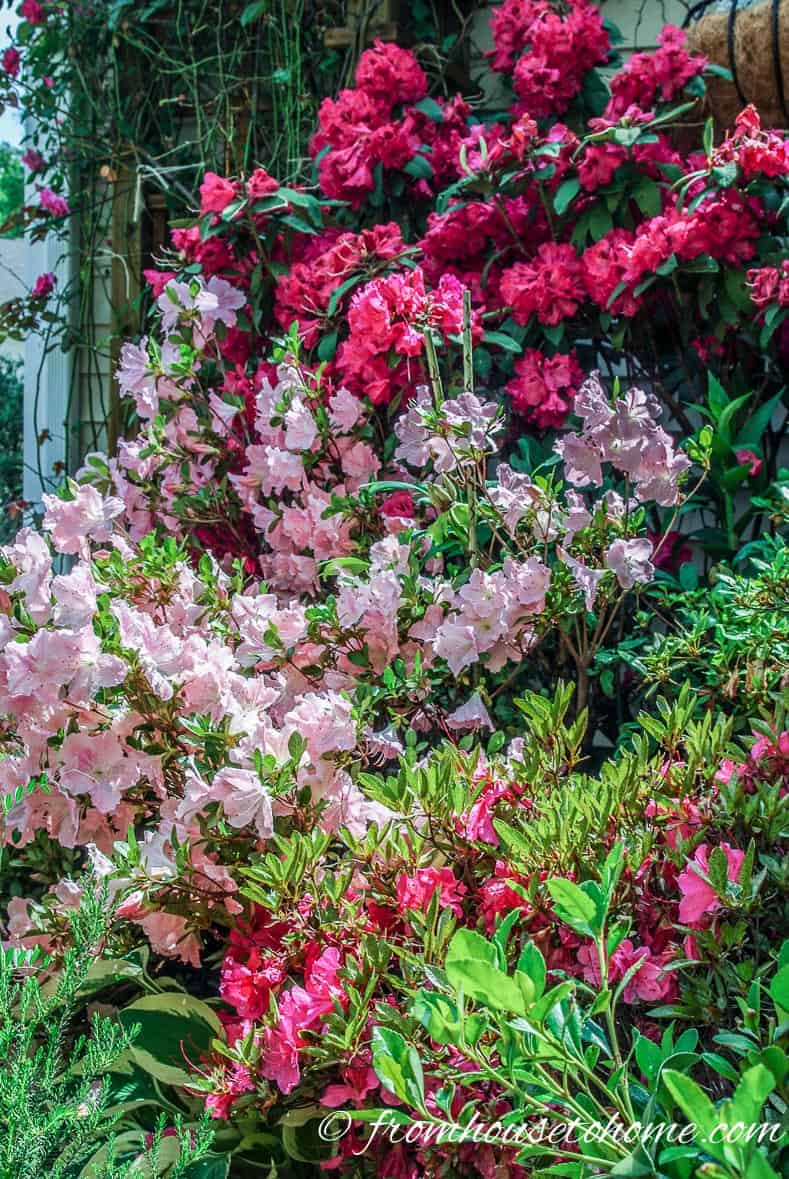
Zones: 2 to 9
Light: Partial shade to sun (depending on the variety)
Bloom Time: Spring, some re-bloom in the Fall
Height: 2′ to 6′ tall
Spread: 2′ to 4′ wide
Azaleas are members of the Rhododendron family and have the same acidic soil and protected growth requirements. And also make the list as one of the best shrubs for shade.
The difference is that azaleas are generally smaller plants and can be either deciduous or evergreen bushes.
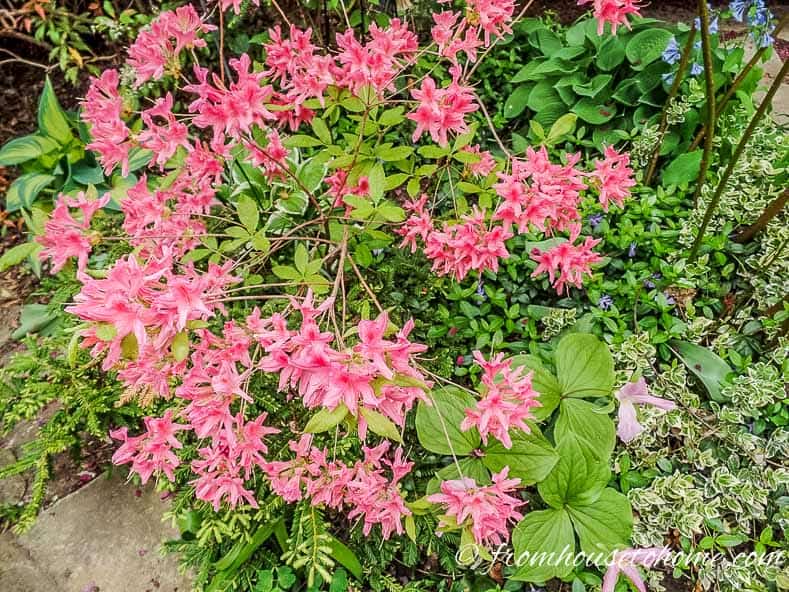
The Northern Lights series is tough, no care and (as the name suggests) is bred to survive the cold.
Their blossoms precede their leaves in spring and are a joy to behold.
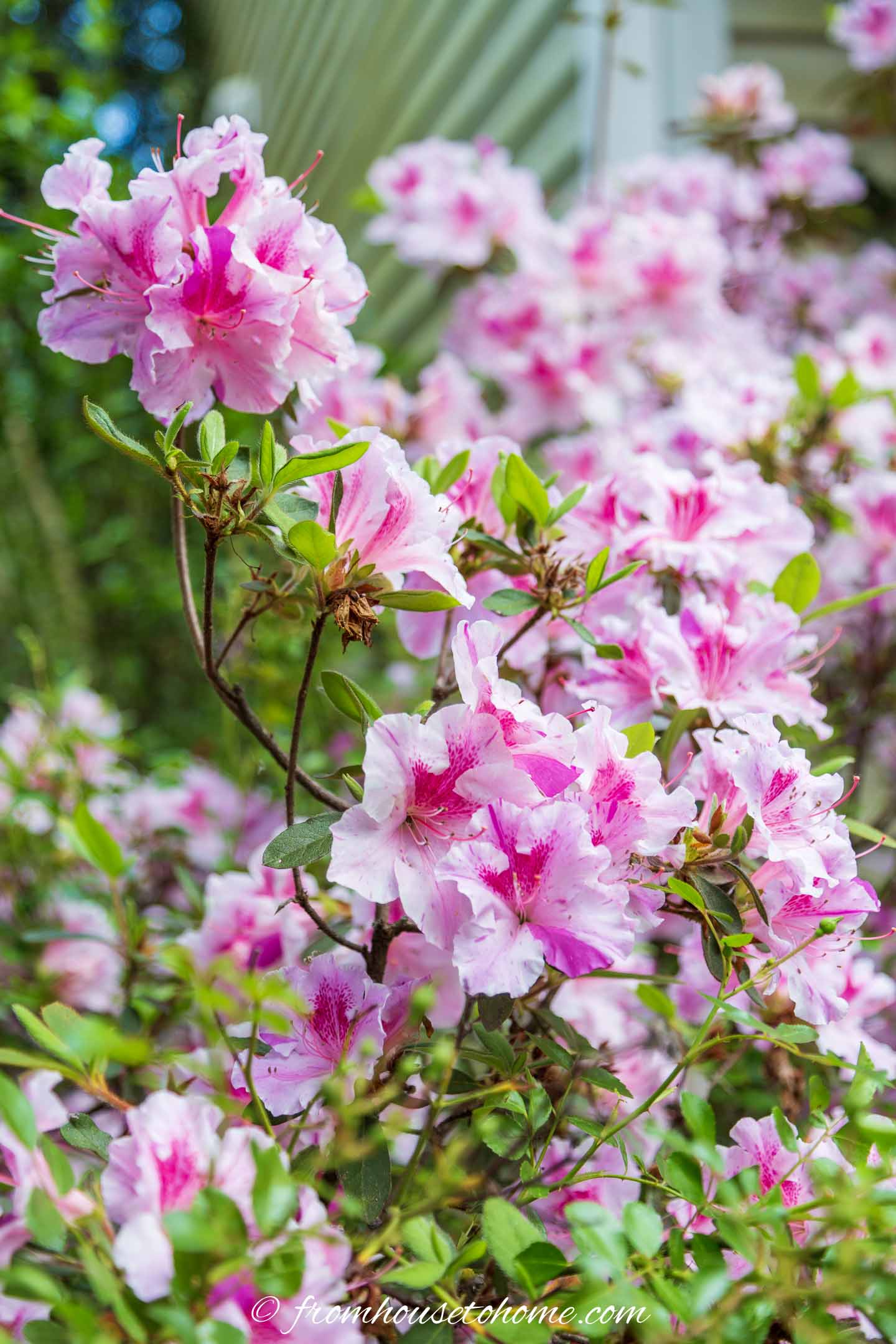
The Encore series is evergreen and not as hardy, but blooms a second time in the fall.
They are available in a wide range of colors.
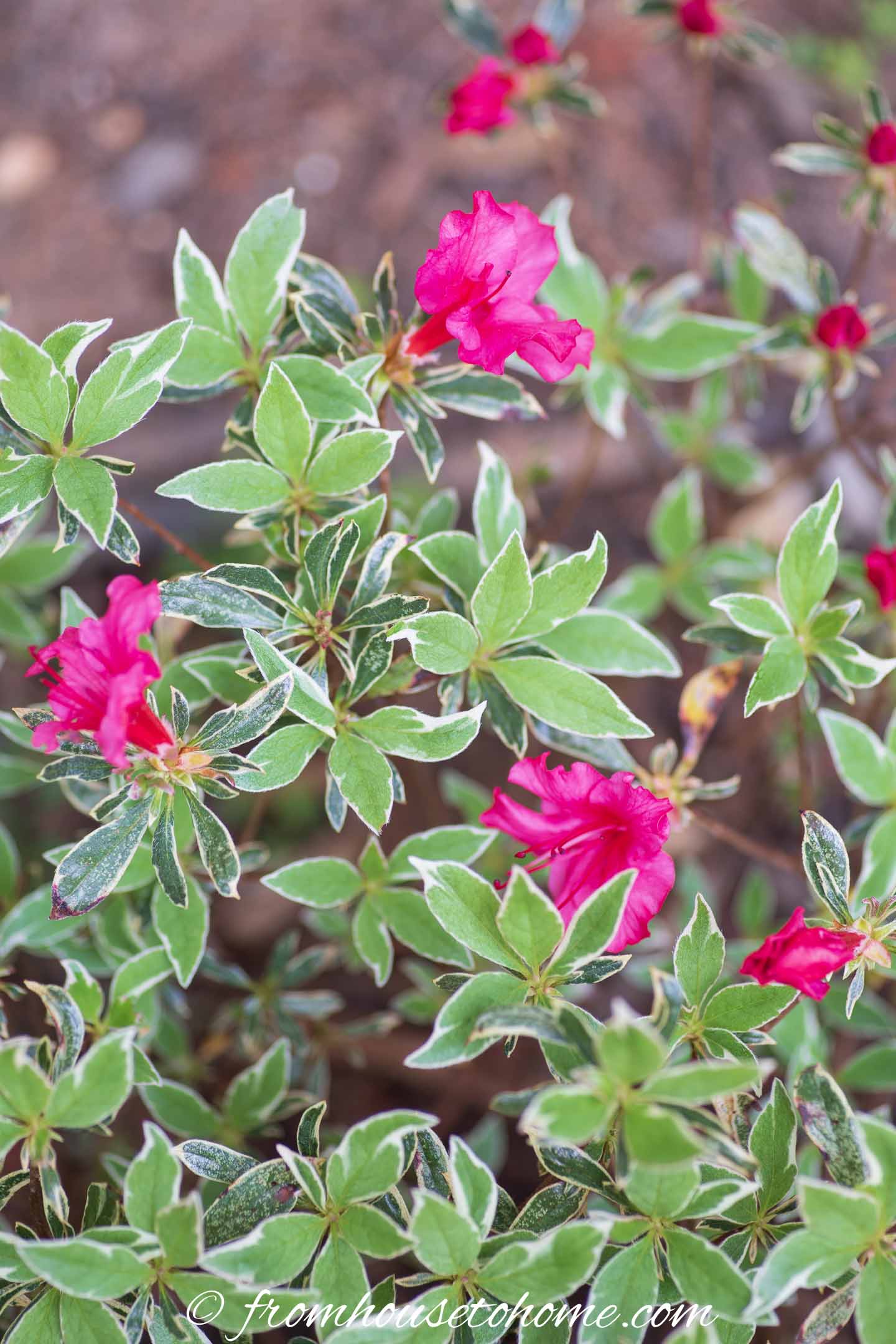
‘Bollywood’ is an evergreen variety that has variegated leaves with pretty red to fuchsia flowers.
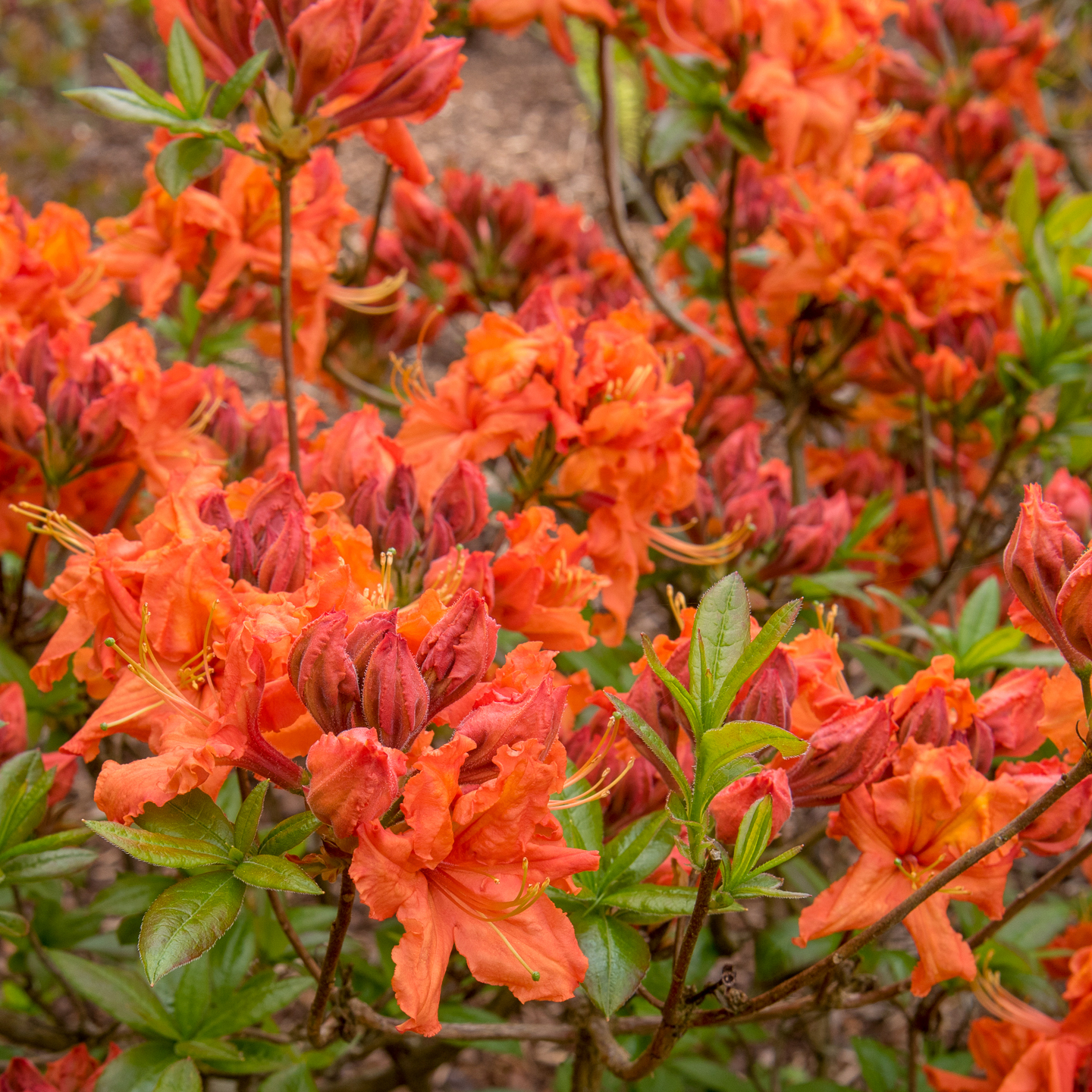
And there are even a few Azaleas with bright orange flowers like this one called ‘Gibraltar’ (you can find it HERE*).
In my opinion, no spring garden should be without these bright, glorious flowering shrubs.
5 | Tree Peony (Paeonia suffruticosa)
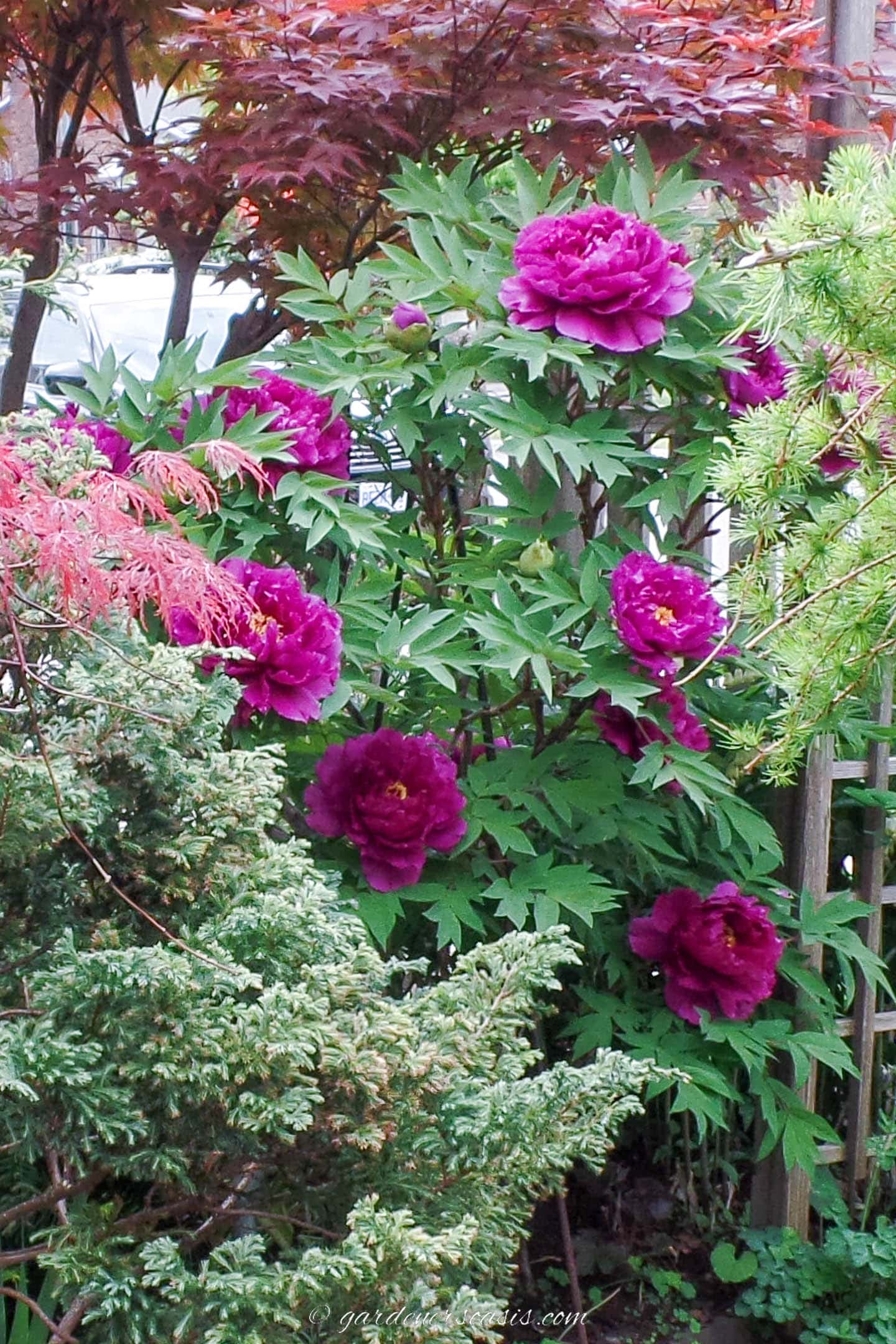
Zones: 4 to 8
Light: Partial shade
Bloom Time: Spring
Height: 3′ to 8′ (depending on the variety)
Spread: 3′ to 6′
Unlike their full-sun cousins (perennial peonies), Tree Peonies (Paeonia suffruticosa) thrive in the dappled shade under trees.
This deciduous flowering shrub likes acidic to neutral soil.
A much tougher plant than it looks, it is definitely low maintenance – requires only regular watering and mulching.
Tree peonies produce huge luncheon plate sized ruffled flowers in mid-spring. I counted 15 blossoms on the tree peony ‘Pluto’ (as seen in the picture above) in my front shade border this year.
Learn more about how to grow tree peonies.
You can find a lot of different varieties for sale (including ‘Pluto’) HERE.
6 | Shade Hydrangeas
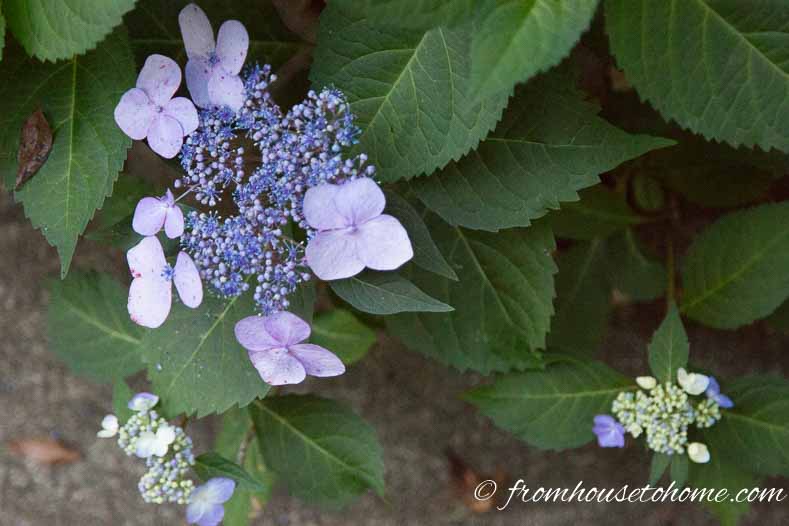
Zones: 3 to 9
Light: Partial shade
Bloom Time: Summer to Fall
Height: 3′ to 5′ (depending on the variety)
Spread: 3′ to 5′
Big green leaves and prolific magnificent blooms describe this entry in our shrubs for shade list.
Hydrangeas, as the name (hydra) implies, need to be kept well watered.
They are deciduous bushes that blossom from July through September.
The pruning care requirements are dependent on the type.
Hydrangea macrophylla (bigleaf, hophead, lacecap, and florist hydrangea) should only have dead and weak stems removed immediately after the blooms fade. Otherwise, it will not flower next year.
It blooms on old wood, so resist the urge to trim the dead looking stems in the spring!
With the exception of the white bloomers, and some new introductions (e.g. ‘pistachio’), the color of Hydrangea macrophylla flowers is dependent on the pH of the soil—blue in acidic and pink in alkaline.
Buy Hydrangea macrophylla HERE.*
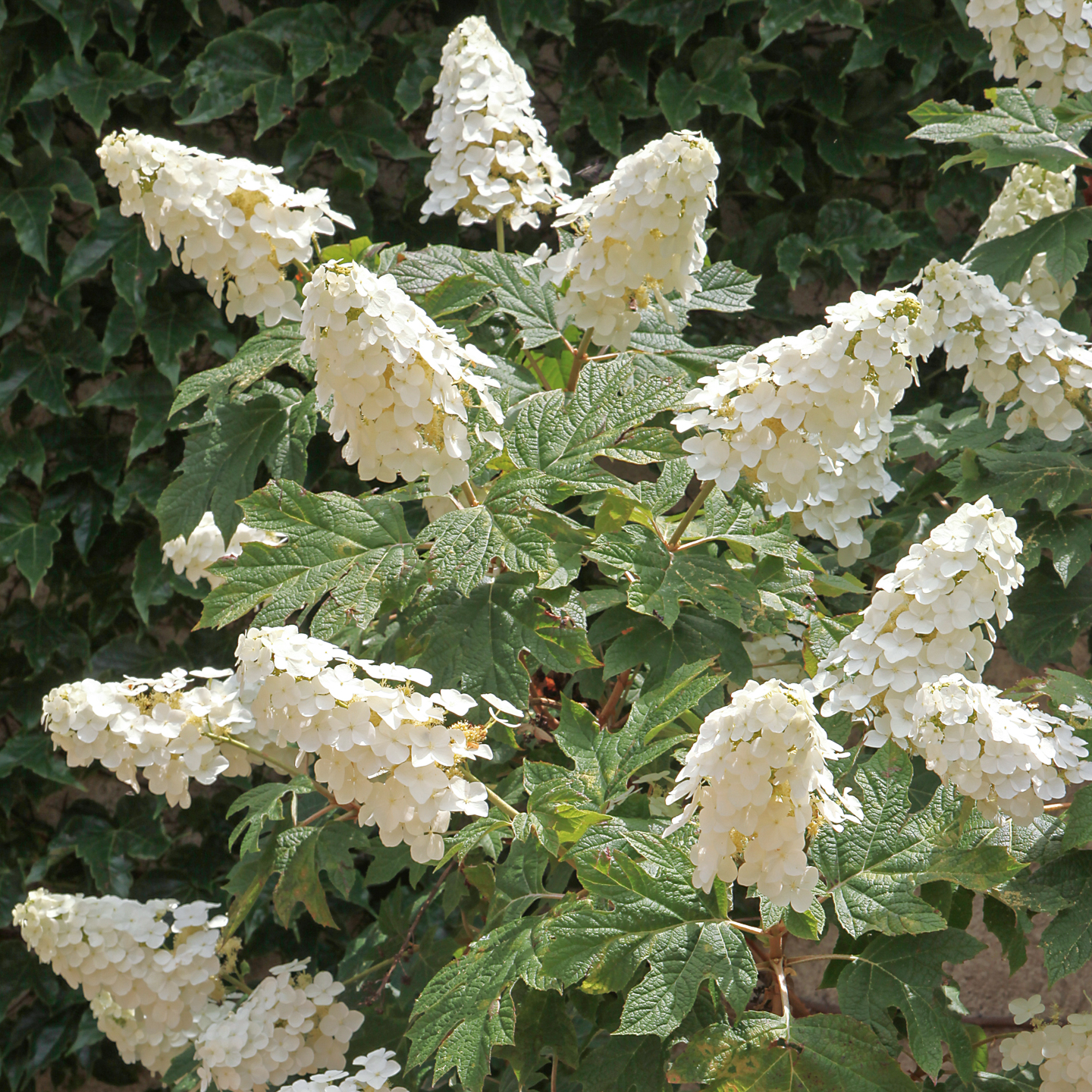
Oakleaf Hydrangea (Hydrangea quercifolia) is an understory plant indigenous to the southeastern United States and is poplar in the home garden border for its all-season interest.
Its distinctive oak-shaped leaves turn bright red in the fall and the exfoliating bark of its stems is interesting in the winter and early spring.
It likes acidic soil and needs no pruning.
Note: While most Hydrangea varieties do well in the shade, Hydrangea paniculata grows better in the sun, so be sure to check what kind you are buying.
Get some tips on how to get the best blooms from your Hydrangea.
7 | Camellia

Zones: 6 – 10
Light: Partial shade to shade
Bloom Time: Fall, winter, or spring (depending on the variety)
Height: 18″ to 25′ tall
Spread: 18″ to 8′ wide
Camellias are another of the evergreen shrubs that grow well in the shade.
The big difference with this bush is the time of year that it flowers. Depending on the variety, it can bloom any time between October and April. And those blooms are stunning!
Even better? Once established, Camellias require very little maintenance to keep them healthy.
8 | Daphne
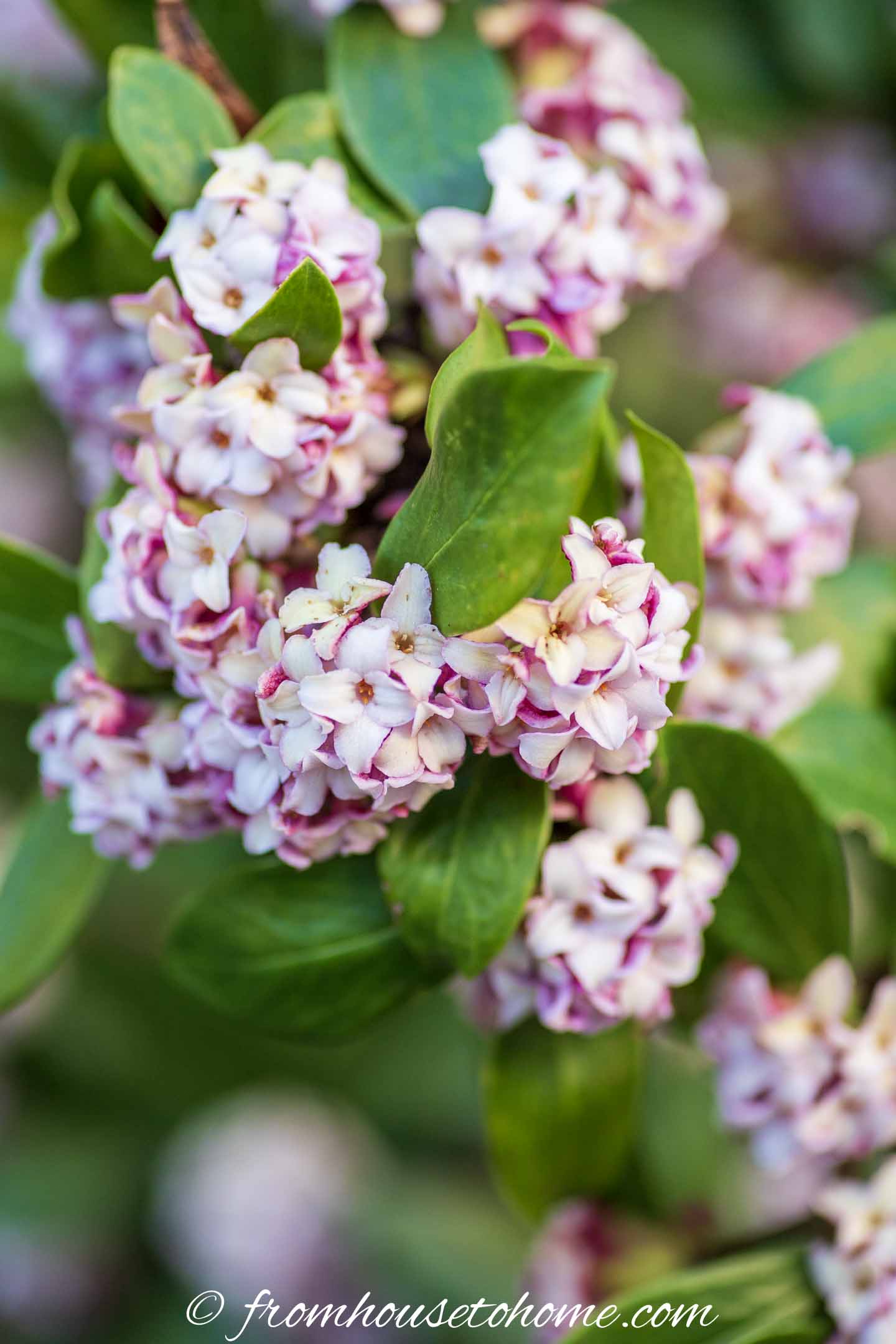
Zones: 5 to 10
Light: Shade to part shade
Bloom Time: Late winter to early spring
Height: 3′ to 5′
Spread: 3′ to 5′
Next on our list of shrubs for shade is Daphne.
Most varieties have evergreen leaves and produce pink or white fragrant blooms in late winter or early spring.
In my garden, it’s one of the plants that lets me know spring is coming. When I open the front door and can smell the Daphne’s perfume (even before I see the flowers), I know winter is almost over!
It can be a little tricky to get started, but once it is established, Daphne is a very low maintenance plant.
Find out more about growing Daphne.
9 | Virginia Sweetspire (Itea virginica)
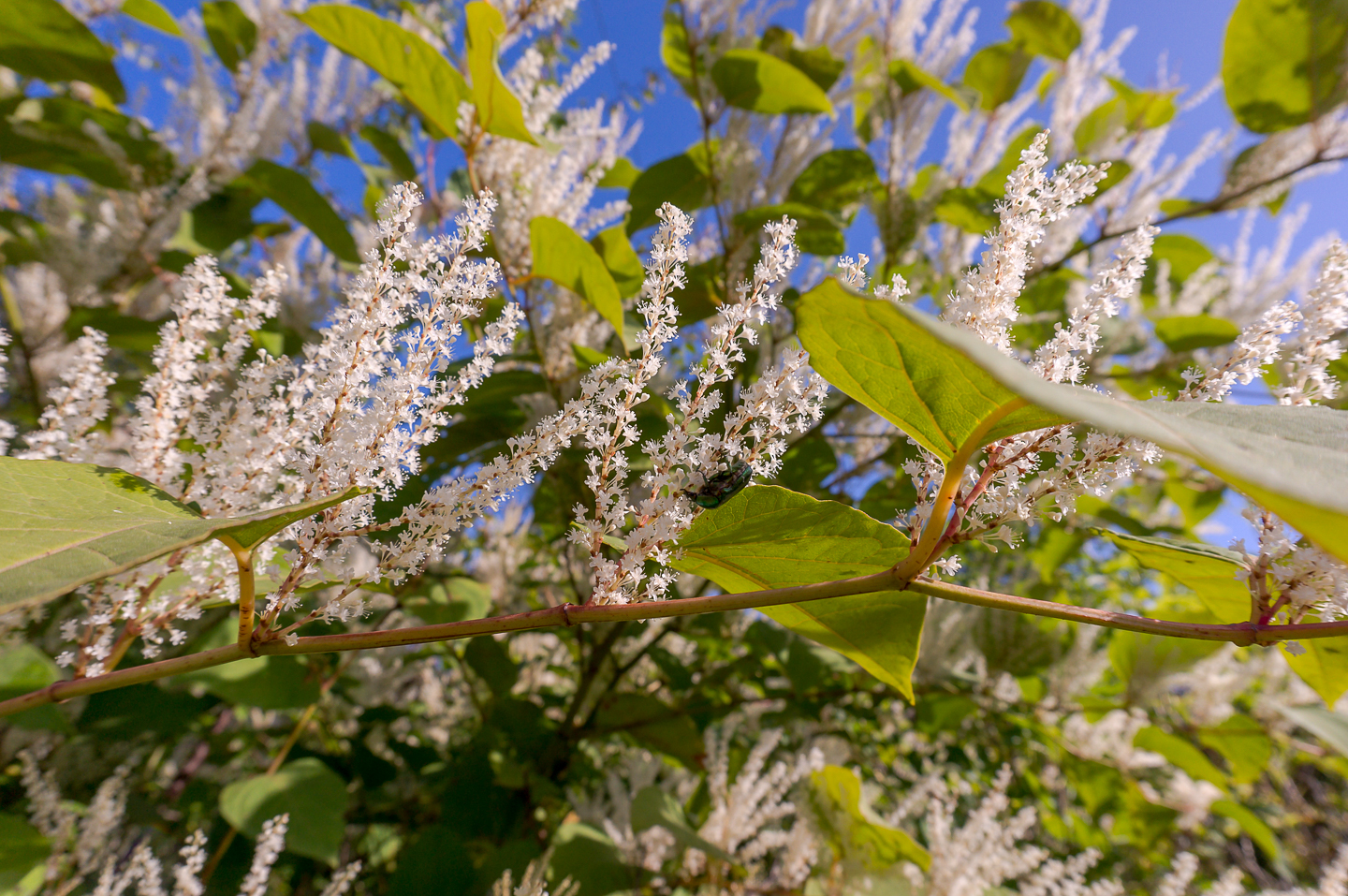
Zones: 5 to 9
Light: Shade to sun
Bloom Time: Late spring, early summer
Height: 3′ to 8′ (depending on the variety)
Spread: 3′ to 8′
Virginia Sweetspire is a native shrub with long fragrant white flowers (that pollinators love!) and gorgeous autumn foliage in the fall.
It is easy to grow in pretty much any garden conditions – dry, wet, poor soil, shade or sun.
Look for the dwarf variety ‘Little Henry’ if you want one that doesn’t take up a lot of space in your garden.
10 | Viburnum
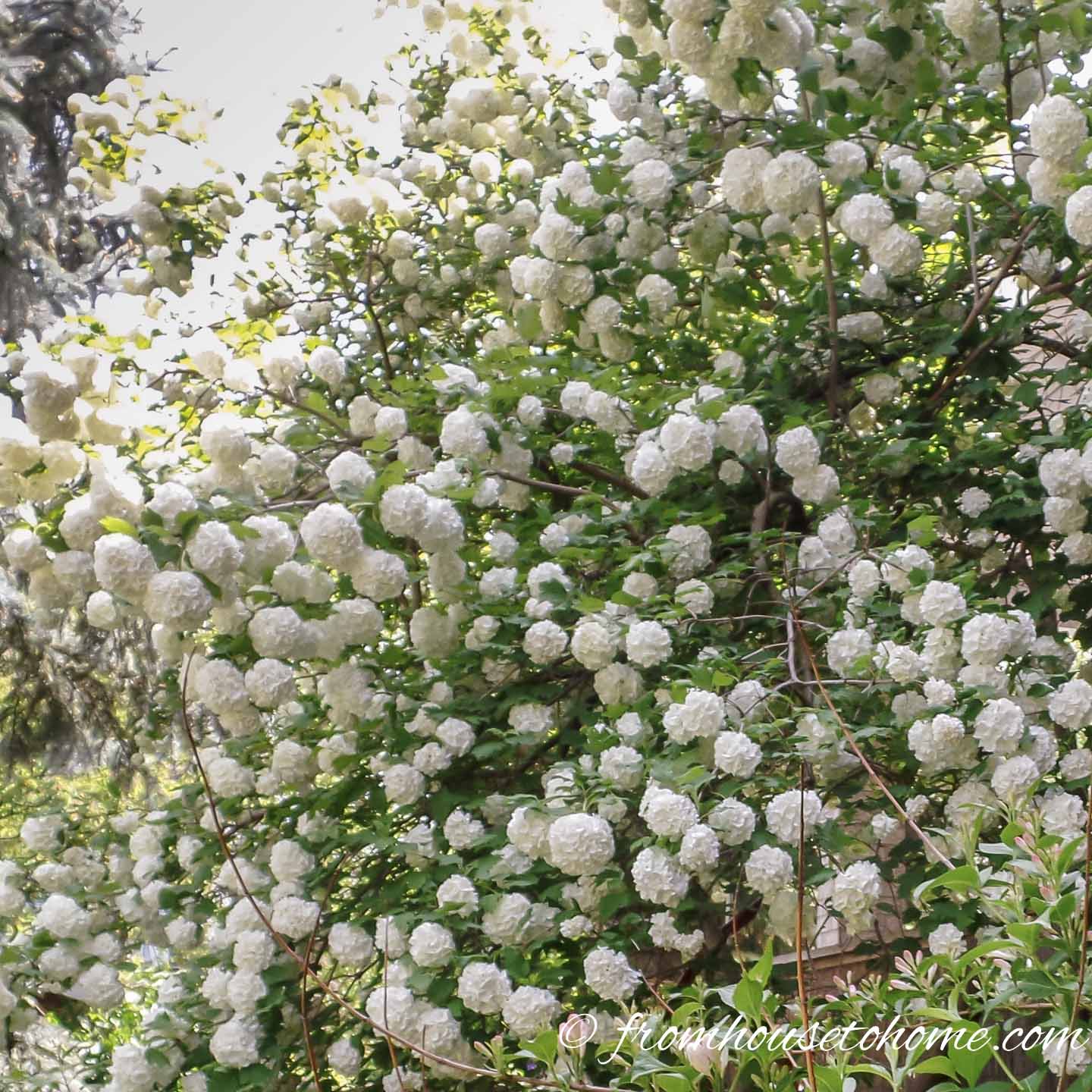
Zones: 2 to 9
Light: Partial shade
Bloom Time: Spring
Height: 1′ to 20′
Spread: 6′ to 10′
Viburnum is a very versatile deciduous shrub that always seems to work itself in to my garden plans.
With its huge white blooms that look like snowballs hanging off the branches, it definitely makes a statement!
For planting under trees, look for smaller varieties (such as Korean Spice) that won’t outgrow the space.
11 | Spotted Laurel (Aucuba japonica)

Zones: 7 to 9
Light: Shade
Bloom Time: Spring
Height: 6′ to 10′
Spread: 6′ to 10′
Spotted Laurel is a broad leaf evergreen bush that makes a great hedge or back-of-the-border shrub in deep shade.
It produces clusters of maroon flowers in the spring that turn into bright red berries if you have both a male and female version planted together.
But most people grow it because of its beautiful foliage.
Even without the flowers and berries, this shrub’s gorgeous green and yellow leaves add interest to your deep shade garden.
12 | American Witch Hazel (Hamamelis virginiana)
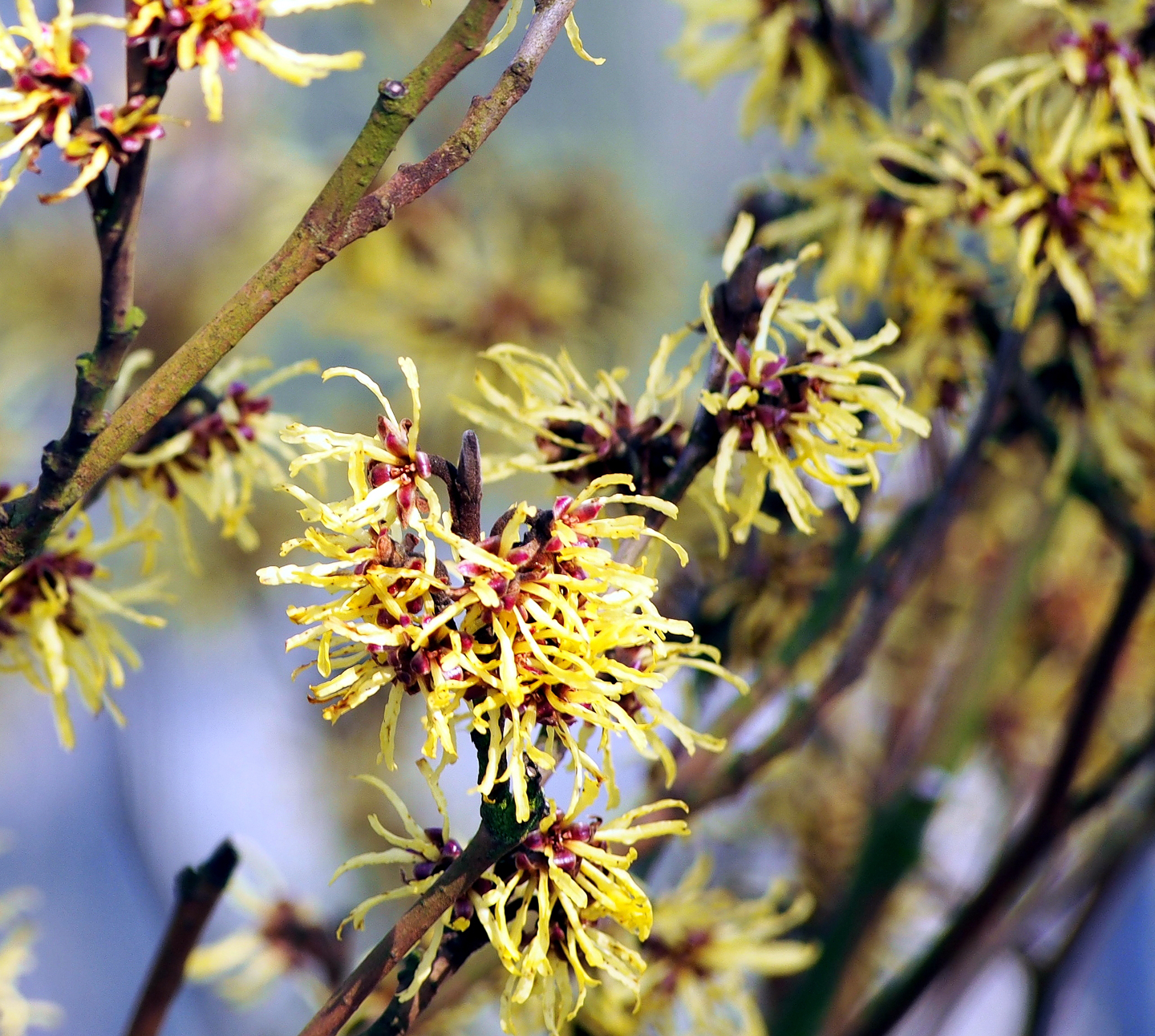
Zones: 4 to 8
Light: Partial shade
Bloom Time: Late fall to early winter
Height: 10′ to 20′ tall
Spread: 15′ to 20′ wide
American Witch Hazel (Hamamelis virginiana) is a large deciduous shrub with clusters of citrus-scented yellow flowers that appear in the late fall and early winter.
As the name suggests, it is a native bush to North America. And like many native plants, it is low maintenance, fairly deer resistant and disease resistant once it is established.
Although Witch Hazel grows quite large naturally, it can be pruned to keep it smaller. This should be done before summer starts to prevent cutting off the buds.
13 | Red Twig Dogwood (Cornus Alba)

Zones: 3 to 8
Light: Partial shade to shade
Bloom Time: Spring
Height: 8′
Spread: 8′
The red twig dogwood (Cornus Alba) is a shade loving shrub with very attractive variegated gray-green deciduous leaves that provide a bright light in the shaded border.
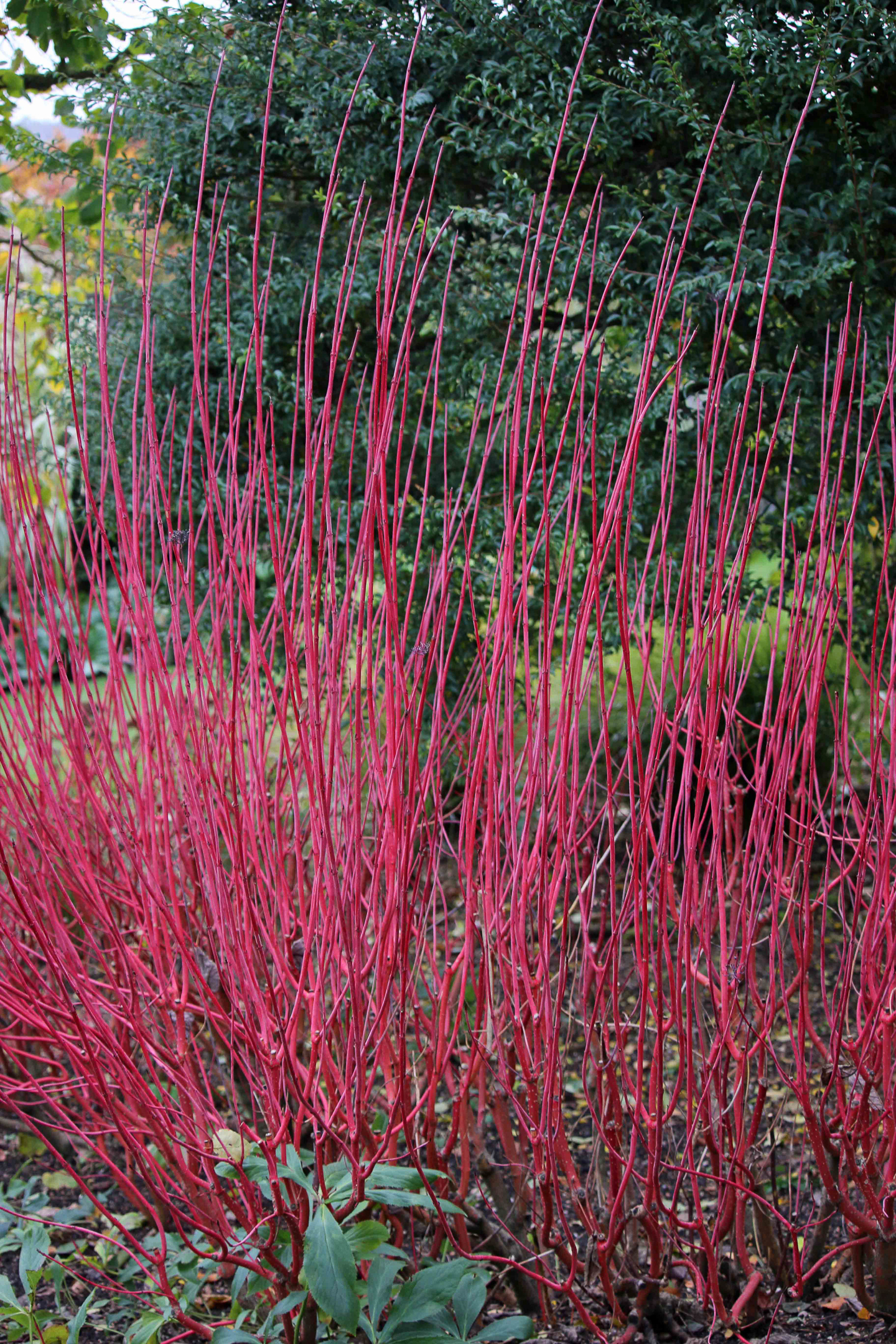
It has insignificant small white flowers in the spring, followed by white berries, but the compelling reason to plant this shrub is for the winter interest of its red stems.
It can be most appreciated if planted in front of a window where the splash of red in the snow only needs a cardinal to complete a perfect vignette.
The red twig dogwood can be kept small and brighter by pruning out 1/3 of the old stems in the winter, otherwise, it will reach 8’ tall.
Foliage Bushes
While flowering bushes are beautiful, to have a lush, relaxing shade garden, shrubs that are known for their foliage are also a must.
With the different leaf textures and colors, they add interest to your yard for the whole growing season.
14 | Japanese Maples (Acer palmatum)
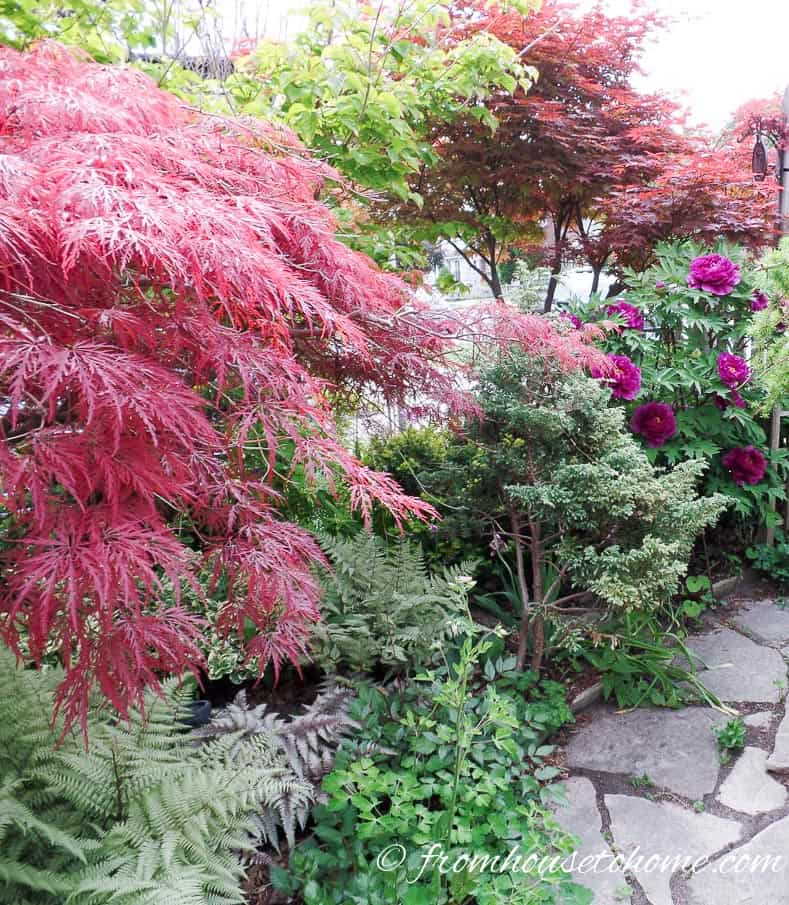
Zones: 5 to 9
Light: Partial shade
Bloom Time: Foliage only
Height: 6′ to 25′ (depending on the variety)
Spread: 6′ to 25′
Japanese Maples (Acer palmatum) are dwarf trees that create outstanding focal points in the shady border under trees.
My front border is anchored by two other Acers, one at each corner of a curved path.
Although they are different varieties of Japanese maple, the foliage provides focal interest and intense color.
They like dappled shade and do not like to dry out, so provide a deep layer of mulch.
Prune, if necessary, in summer after the leaves are established.
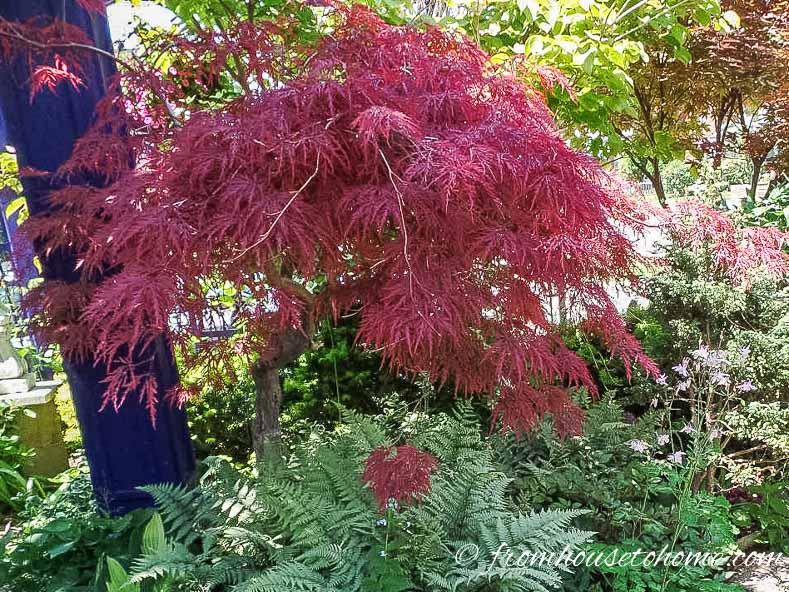
I love the way my cut leaf ‘Crimson Queen’ forms a canopy of scarlet lacy foliage from spring until fall. Even in the winter, the branches arch dramatically.
Find out more about growing Japanese Maples.
15 | Yews (Taxus)
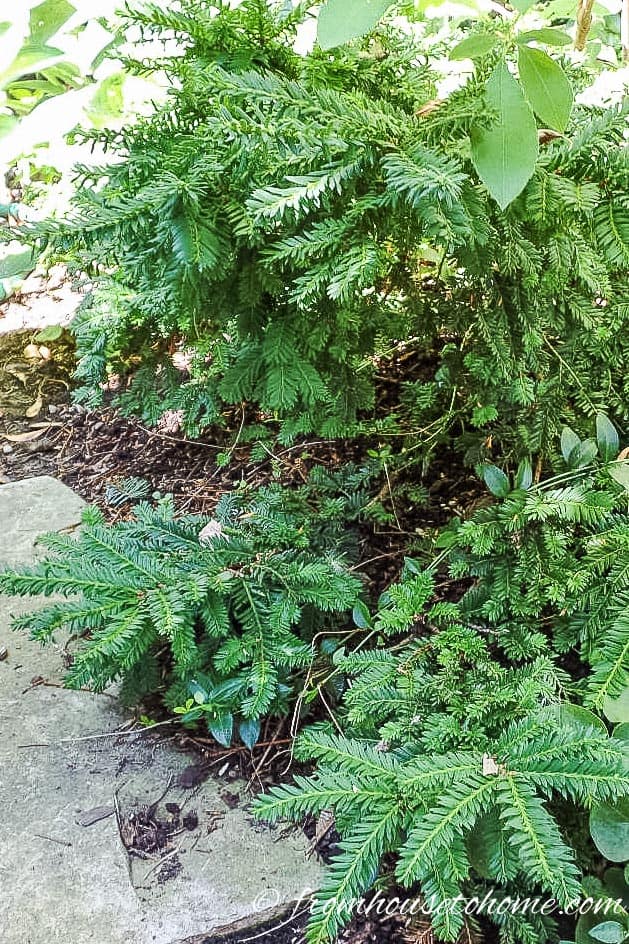
Zones: 4 to 9
Light: Partial shade
Bloom Time: Foliage only
Height: 1′ to 25′ (depending on the variety)
Spread: 3′ to 25′
Yews (Taxus) are very reliable drought tolerant evergreens for shade that have inch long needles and red berries in the fall.
Unlike conifers, they don’t mind being pruned, so their size and shape can be easily maintained.
But if you don’t want to do diligent pruning, avoid ‘Hills’,’ Hicks’, and ‘Browns’ yews because they grow too large for a border.
Yews provide all season interest and stand out in the winter garden as a green respite among the deciduous branches.
It should be noted that the berries and needles are poisonous to humans and animals.
Yews generally do not like wet conditions.
Taxus x media ‘Tauntonii’ is a dwarf yew that is perfect: it grows slowly, is very tidy and has a very dark green hue.
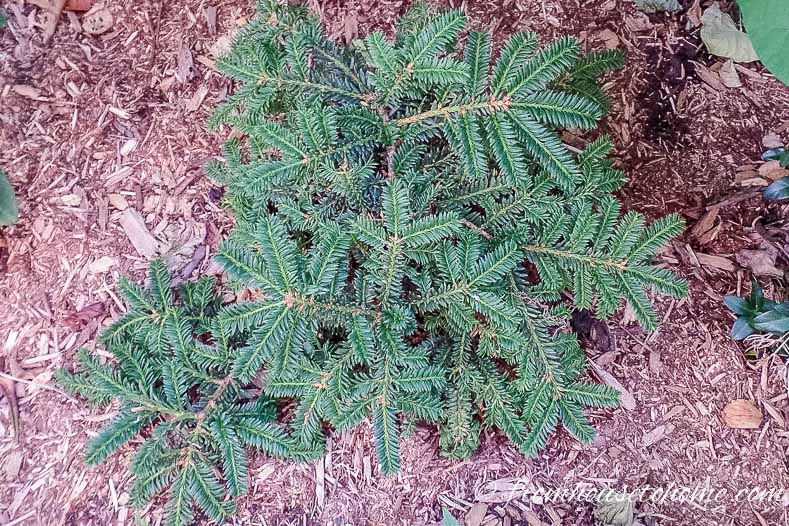
Taxus cuspidate ‘emerald spreader’ is another good bright green choice that gets denser if pruned annually.
Taxus Canadensis is a tough, small native shrub that will grow in dense shade.
16 | Boxwood (Buxus)
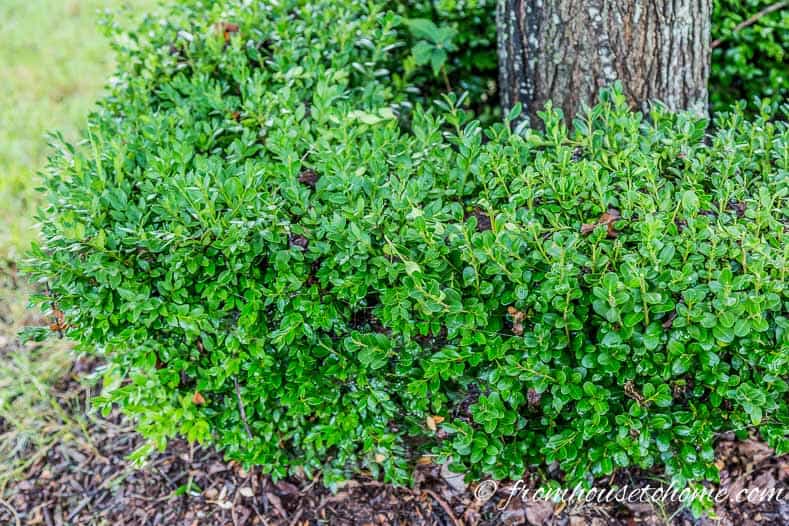
Zones: 4 to 10
Light: Full shade to full sun
Bloom Time: Foliage only
Height: 1′ to 12′ (depending on the variety)
Spread: 2′ to 8′
The next plant on our list of shade shrubs is Boxwood.
We most often associate Boxwood (Buxus) with clipped hedges and balls in formal gardens.
However, it is such an easy plant to grow I think it deserves a place in any kind of border, especially since it is evergreen and grows so well under trees.
Adequate water and 3” of mulch take care of its maintenance needs.
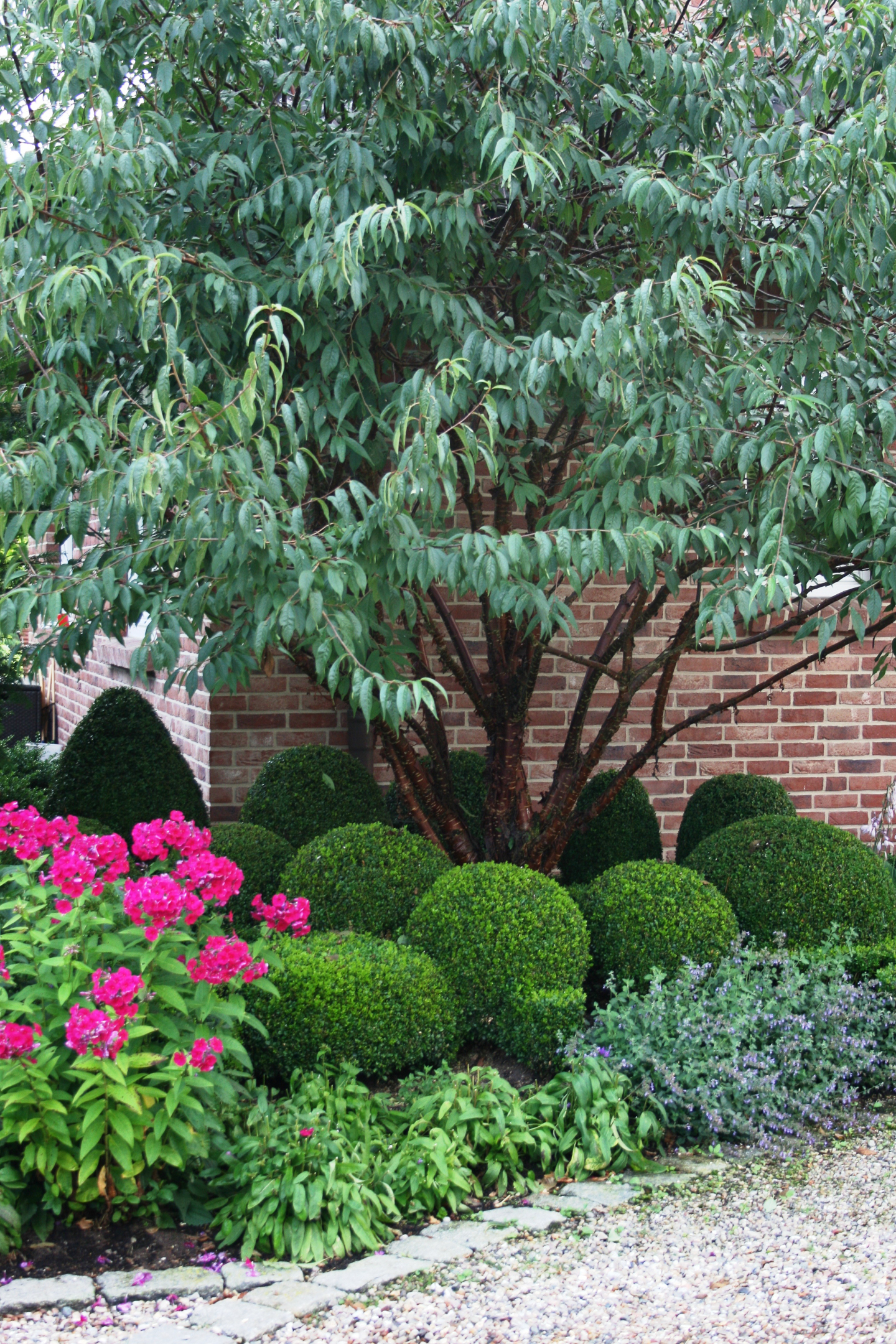
Aesthetically, Buxus looks much better pruned so that its small evergreen leaves become denser.
It grows slowly, so once the desired shape is established it only needs an annual shearing.
17 | Anise (Illicium parviflorum)
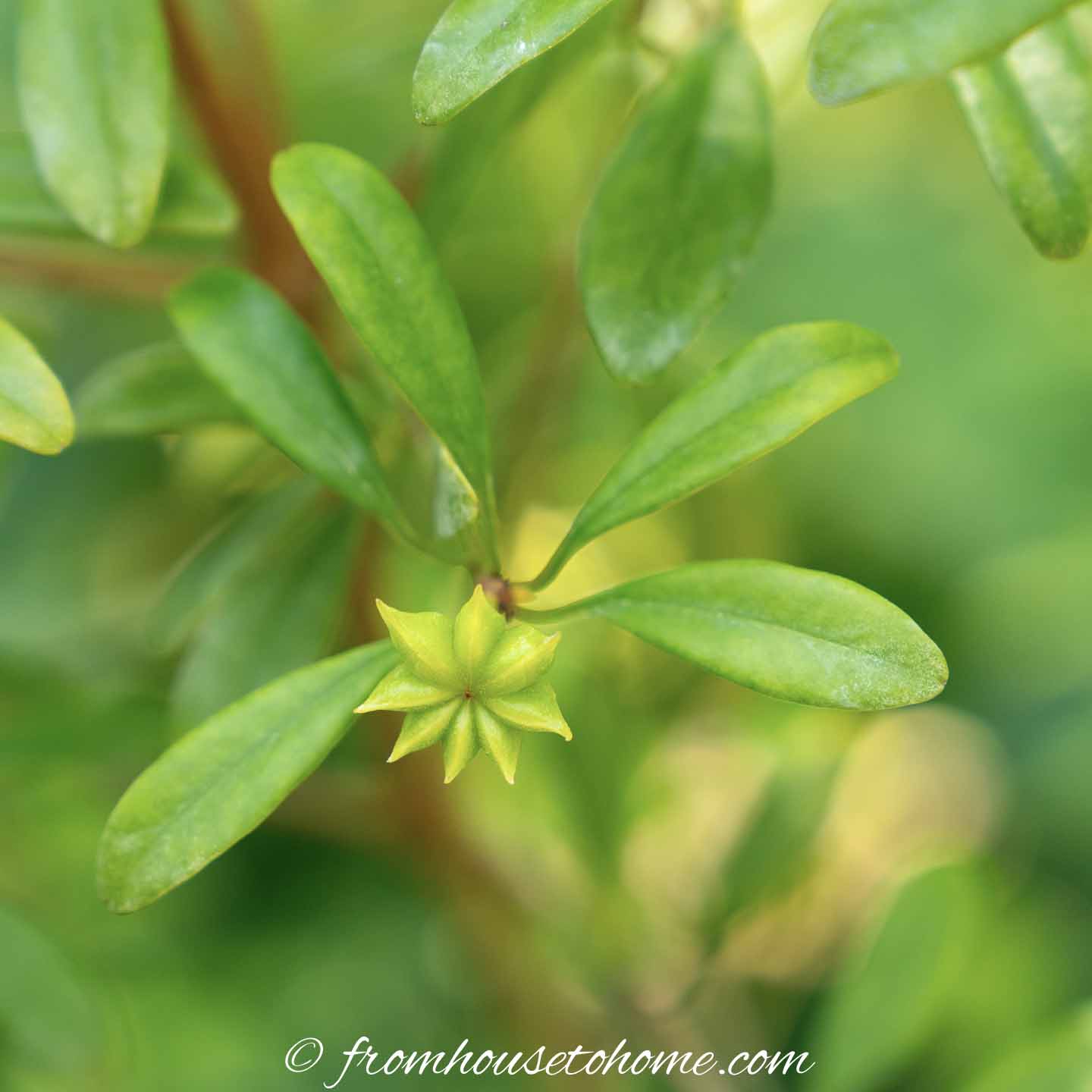
Zones: 7 to 10
Light: Shade to part shade
Bloom Time: Spring
Height: 5′ to 15′
Spread: 5′ to 10′
The last of our bushes that grow in shade is Anise.
With its heat resistance, yellow-green evergreen leaves and small star-shaped fruit, it’s a stand out in the Southern shade garden.
Anise is an easy to care for bush that likes moist soil but will tolerate some drought once established.
Other shade plants you might like
- The best evergreen shrubs for shade
- 10 tall flowering perennials that bloom in the shade
- 21 ground cover perennials for shade
- The best blue flowering annuals for shade
Do you have comments or questions on our list of shade loving shrubs? Tell us in the section below.
Pin It So You Don't Forget It!

This post was originally published on March 28, 2020 but was updated with new content on August 19, 2023.

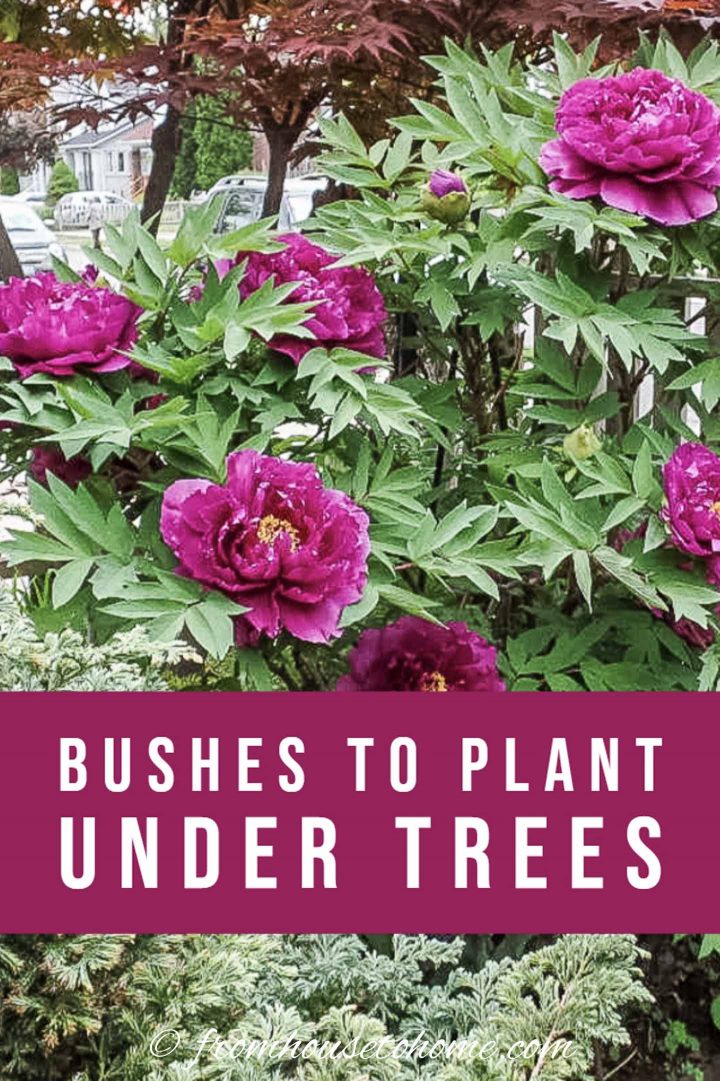
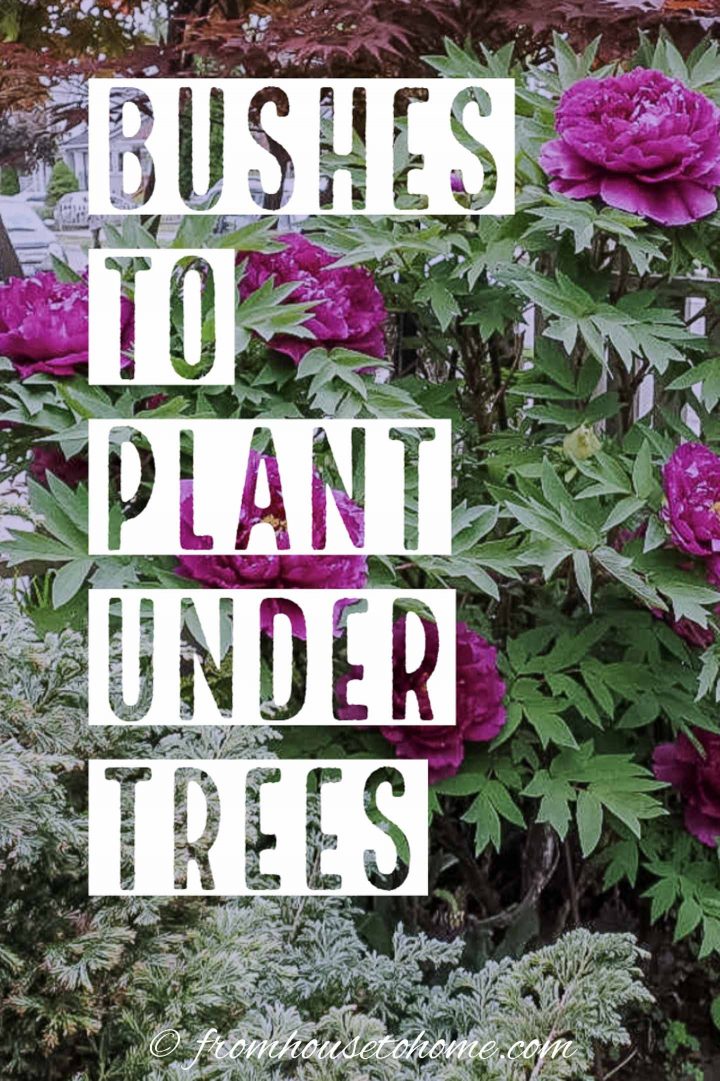
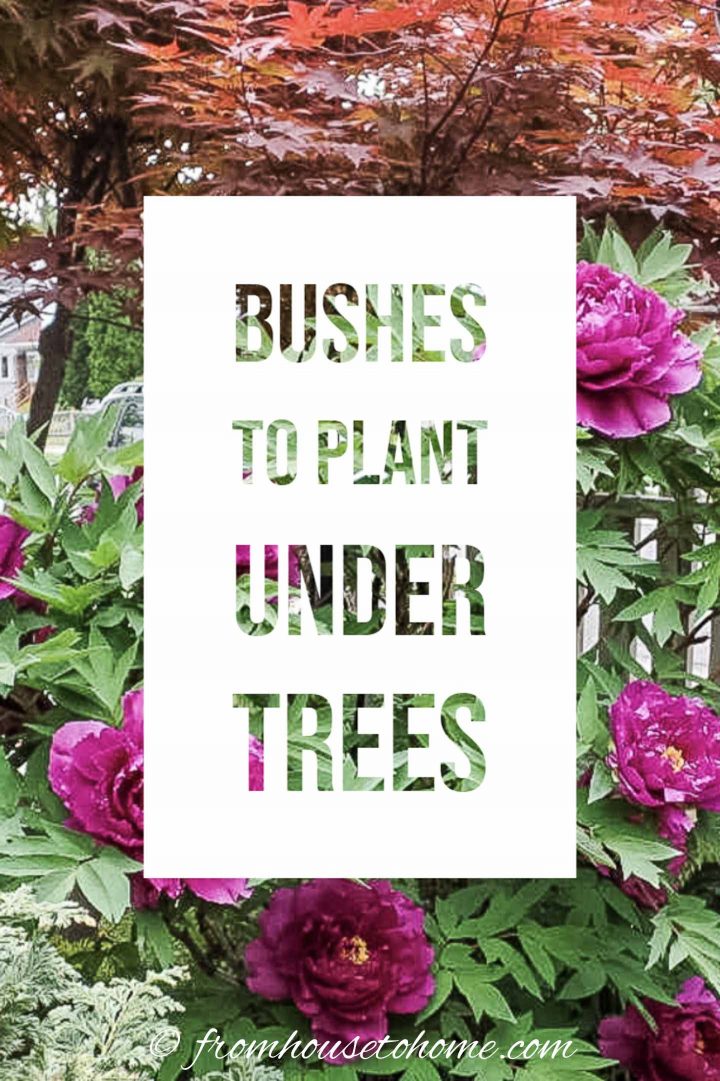

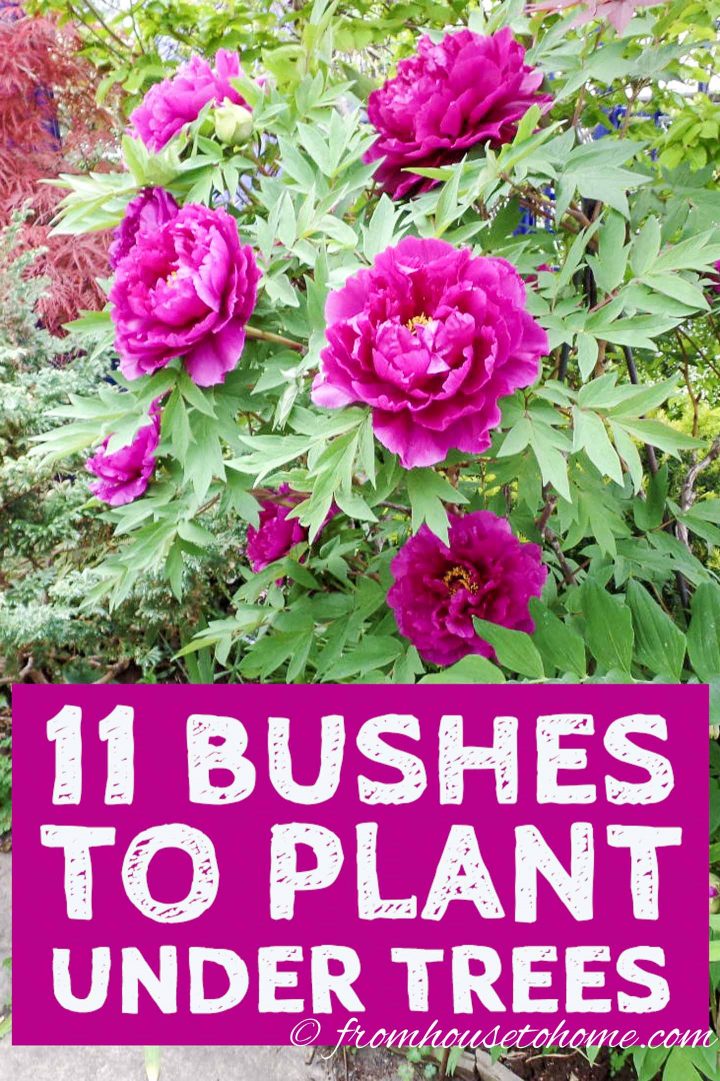
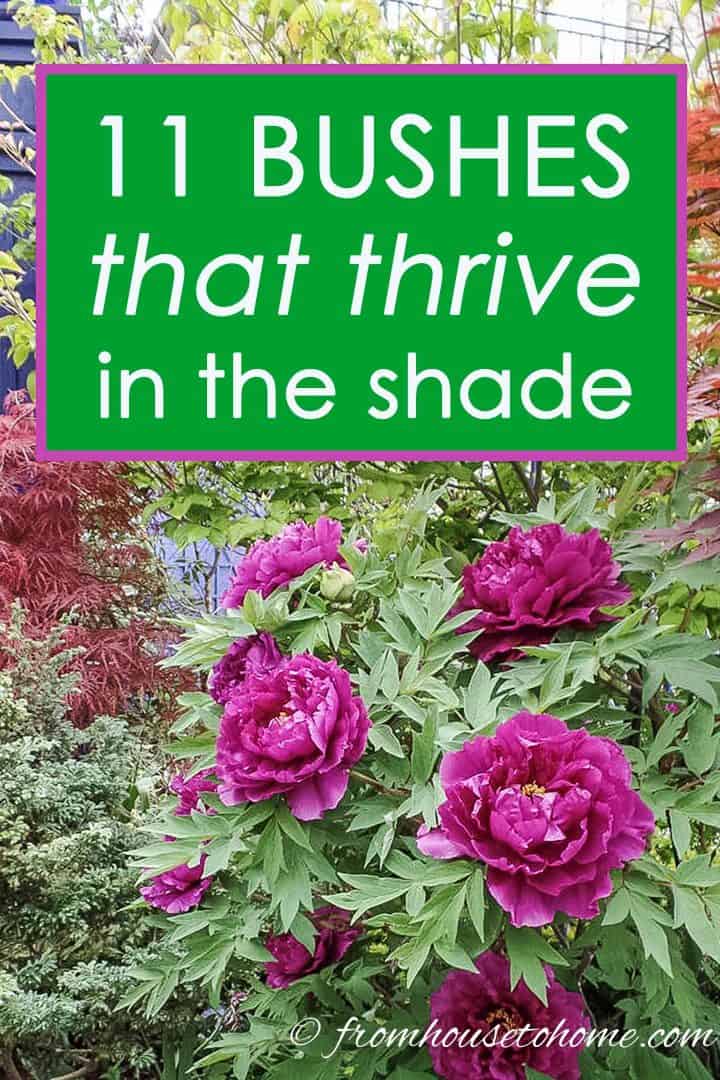
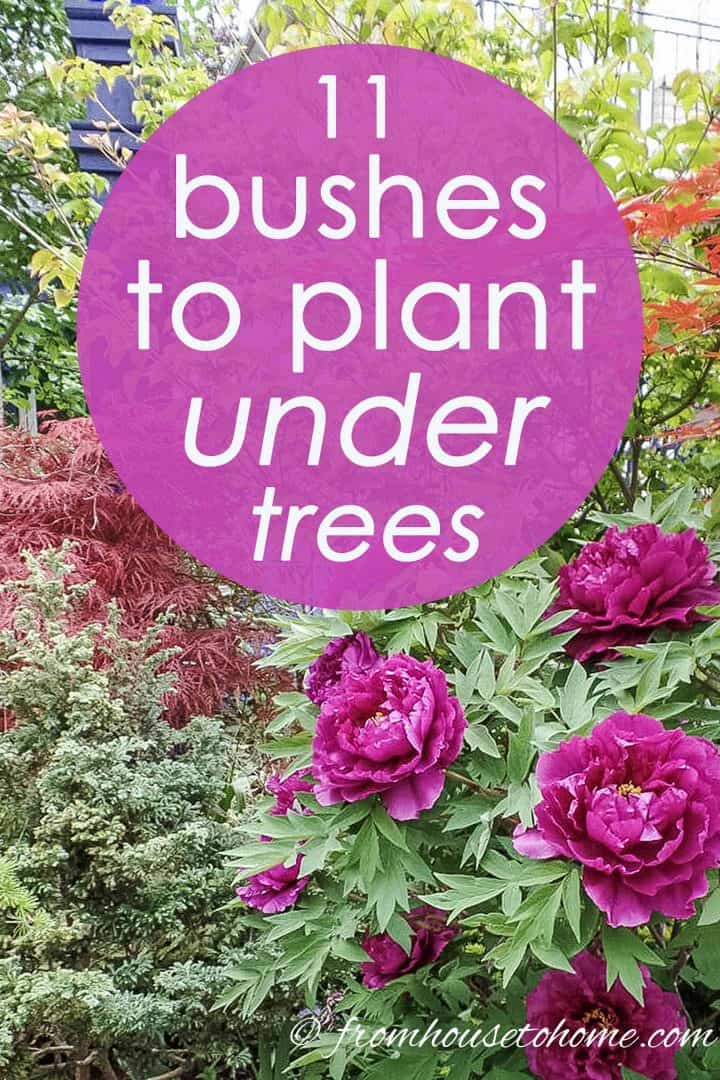


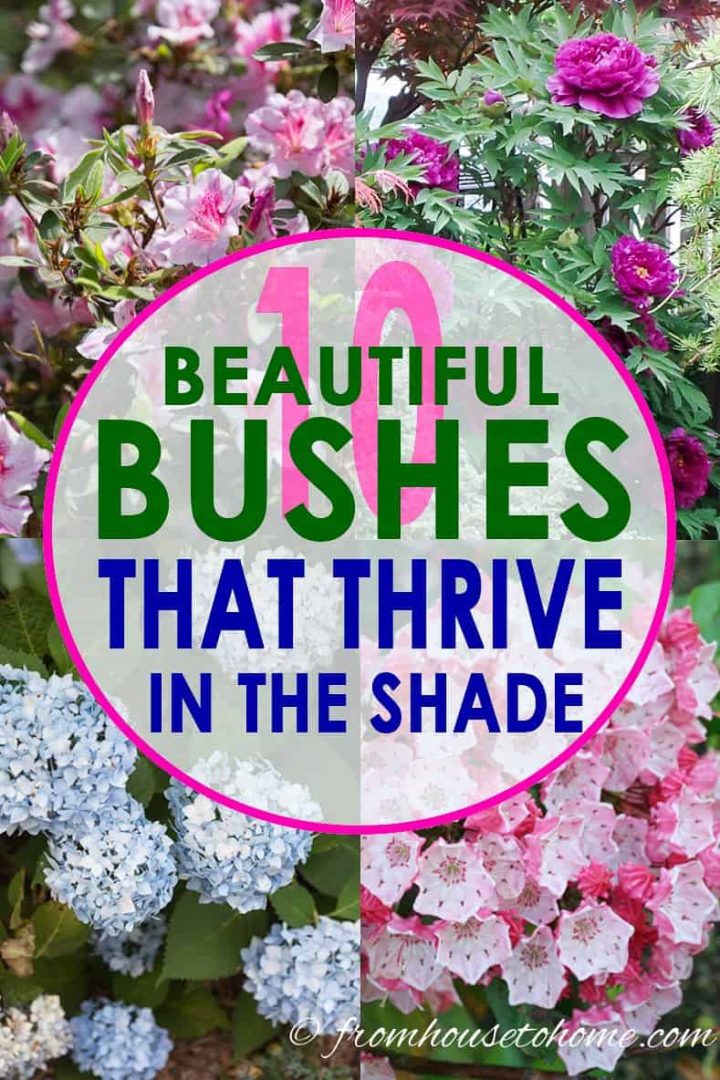
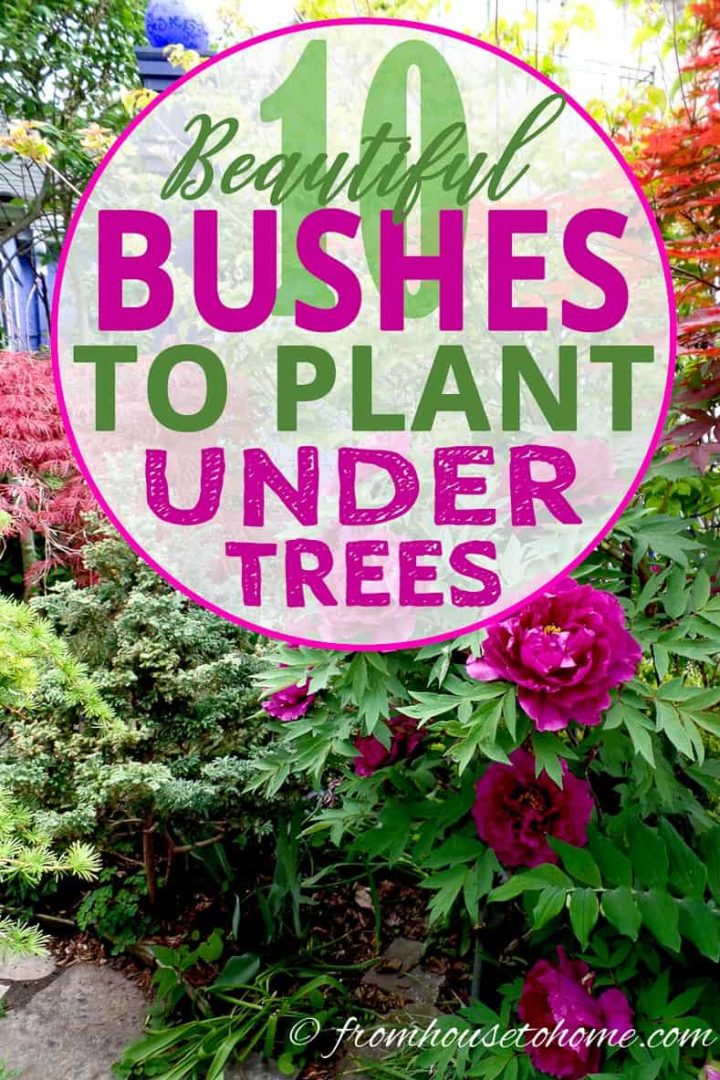
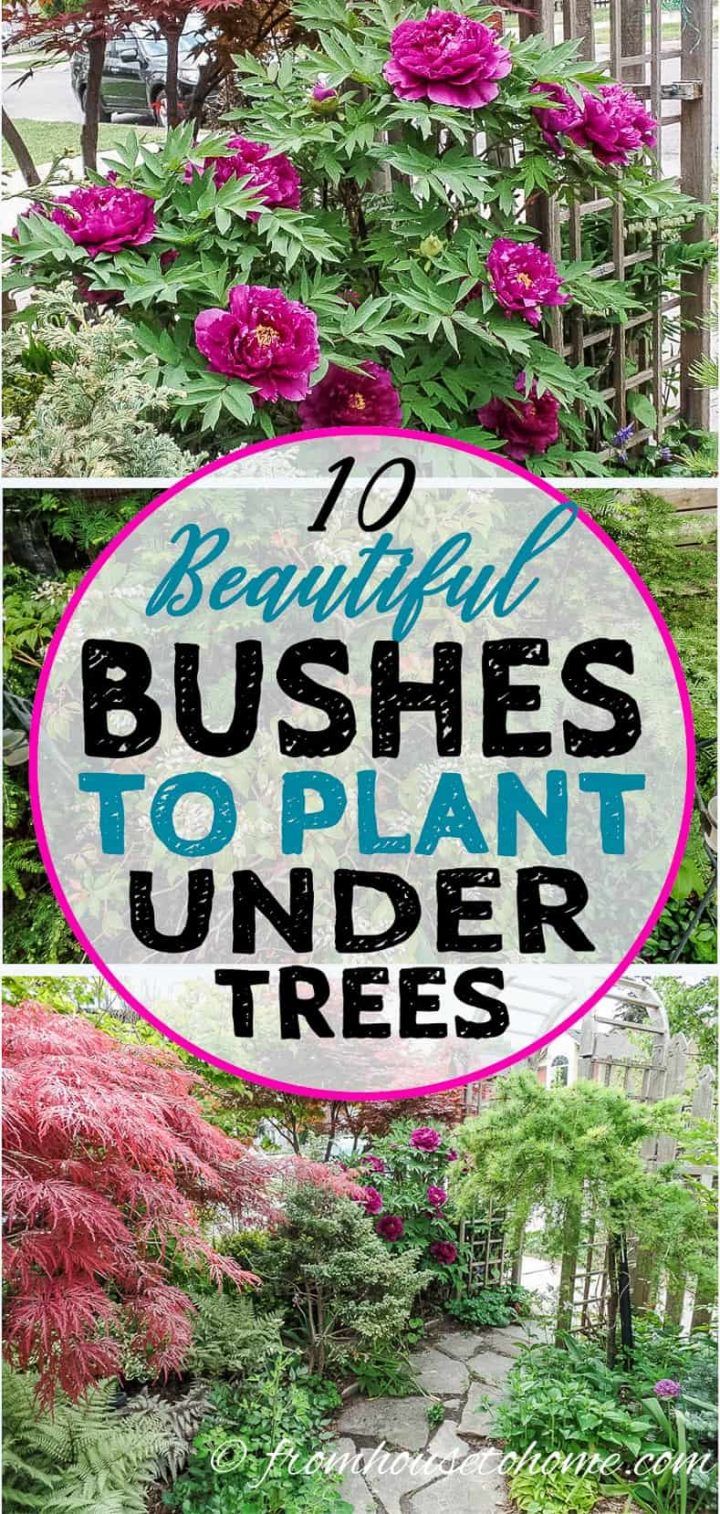
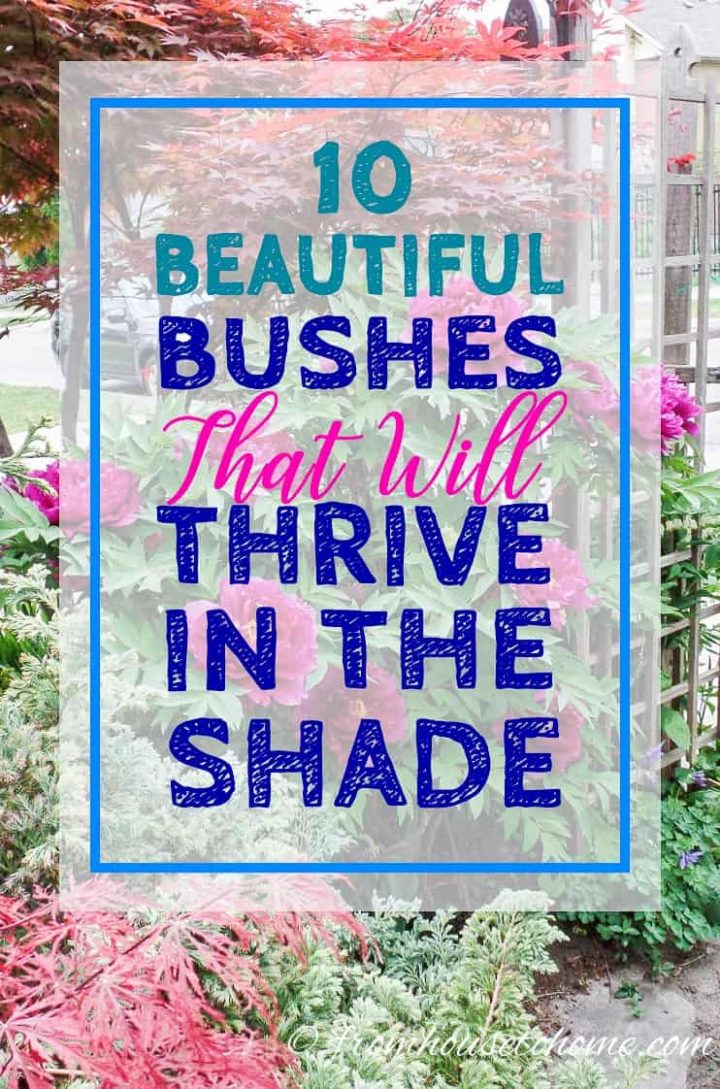
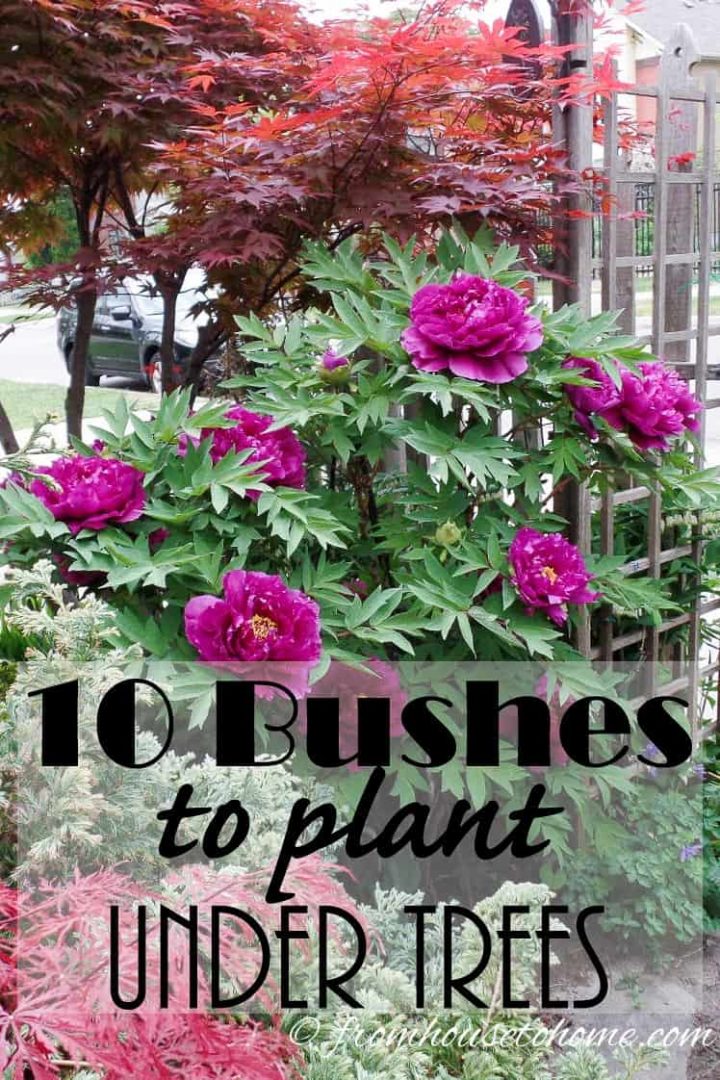
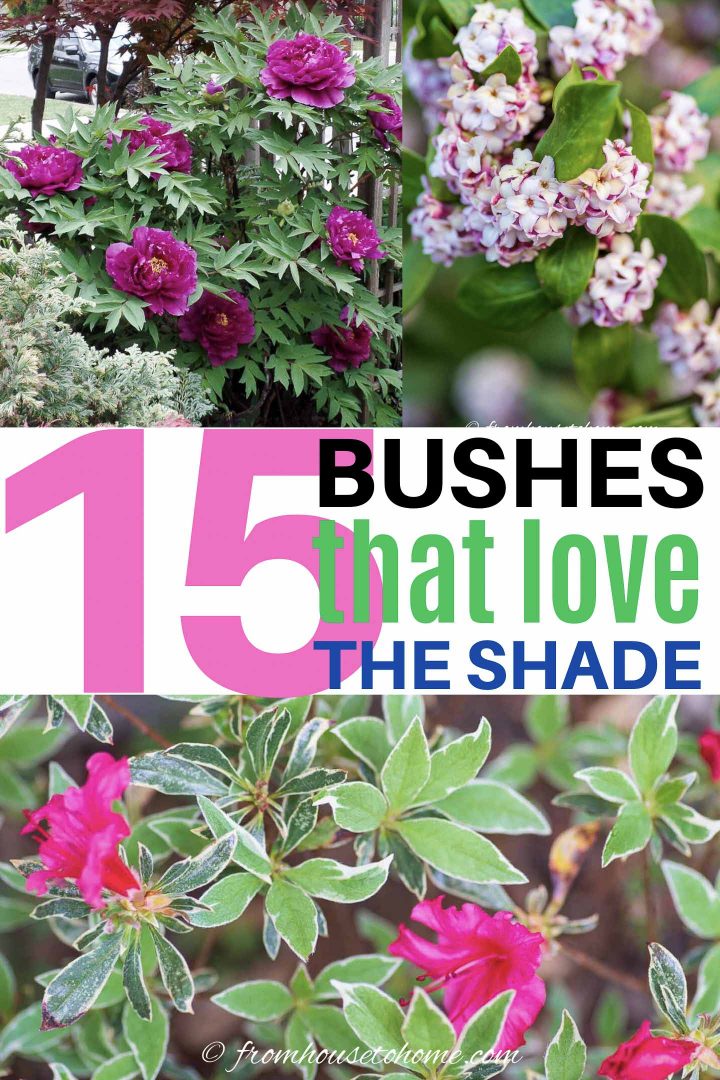
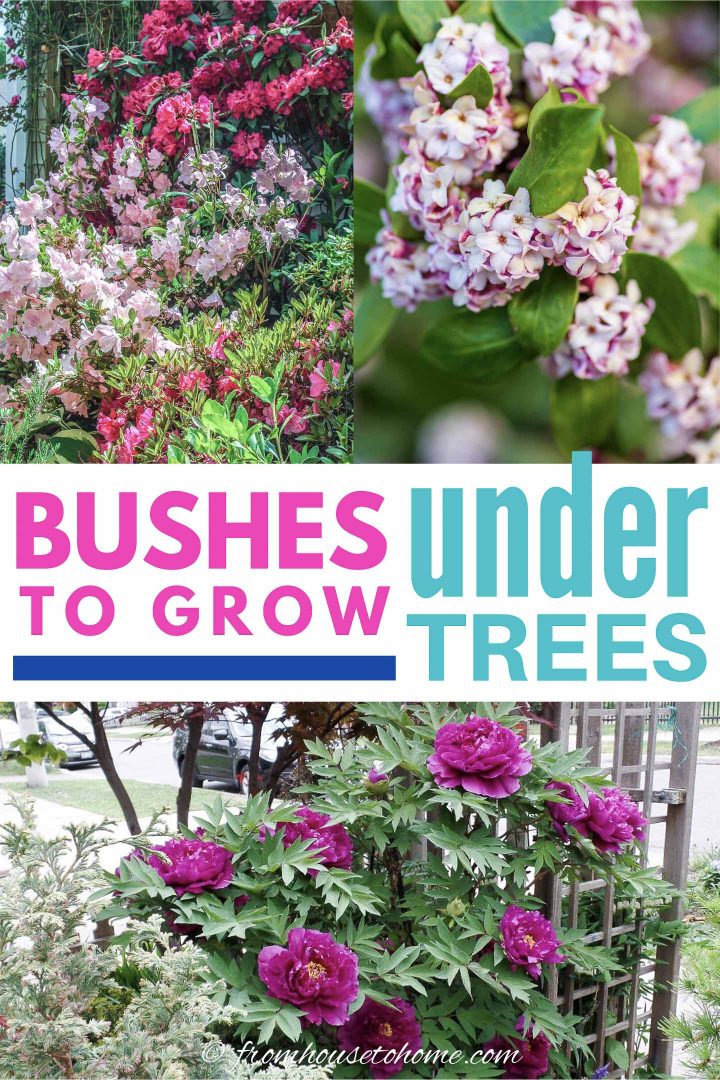
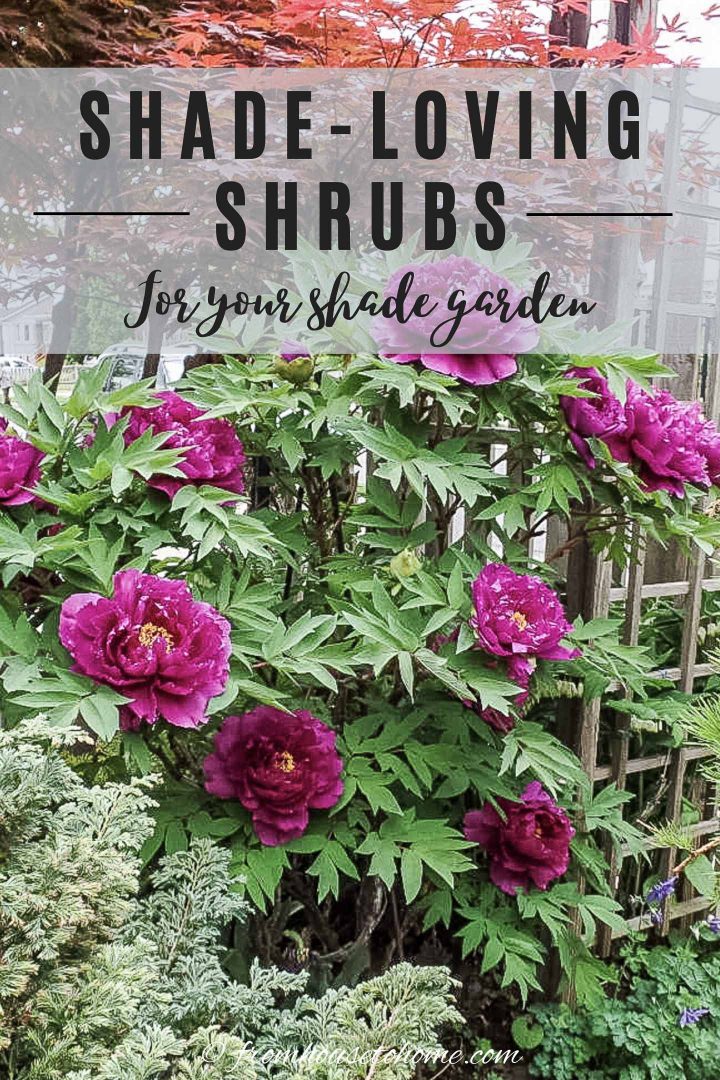
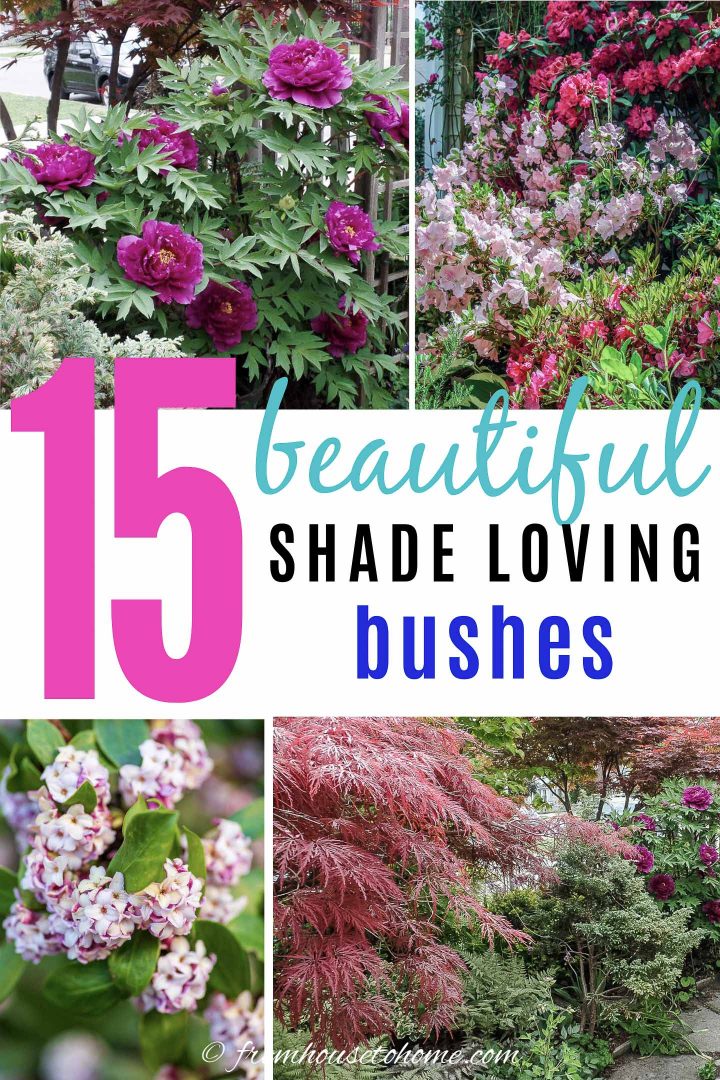
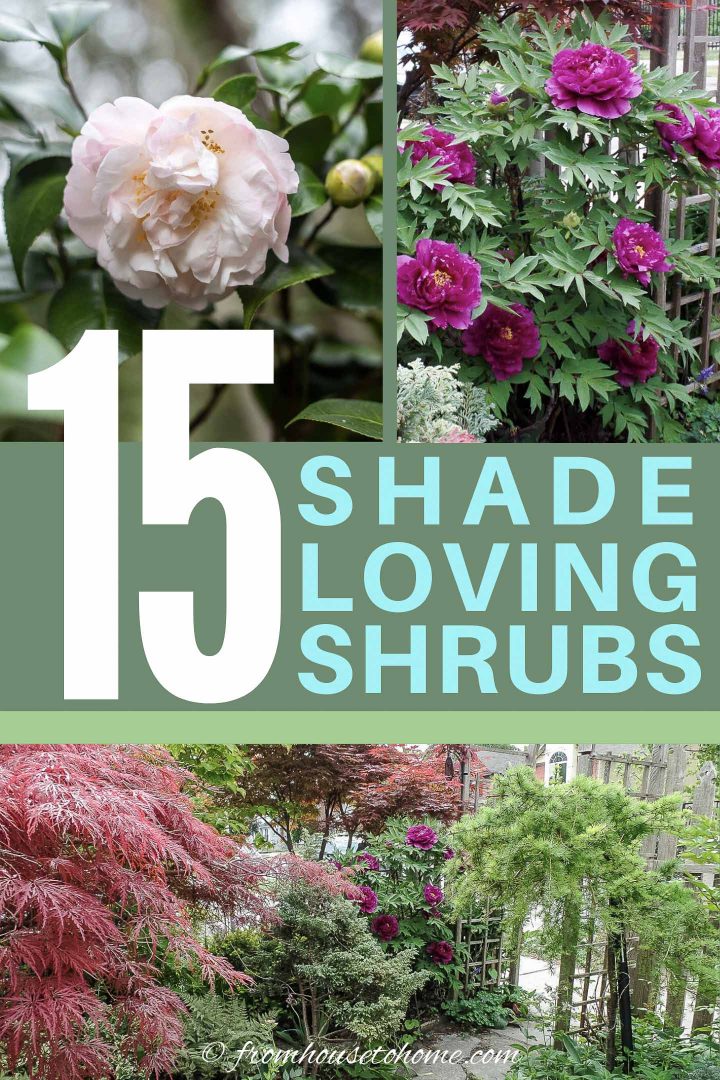
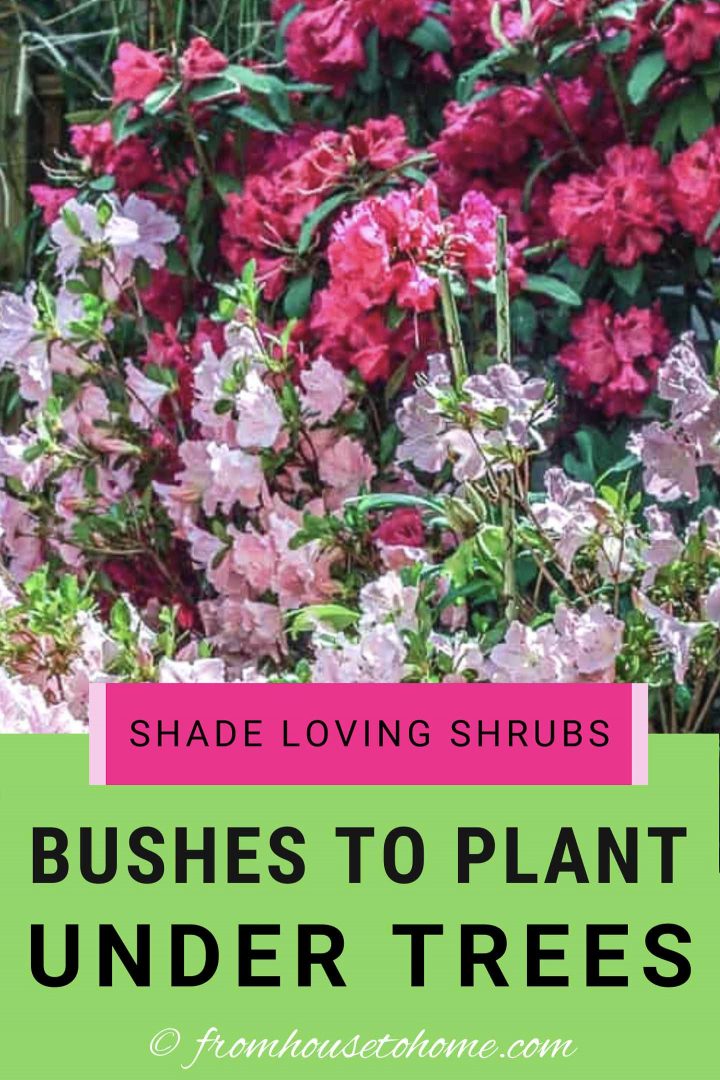
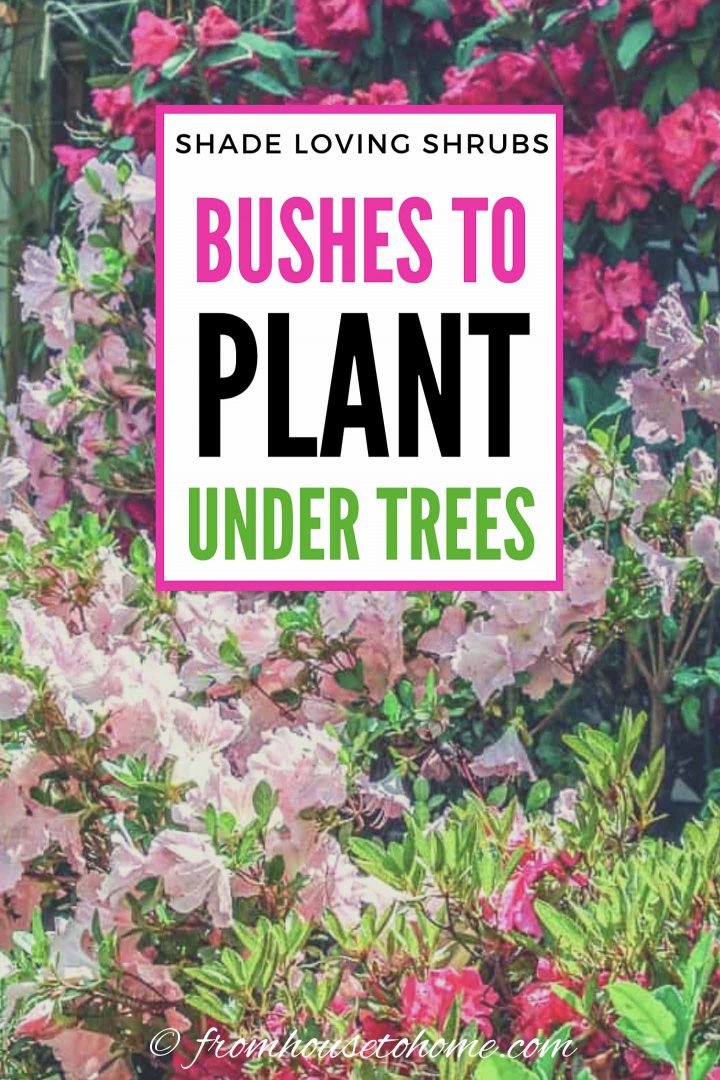
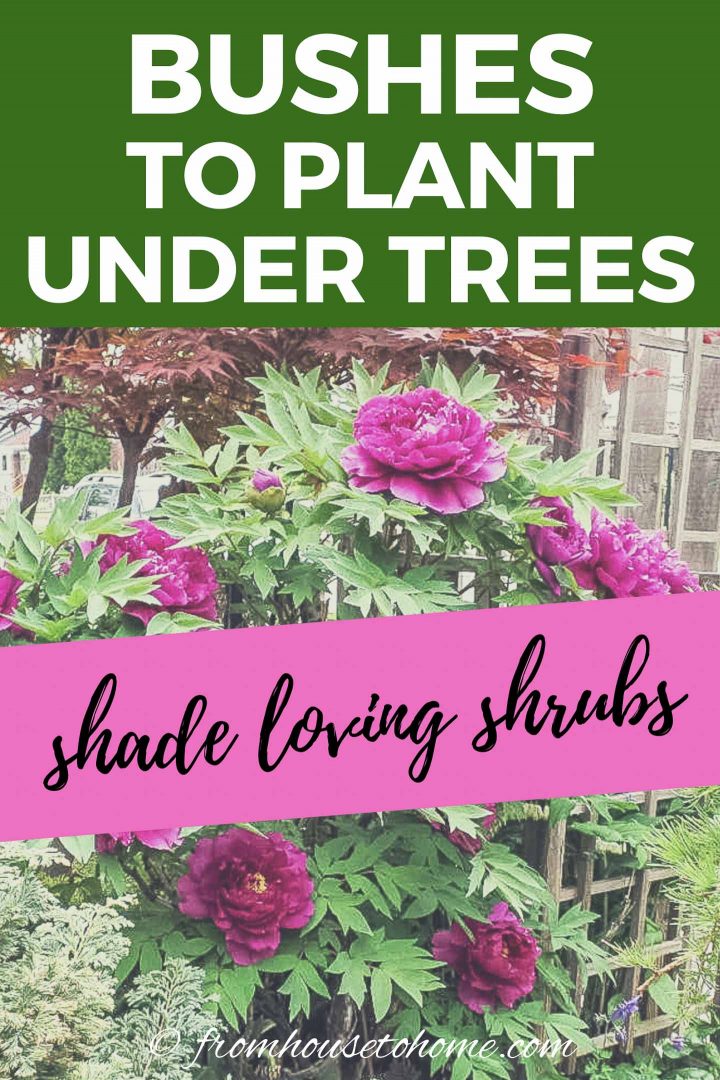
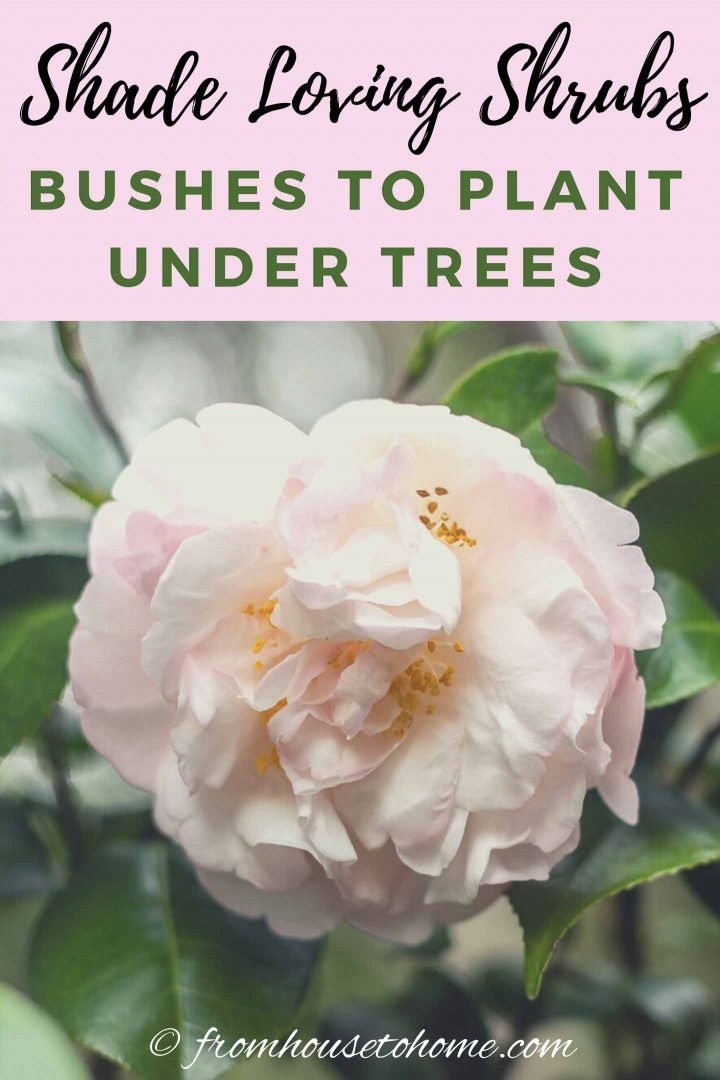
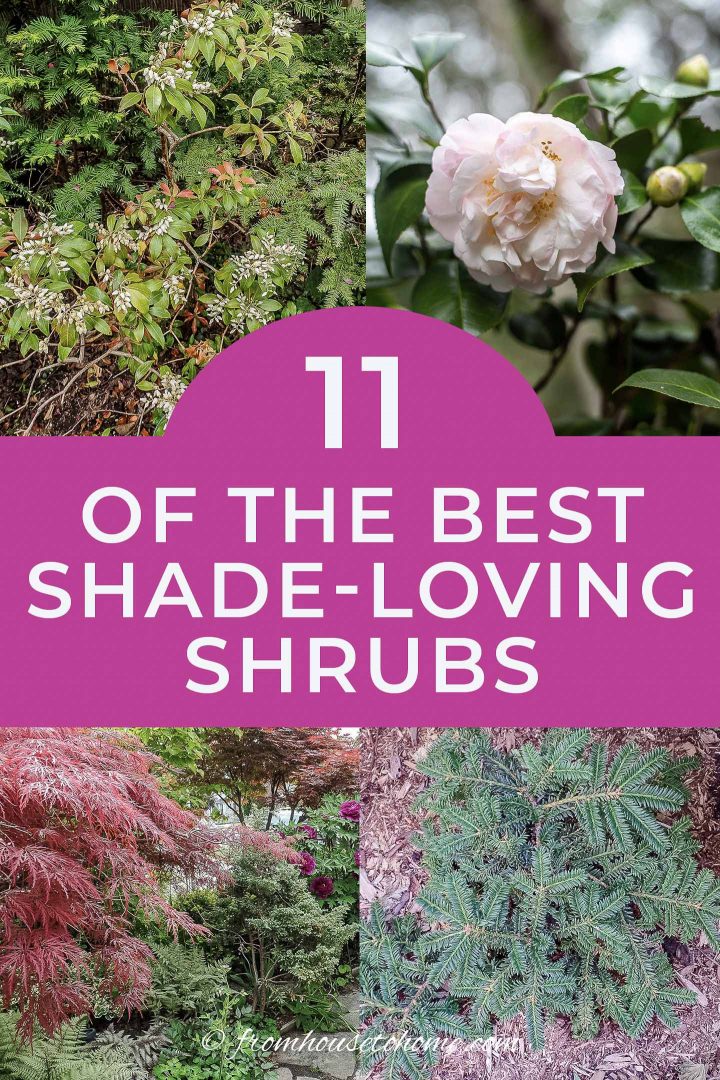
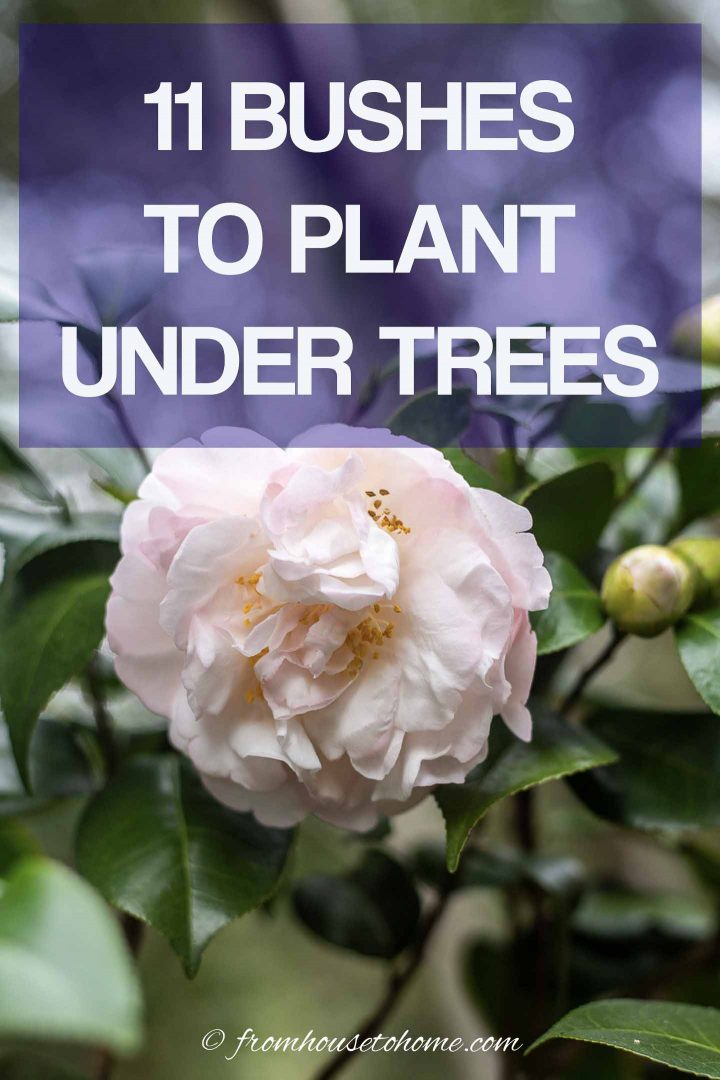
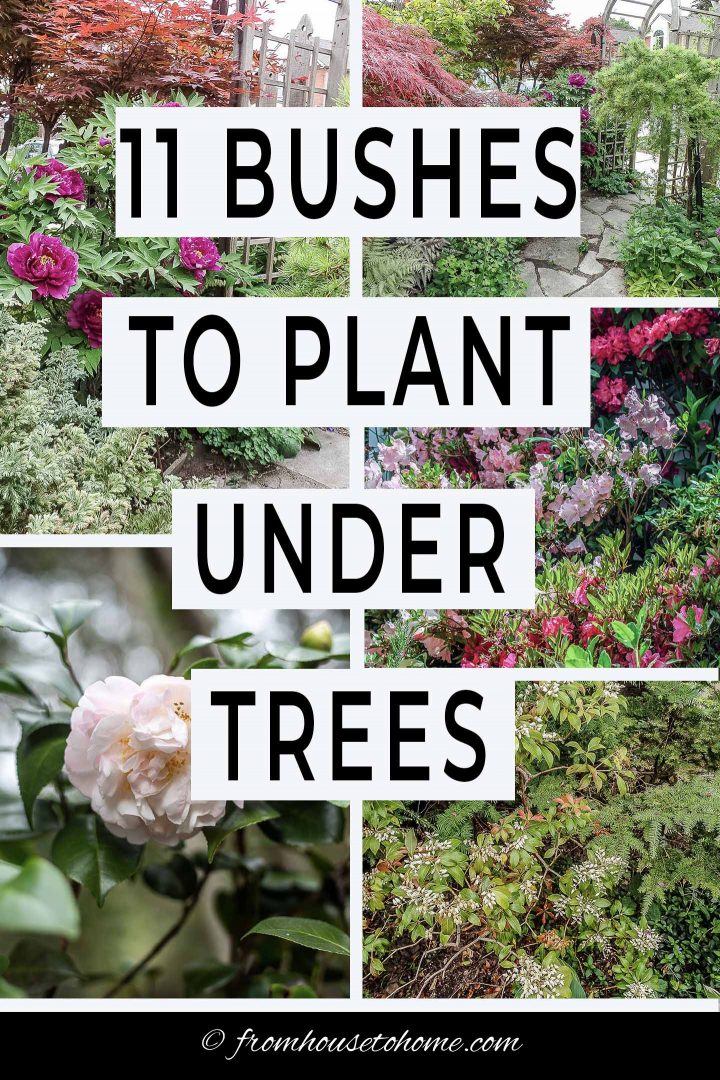
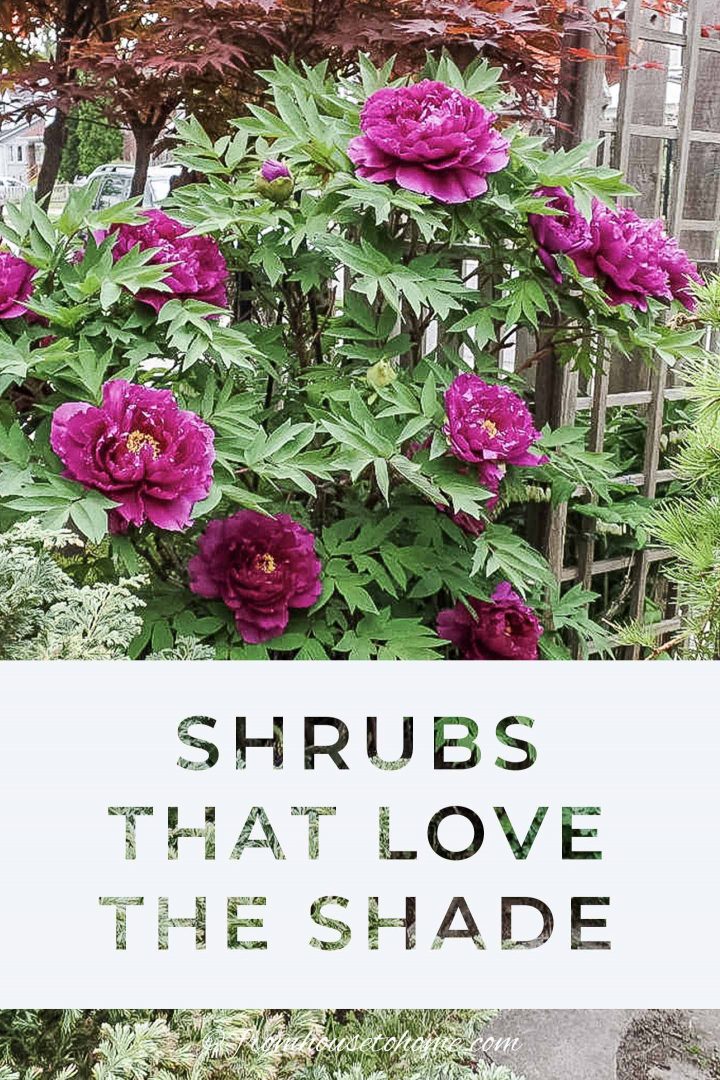
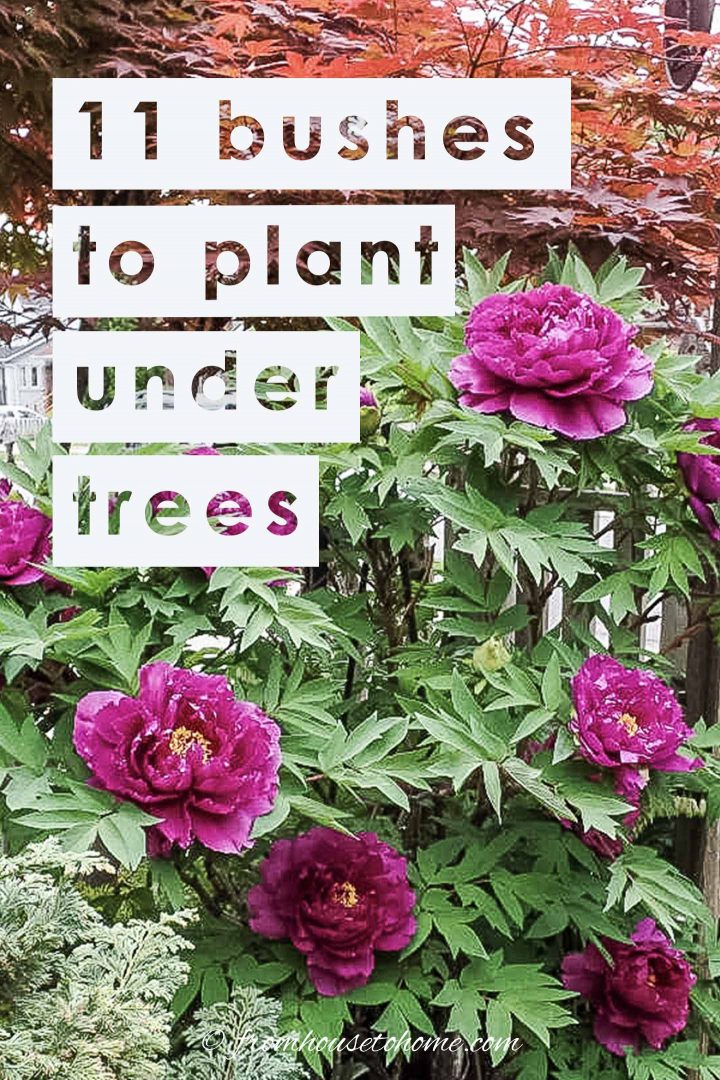
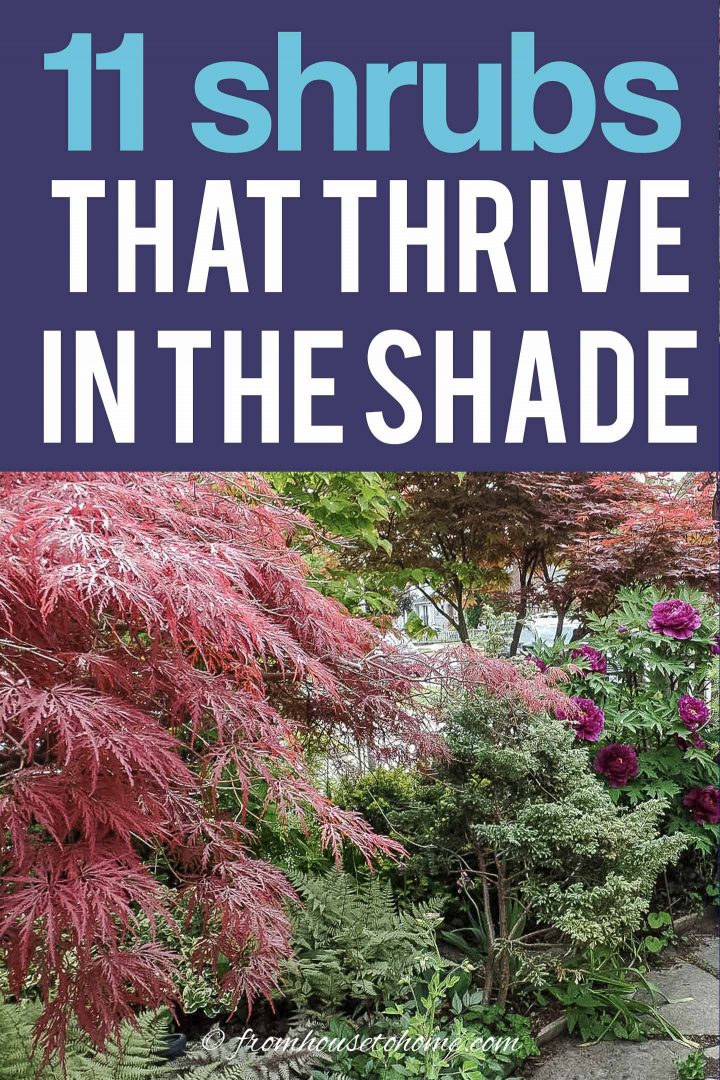
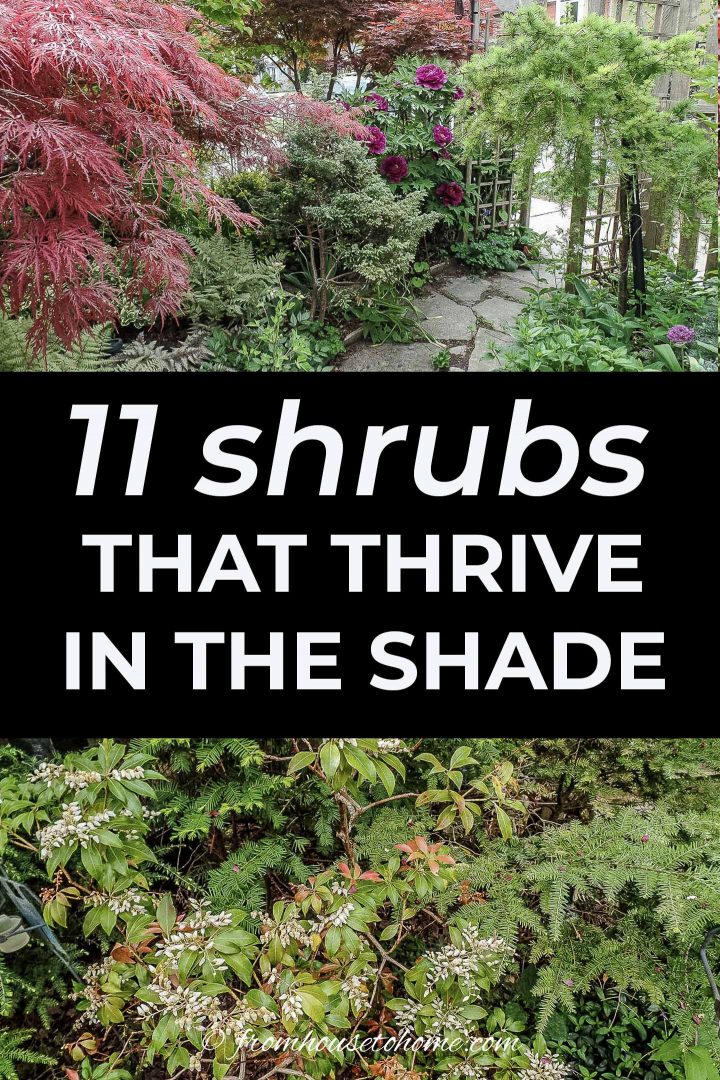
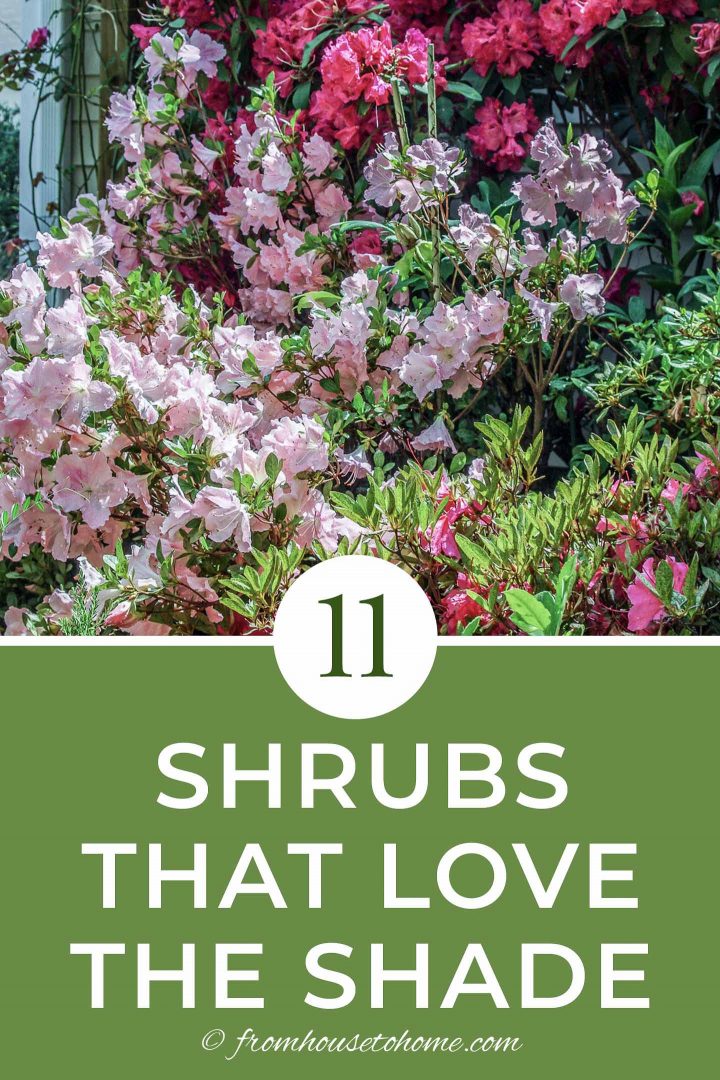
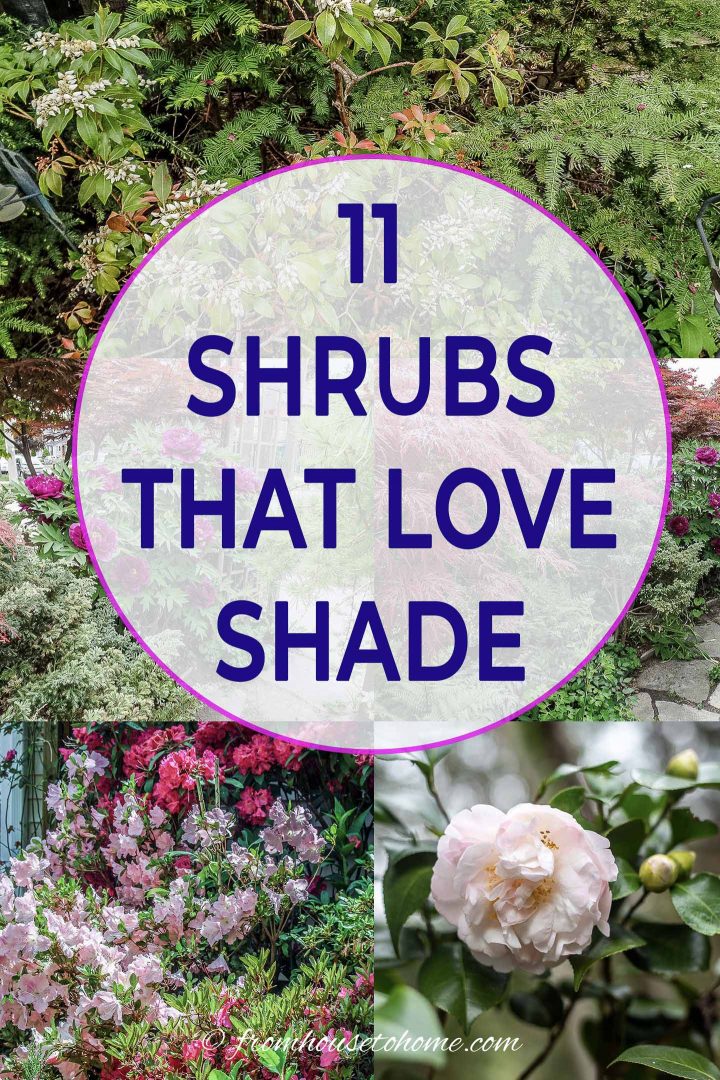
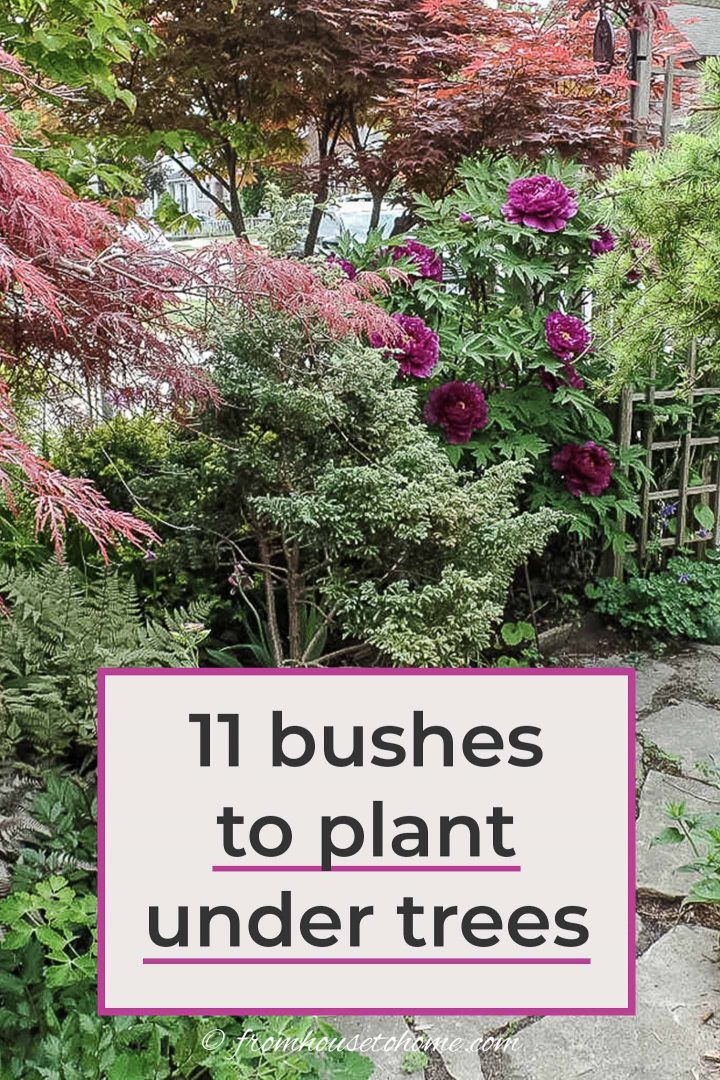
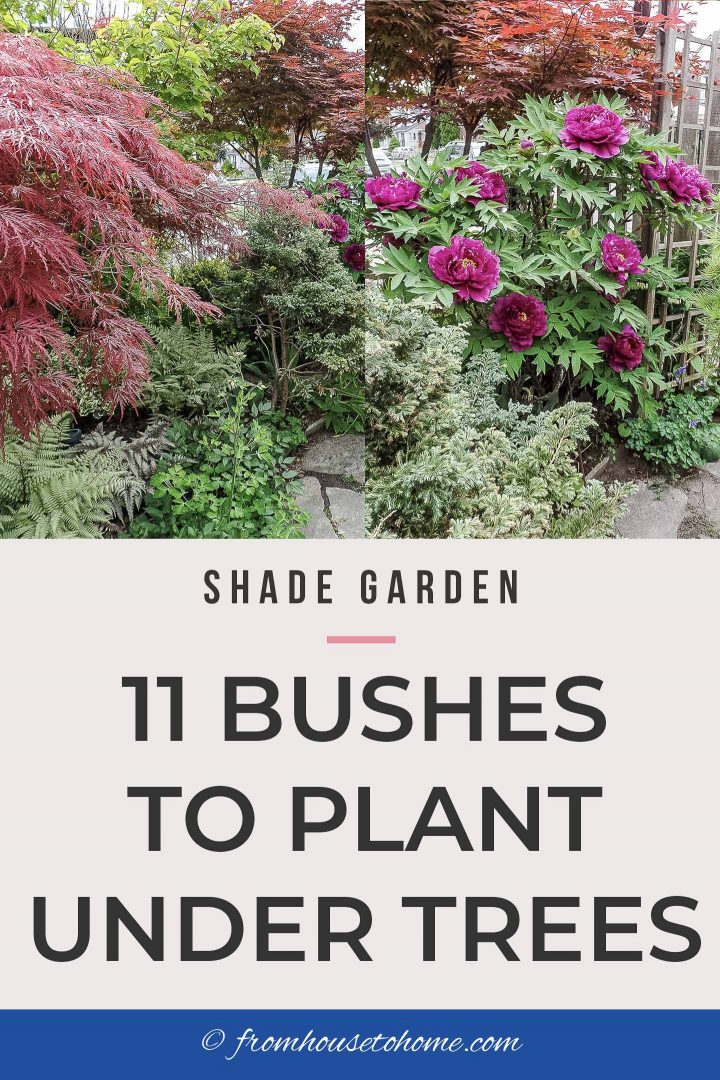
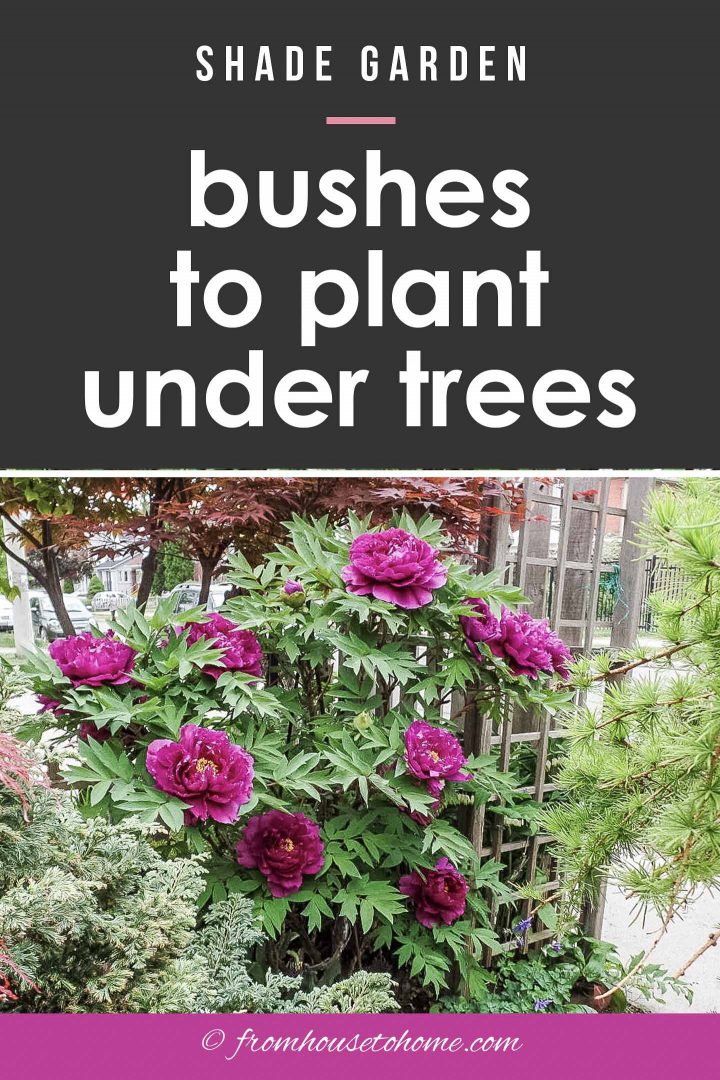

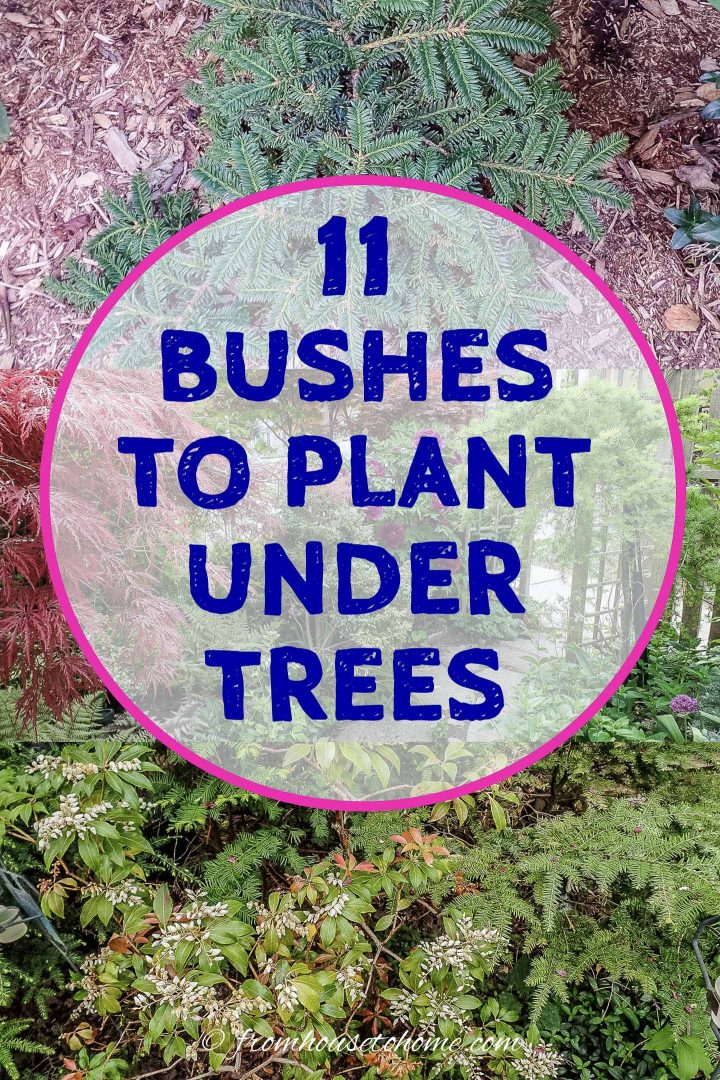
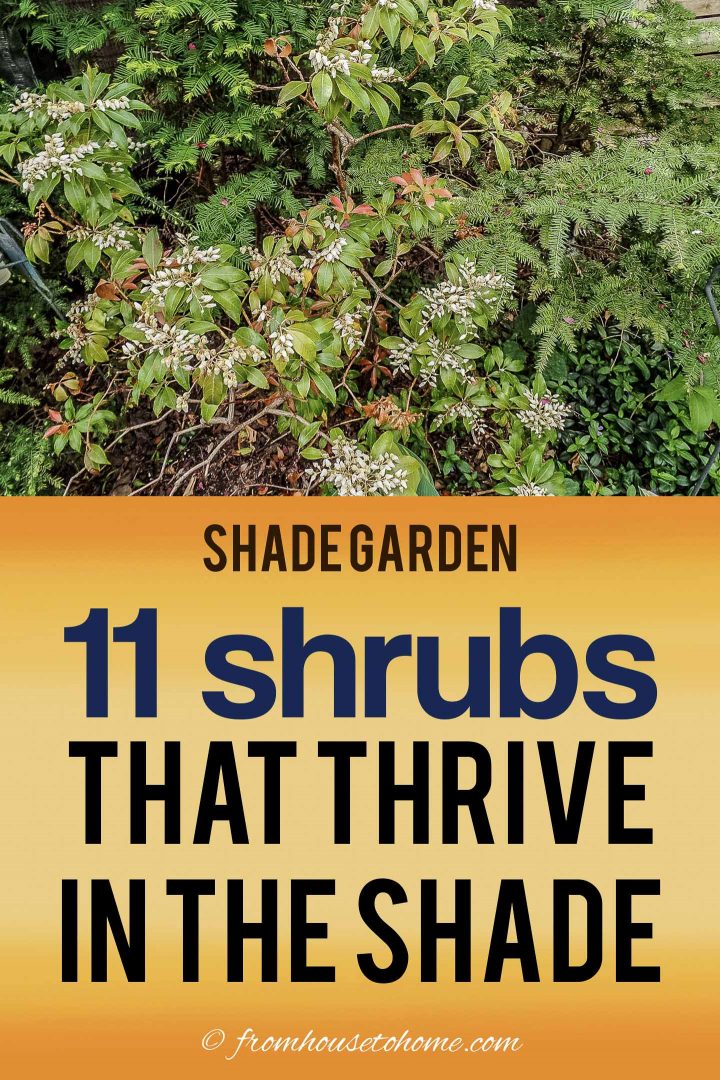
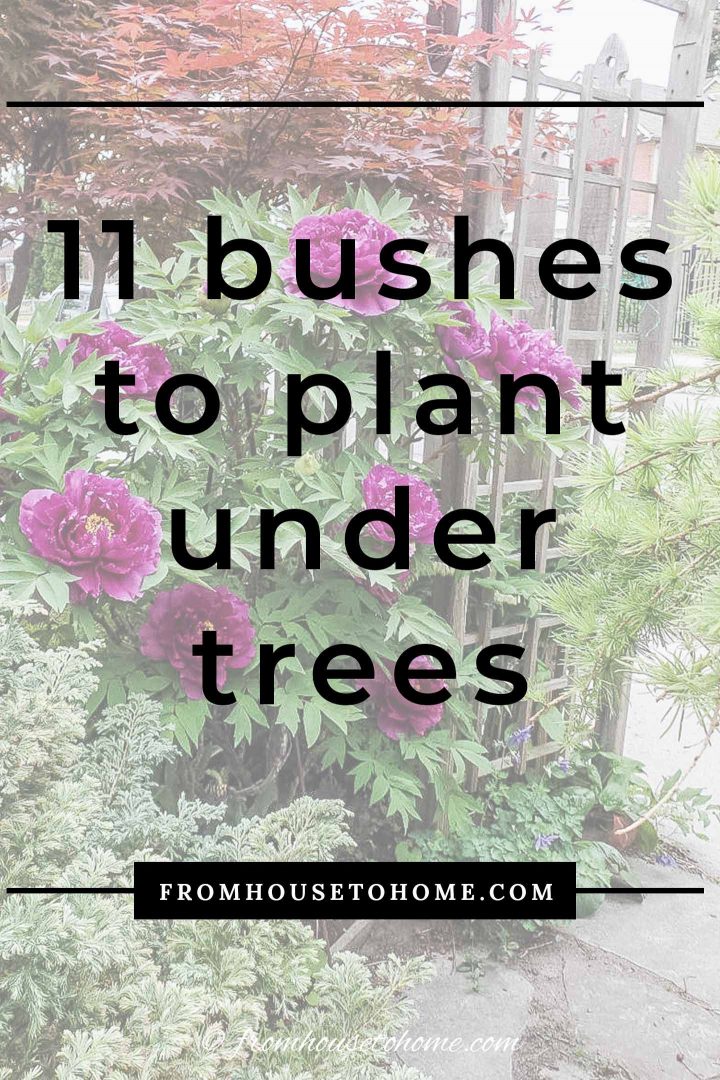
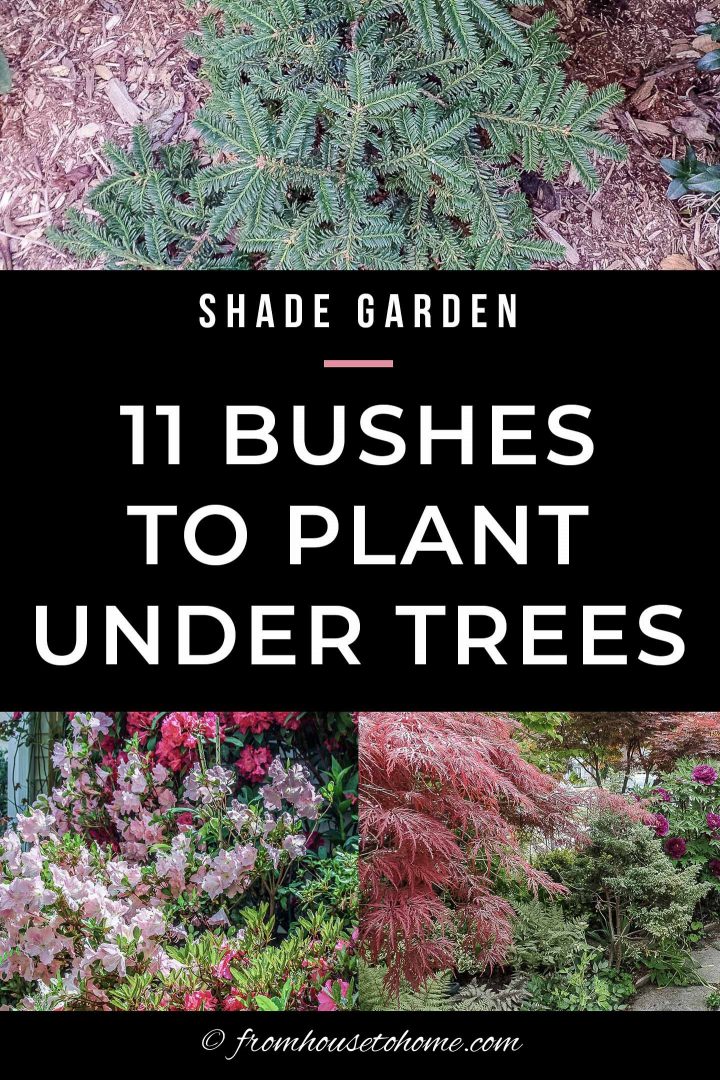
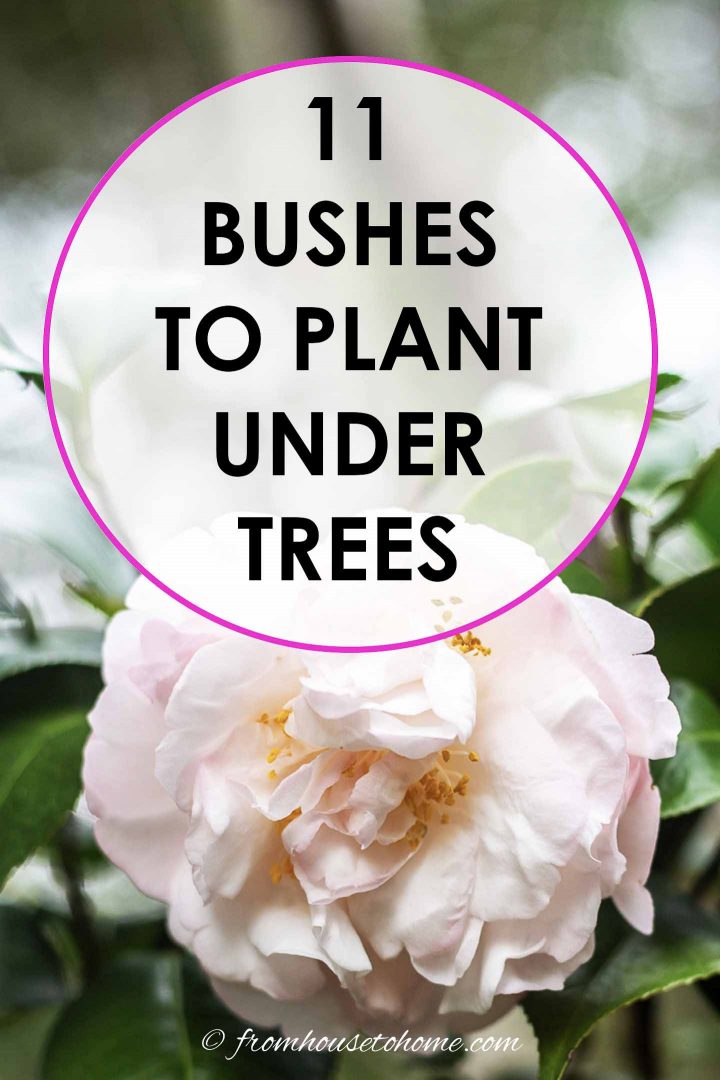
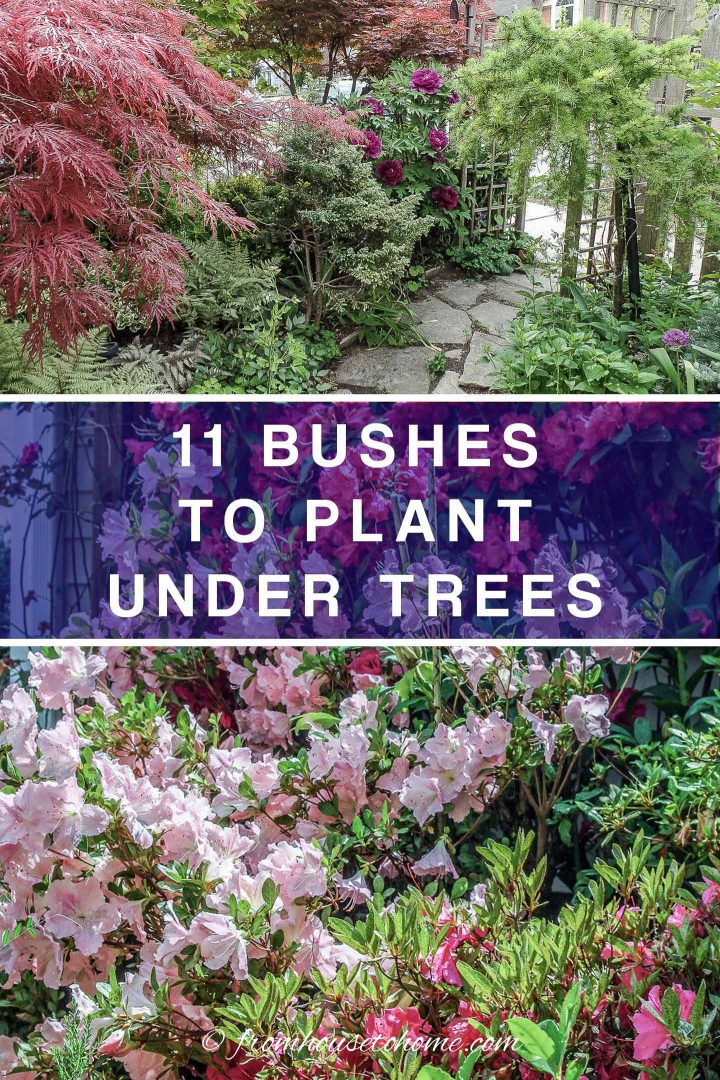
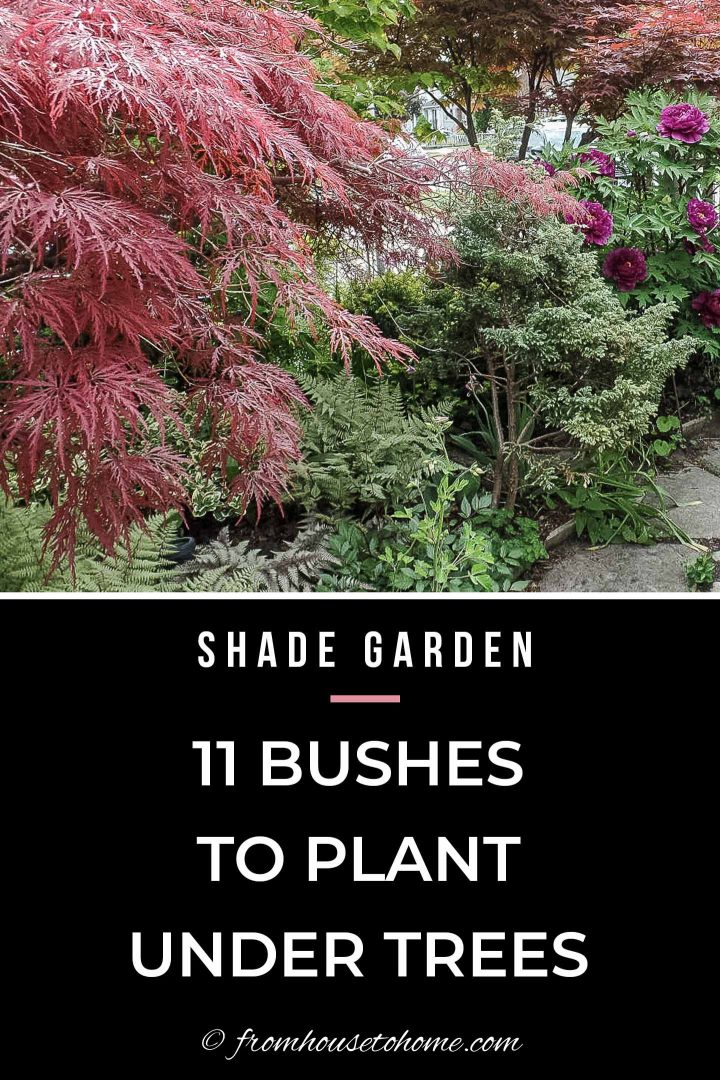
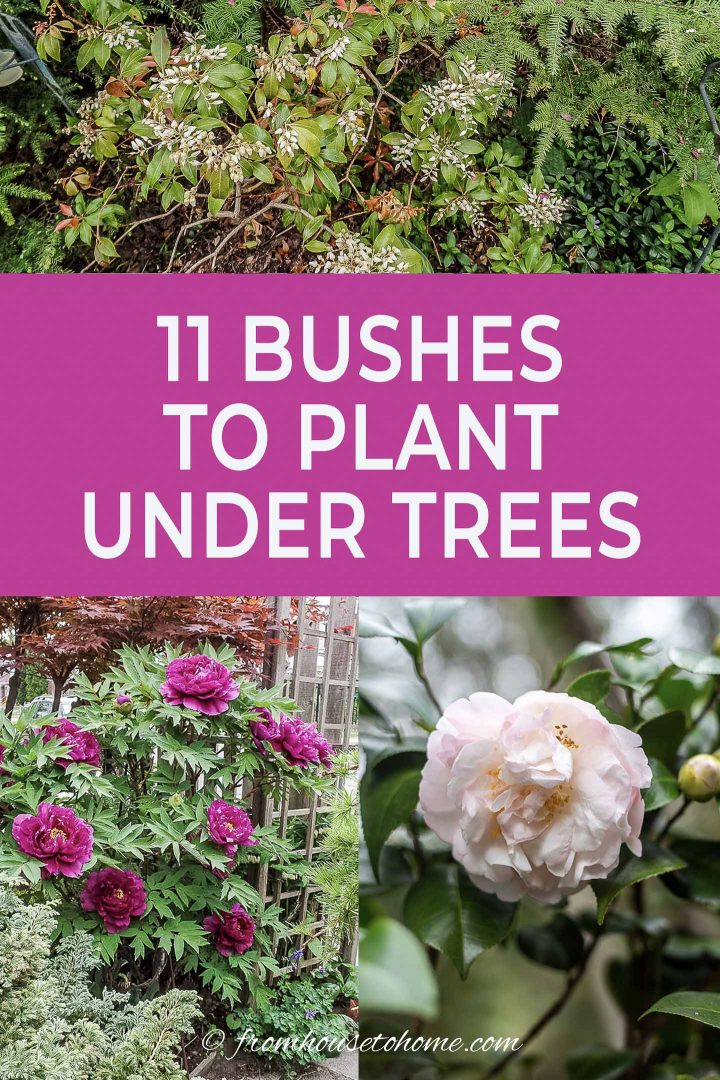
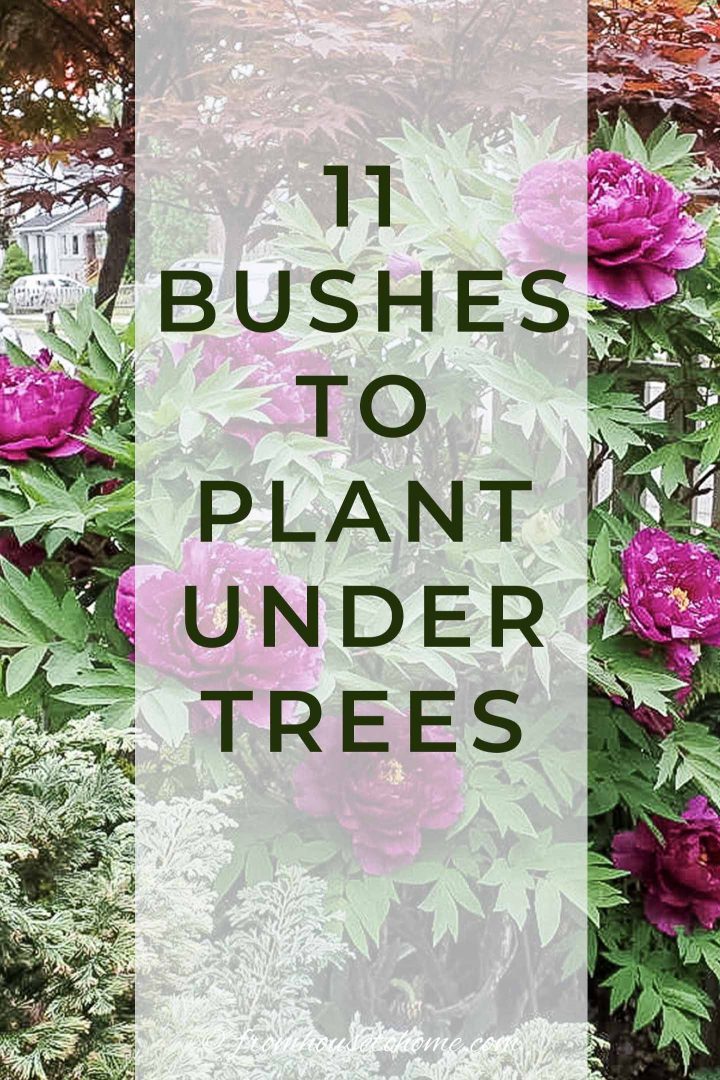
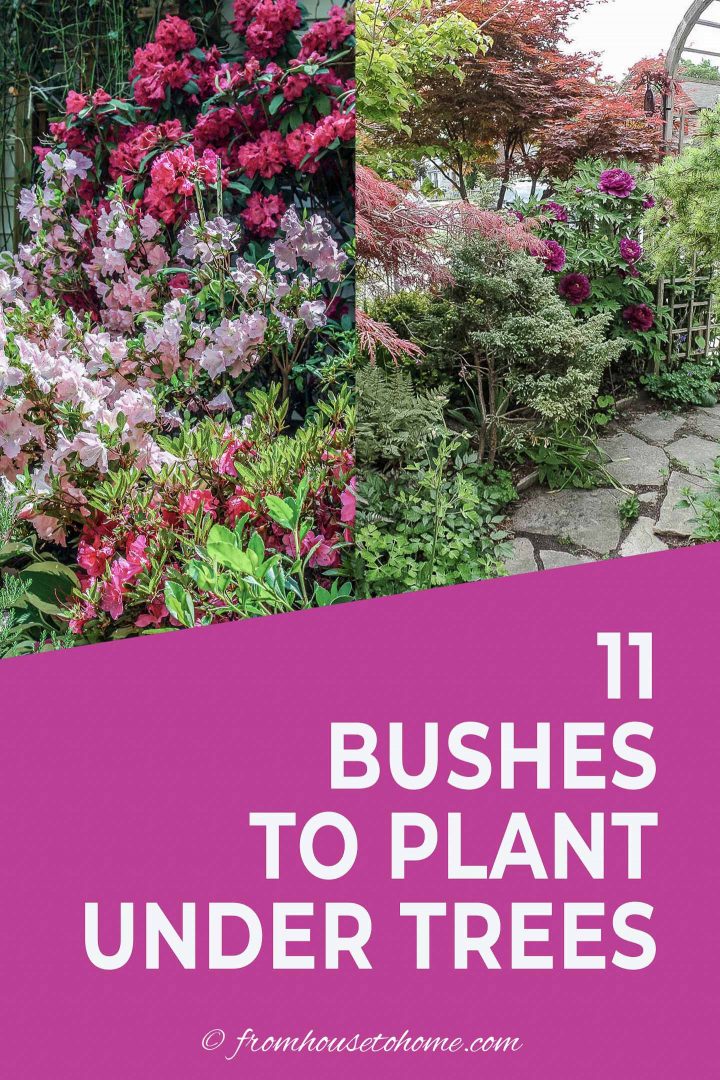

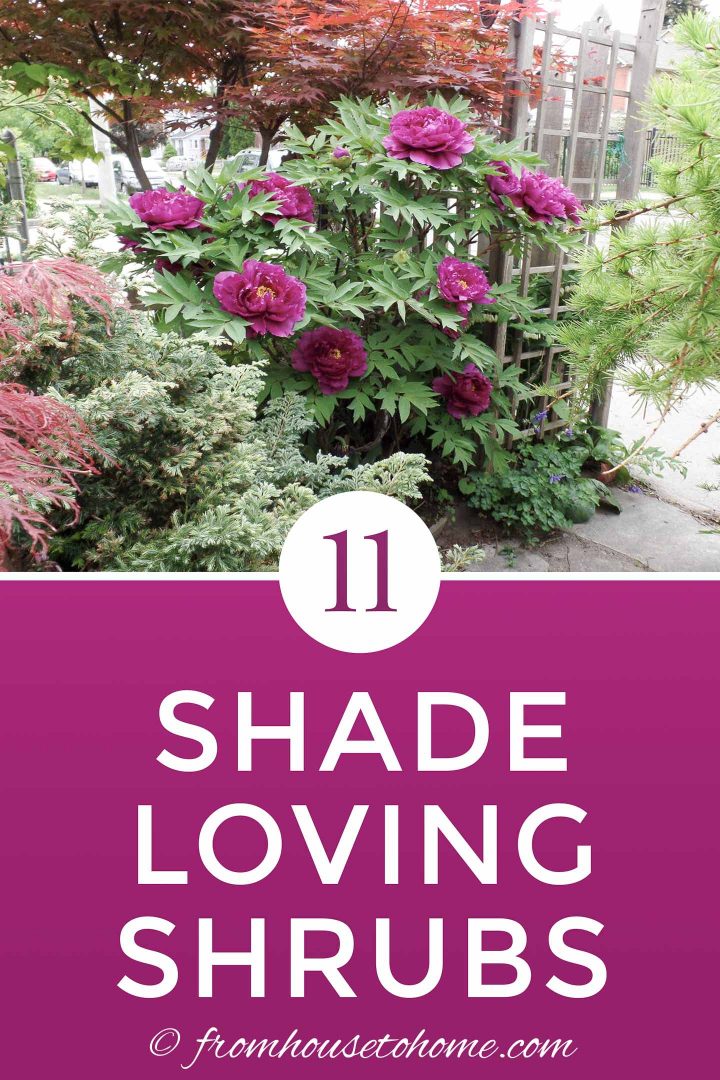
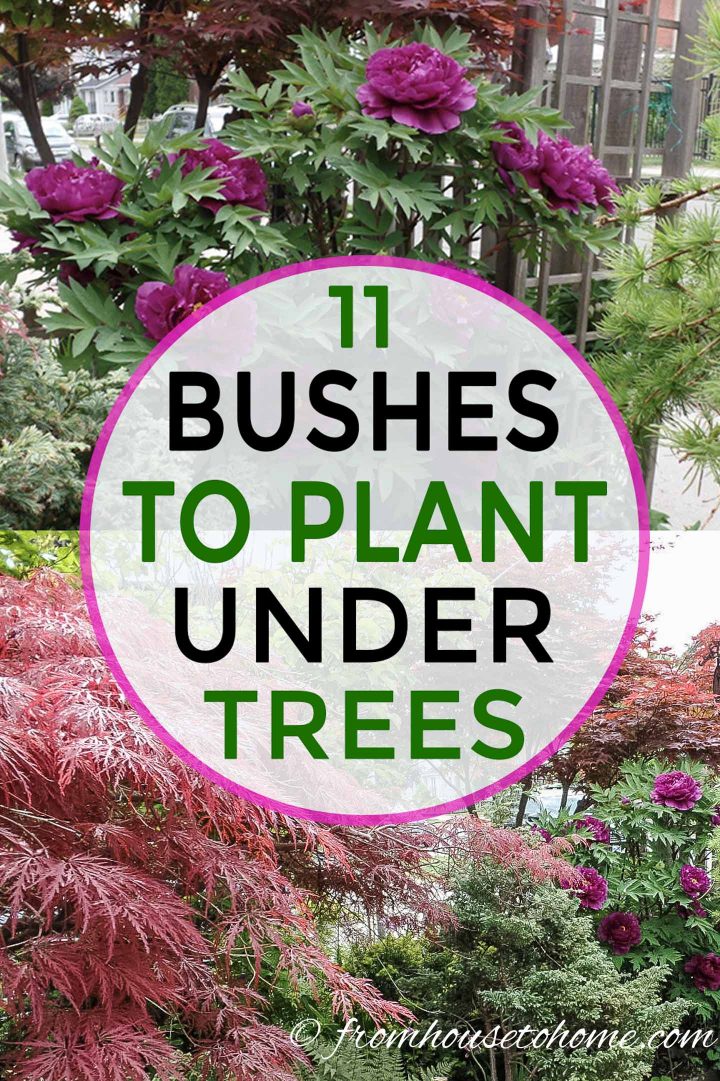
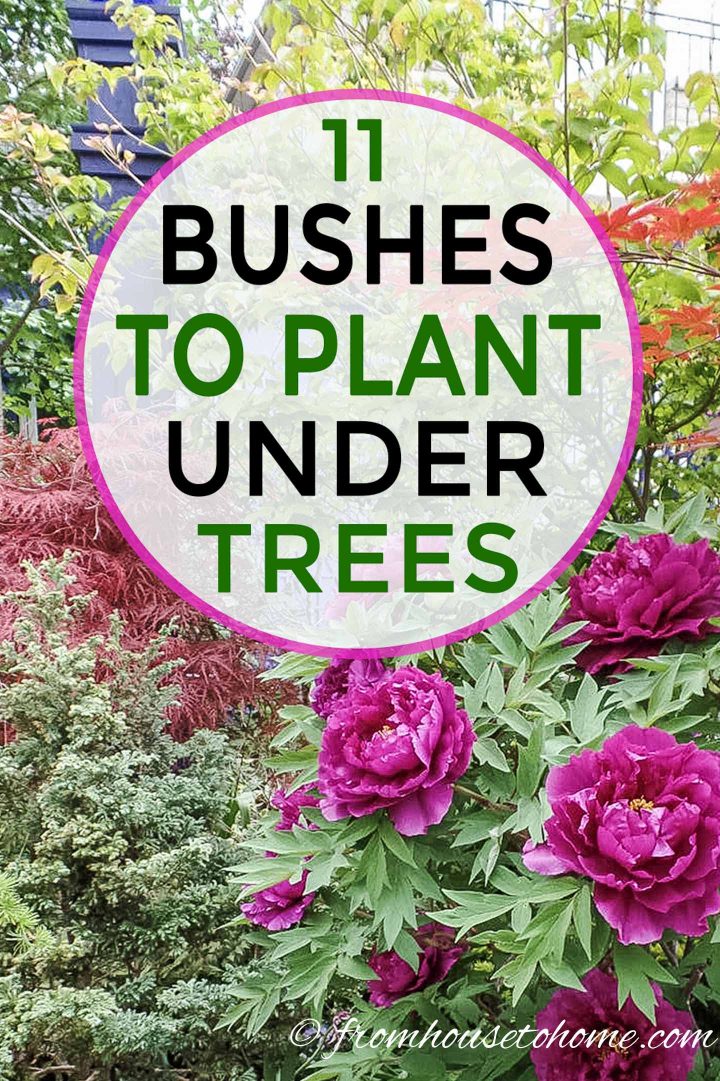
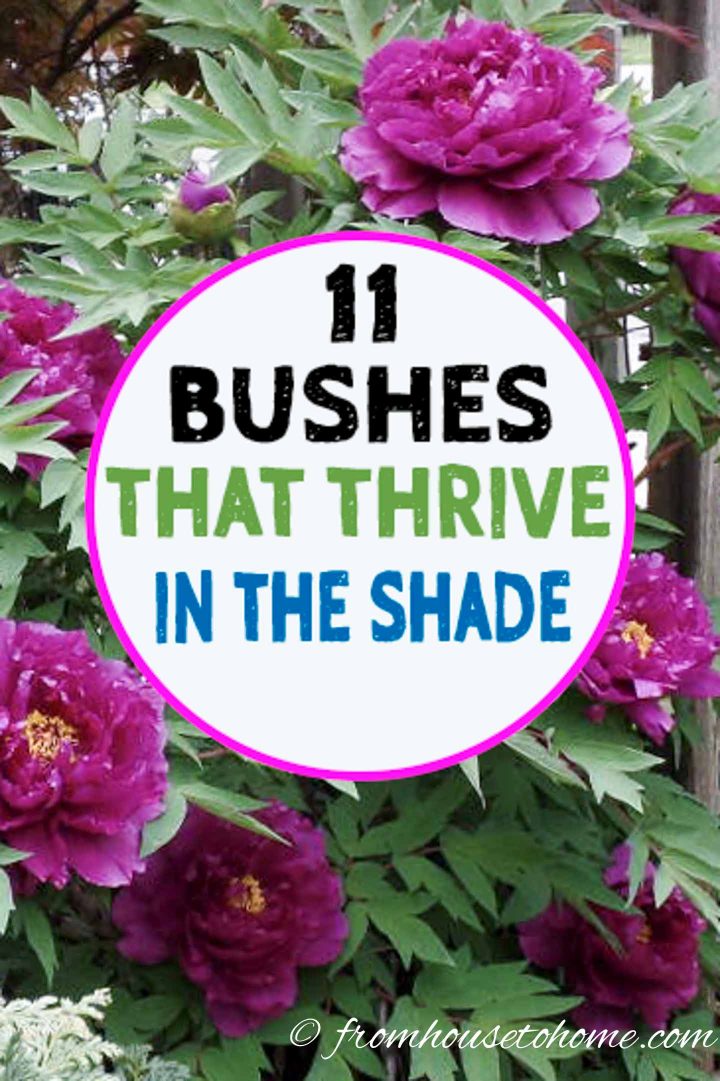



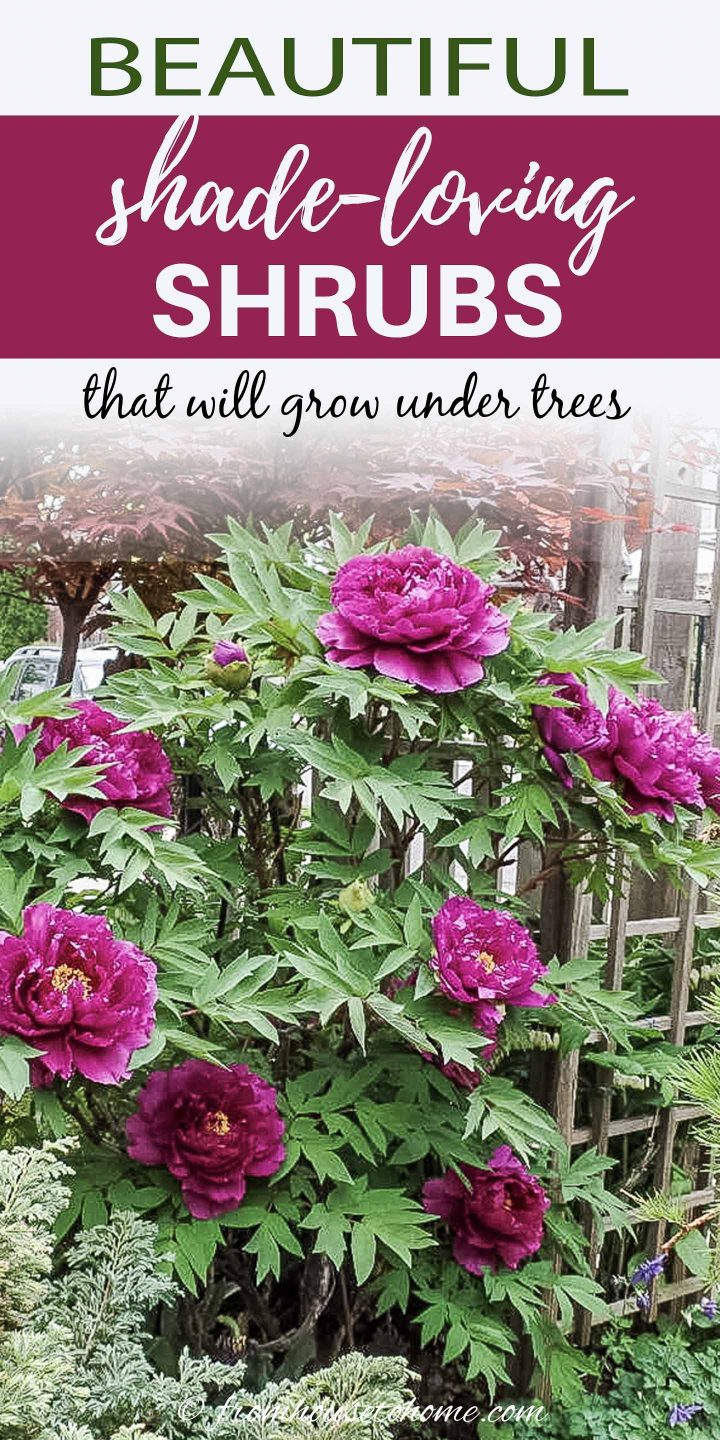
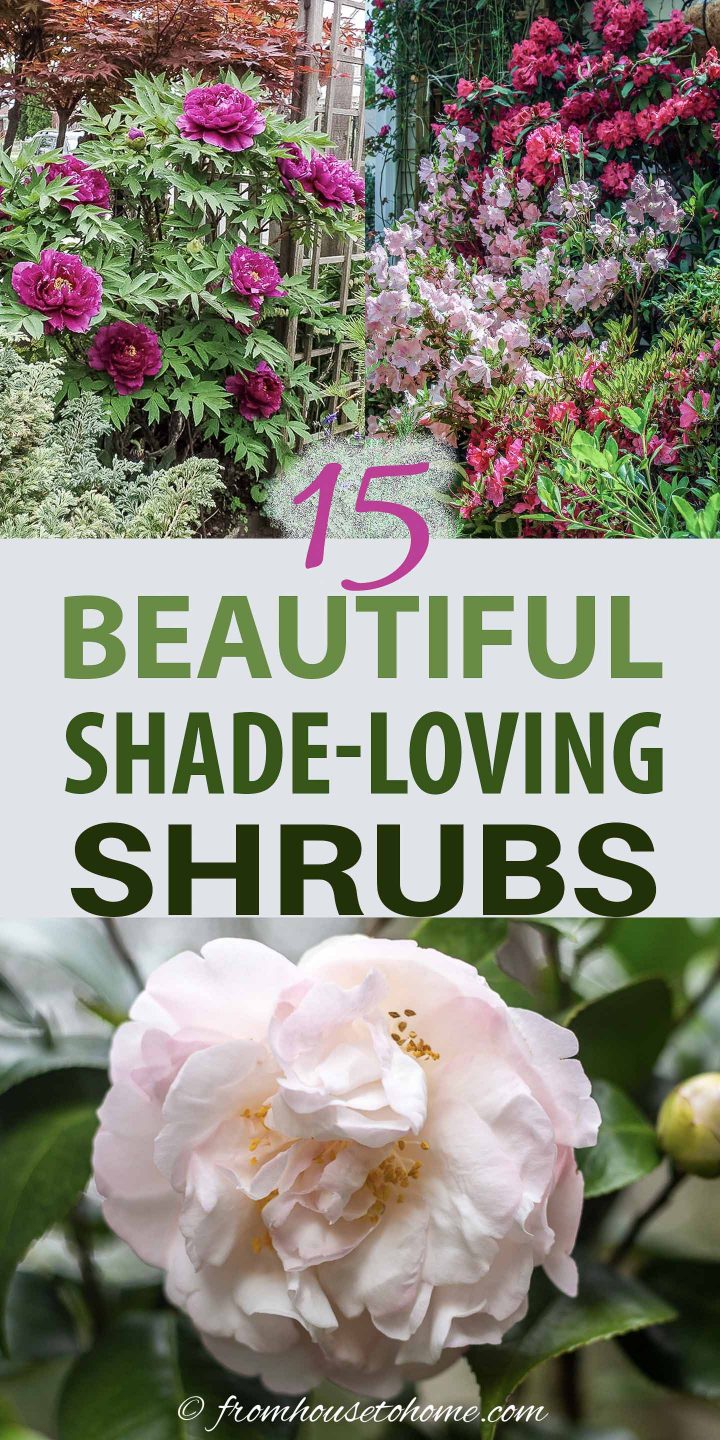
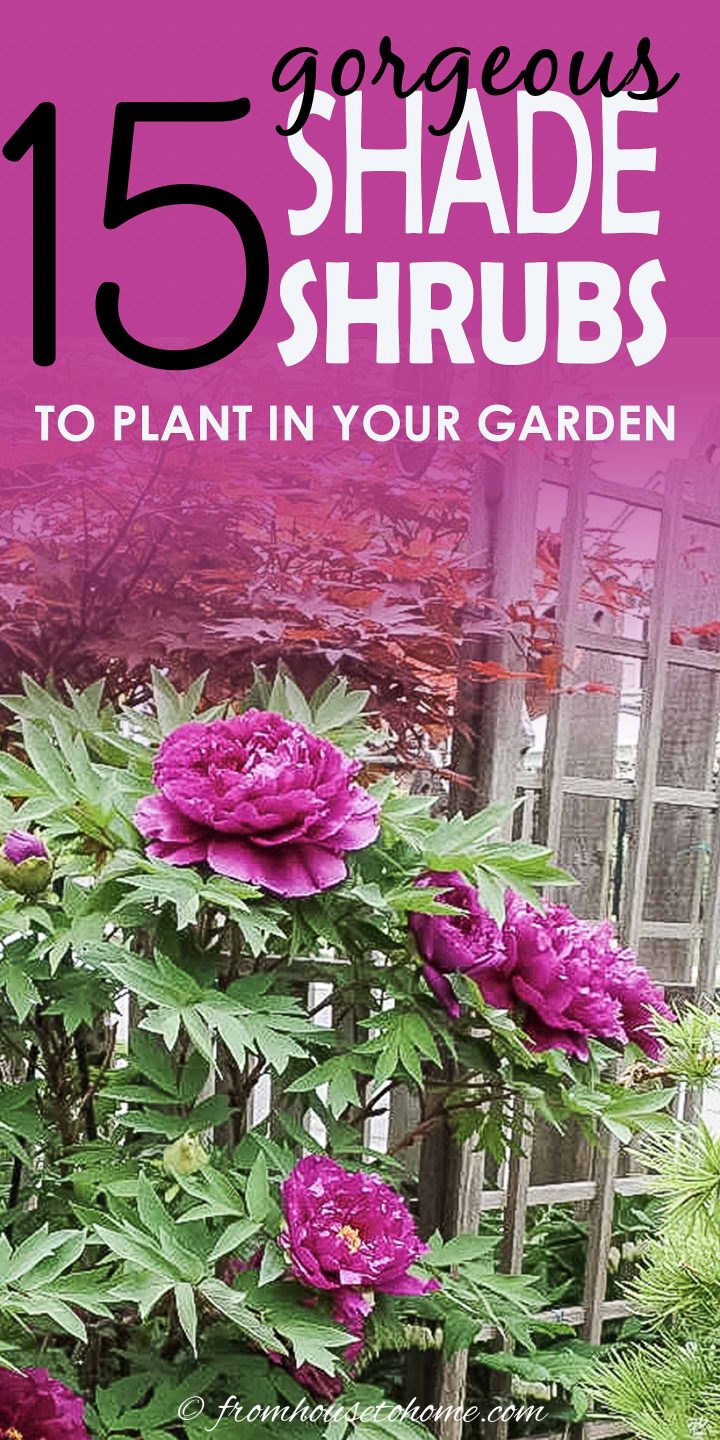
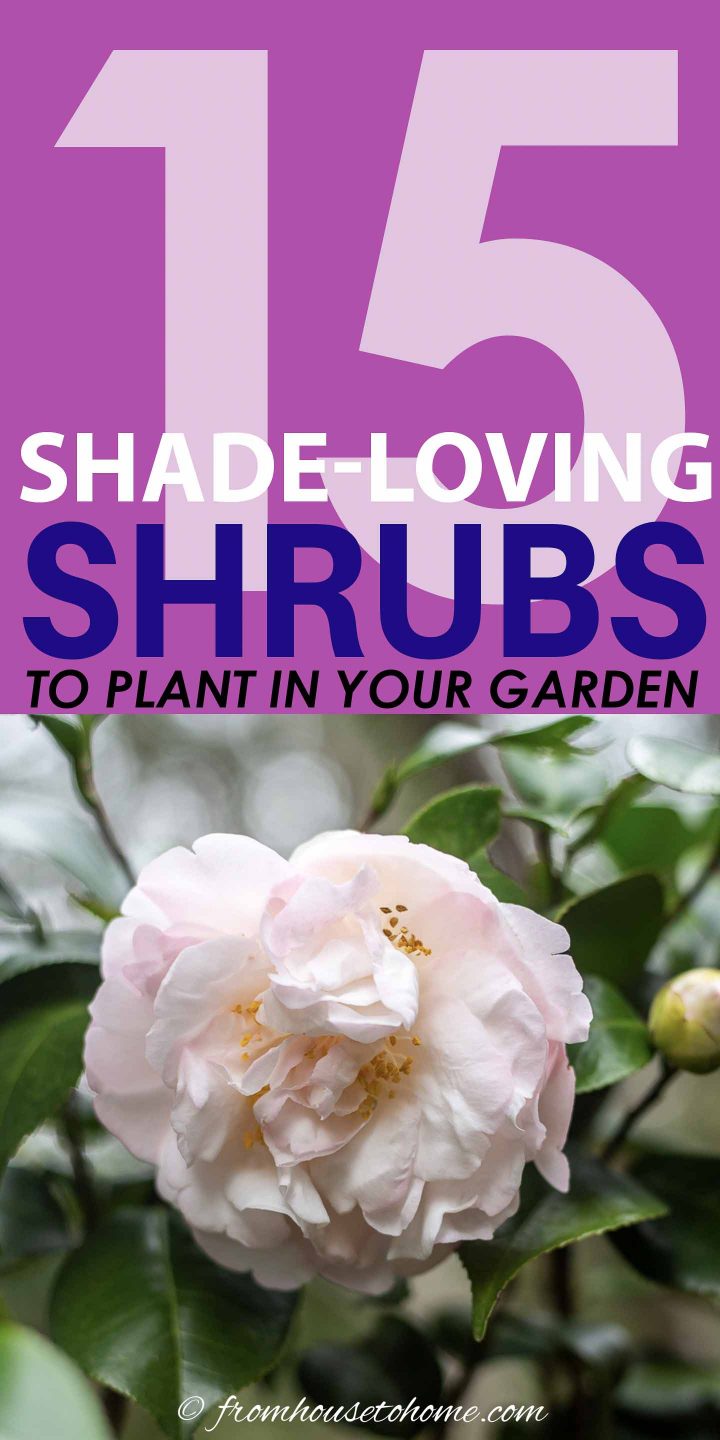
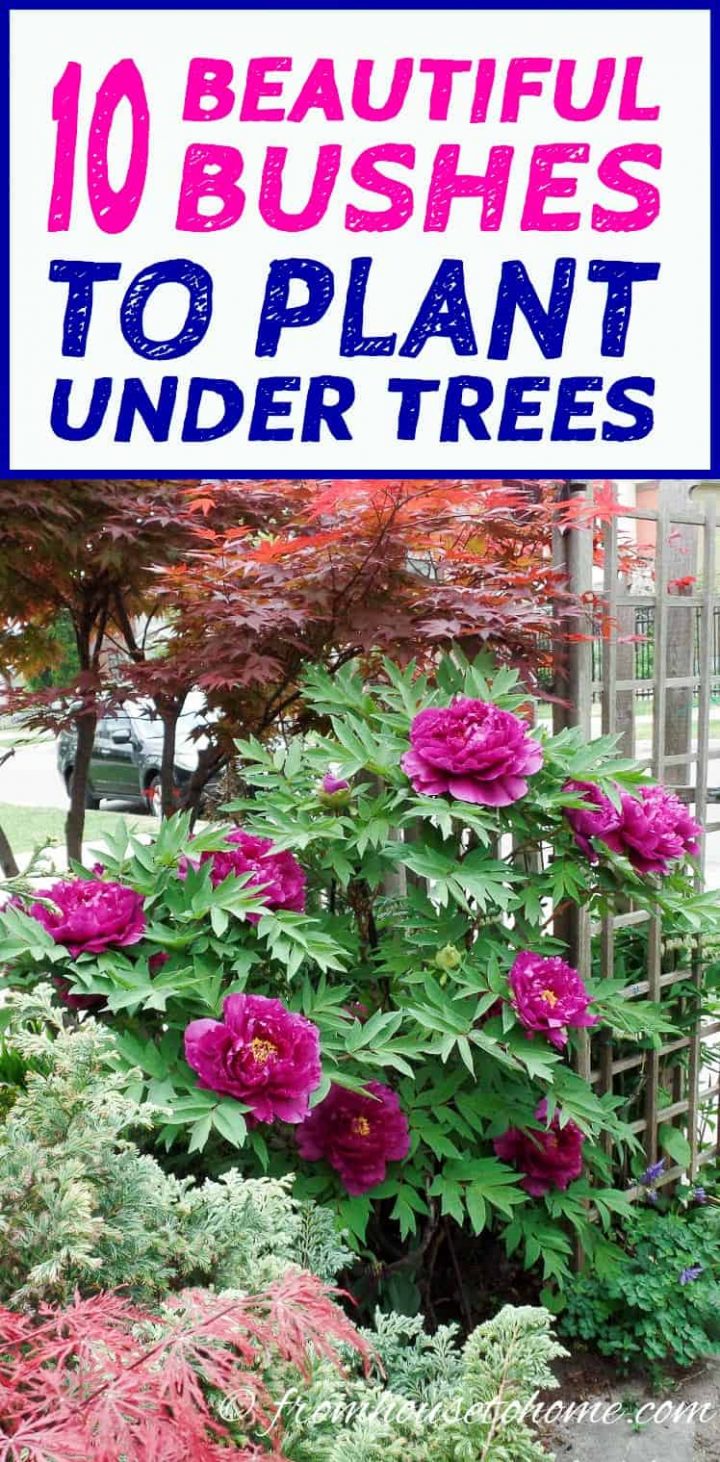
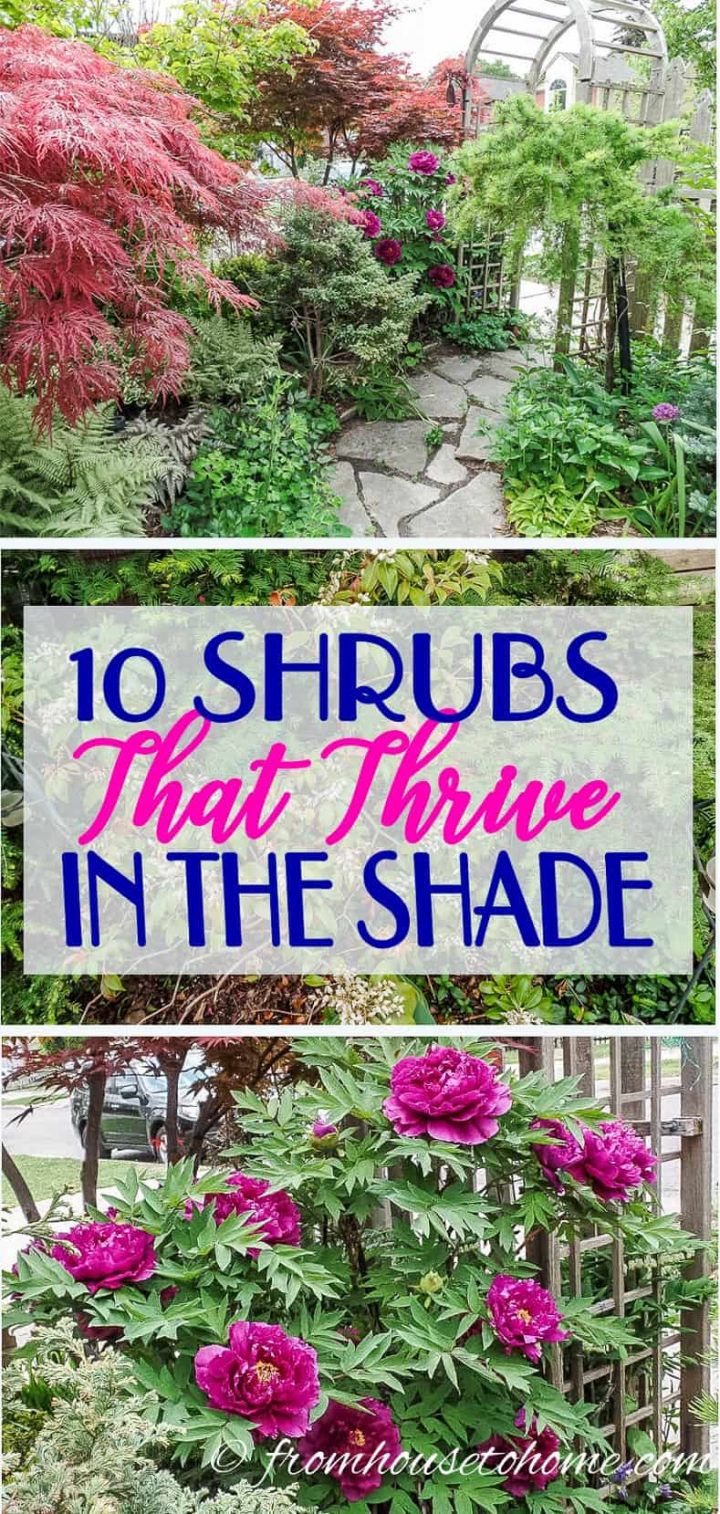
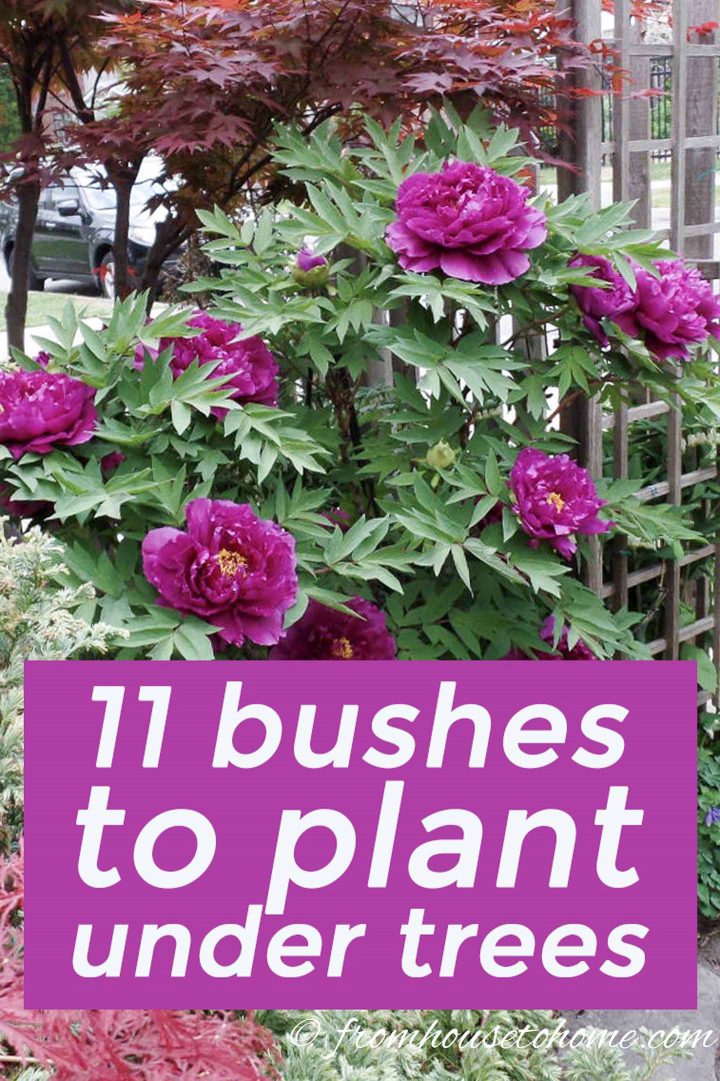
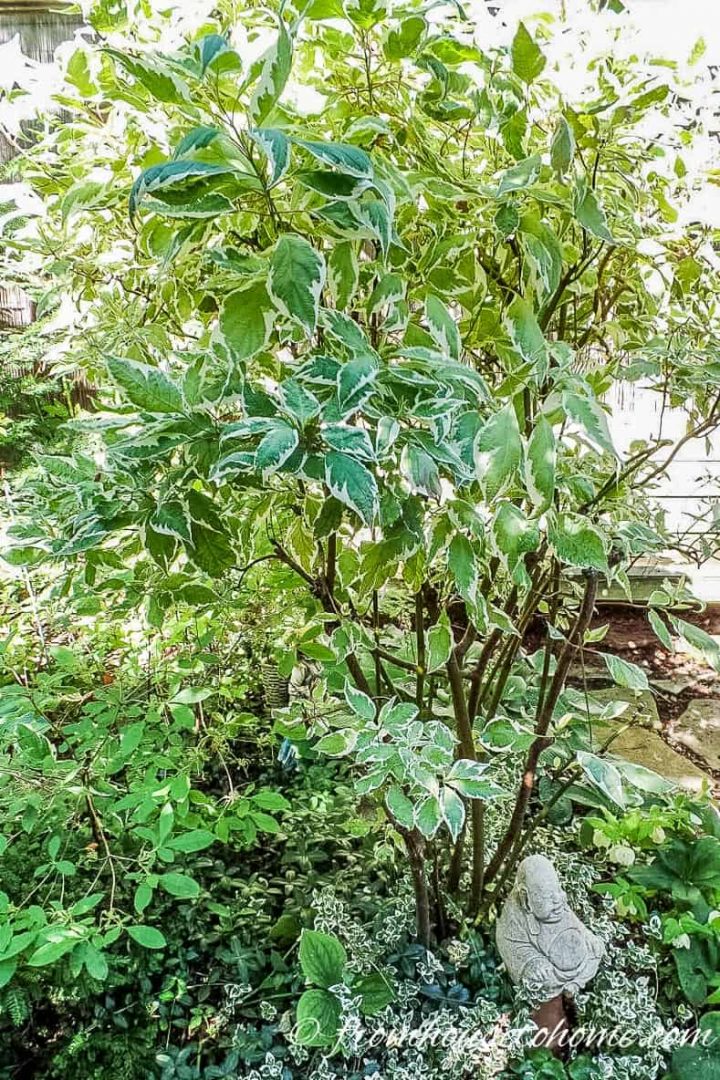
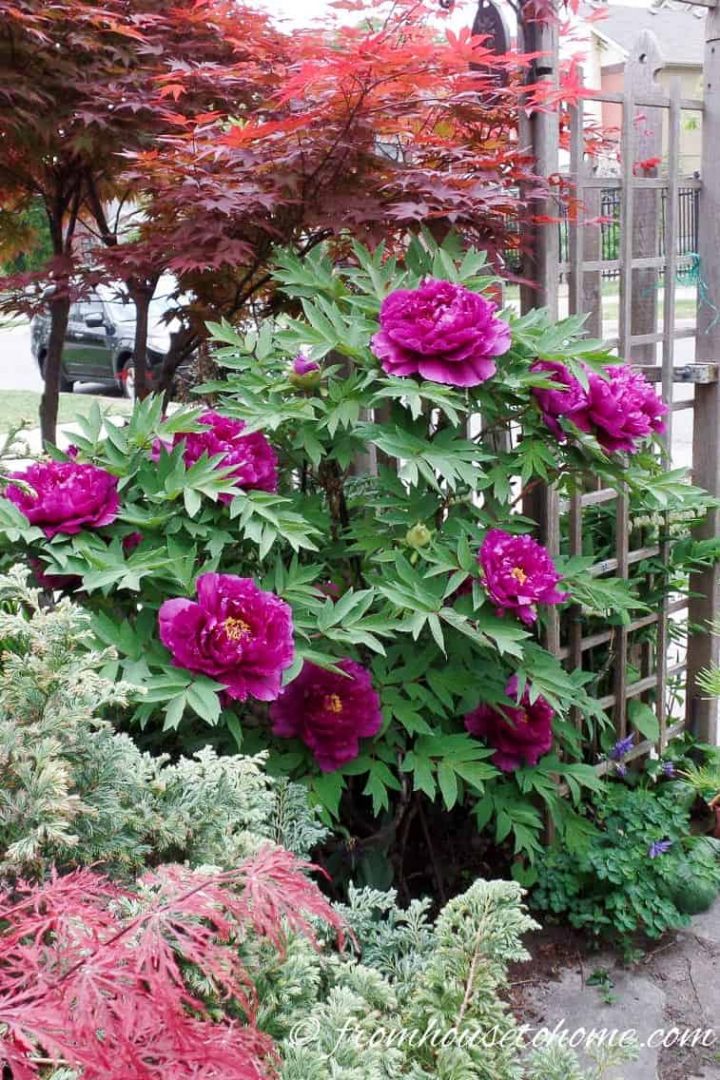
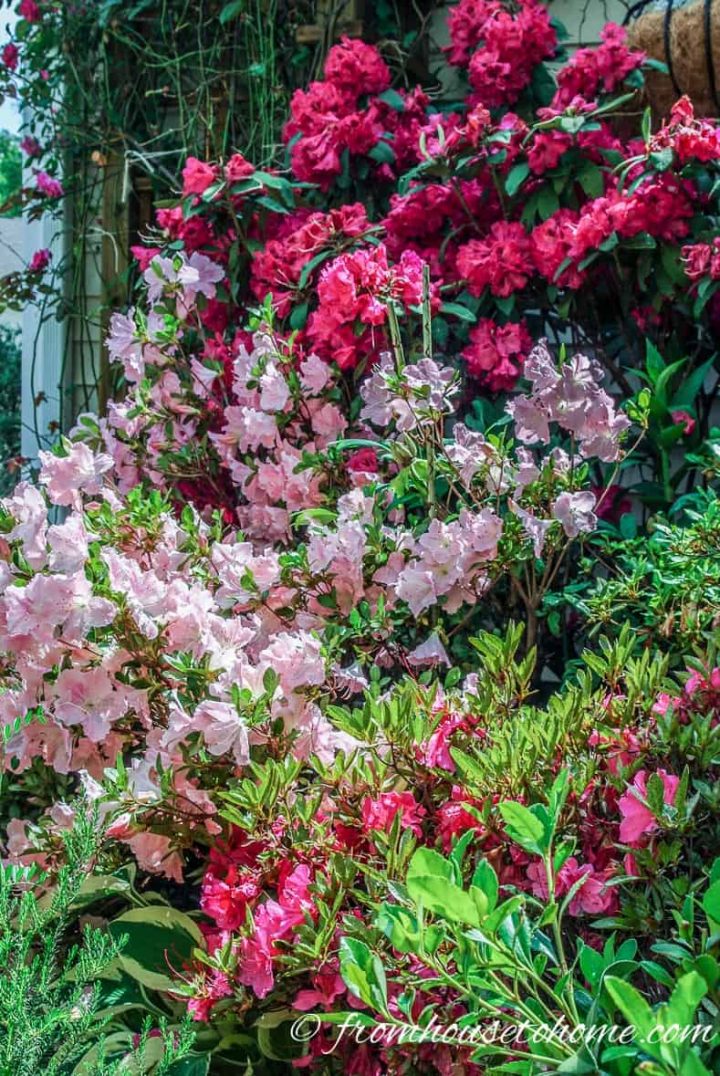
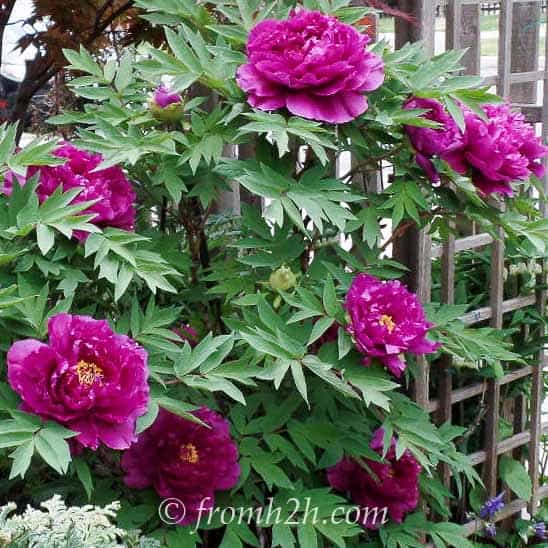

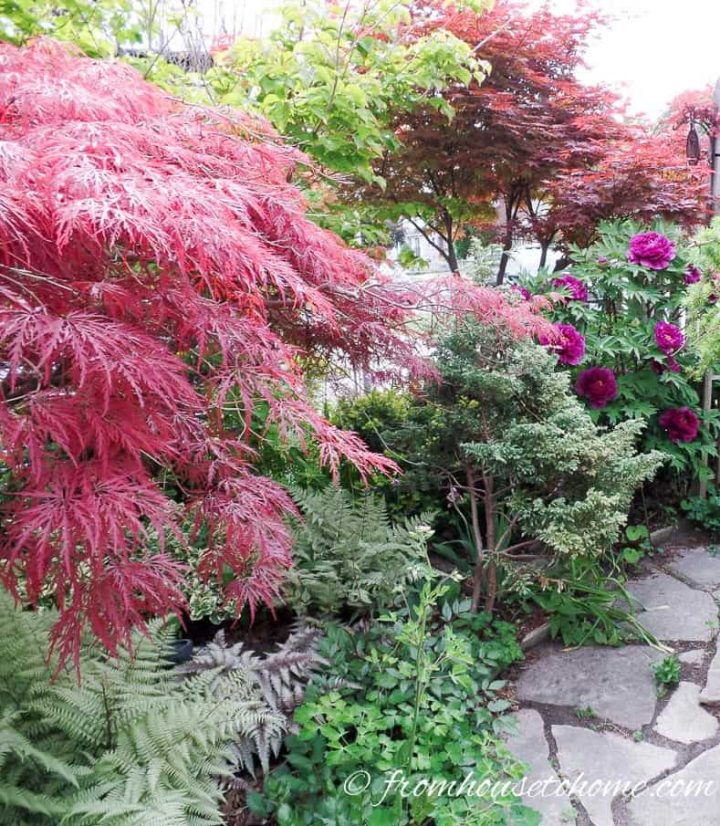
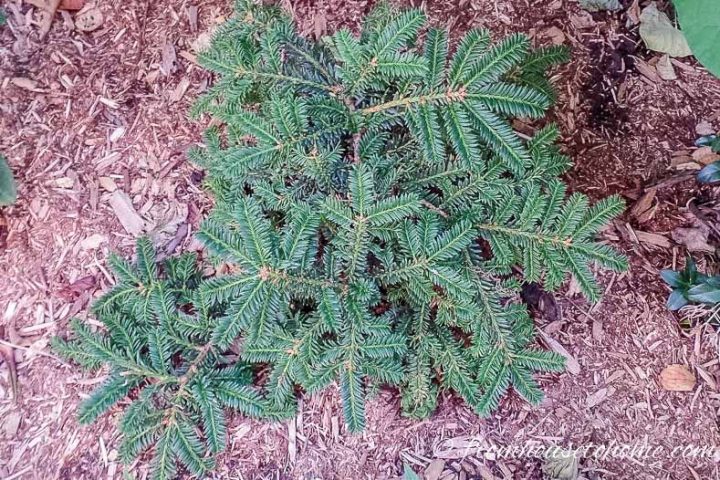
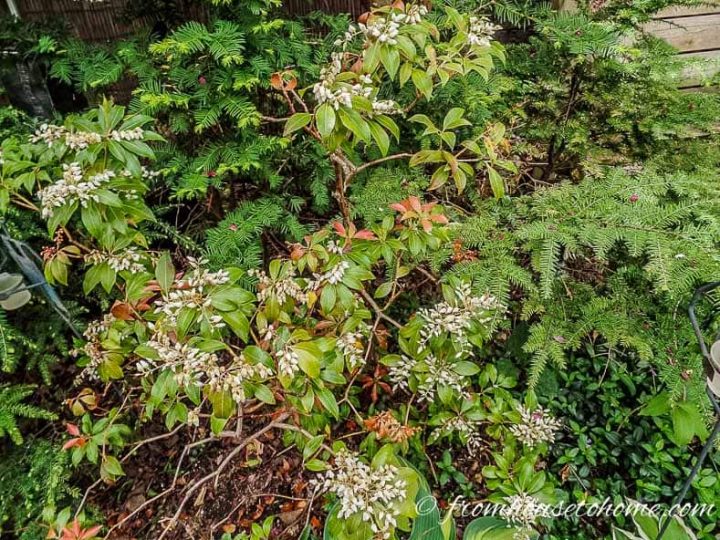
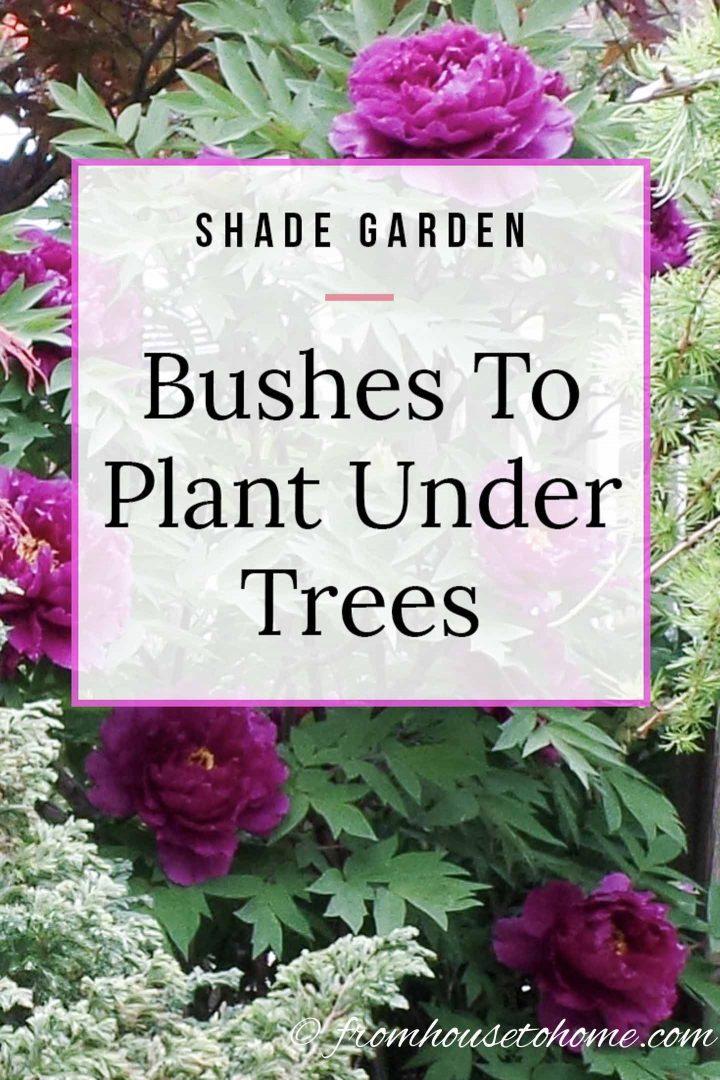
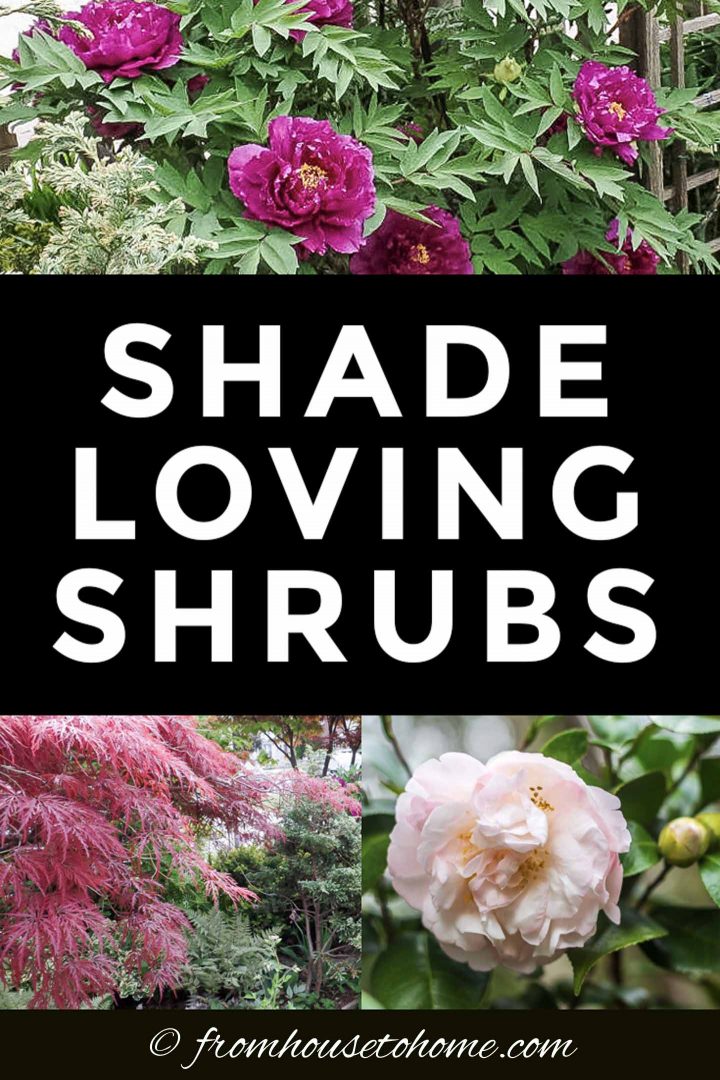
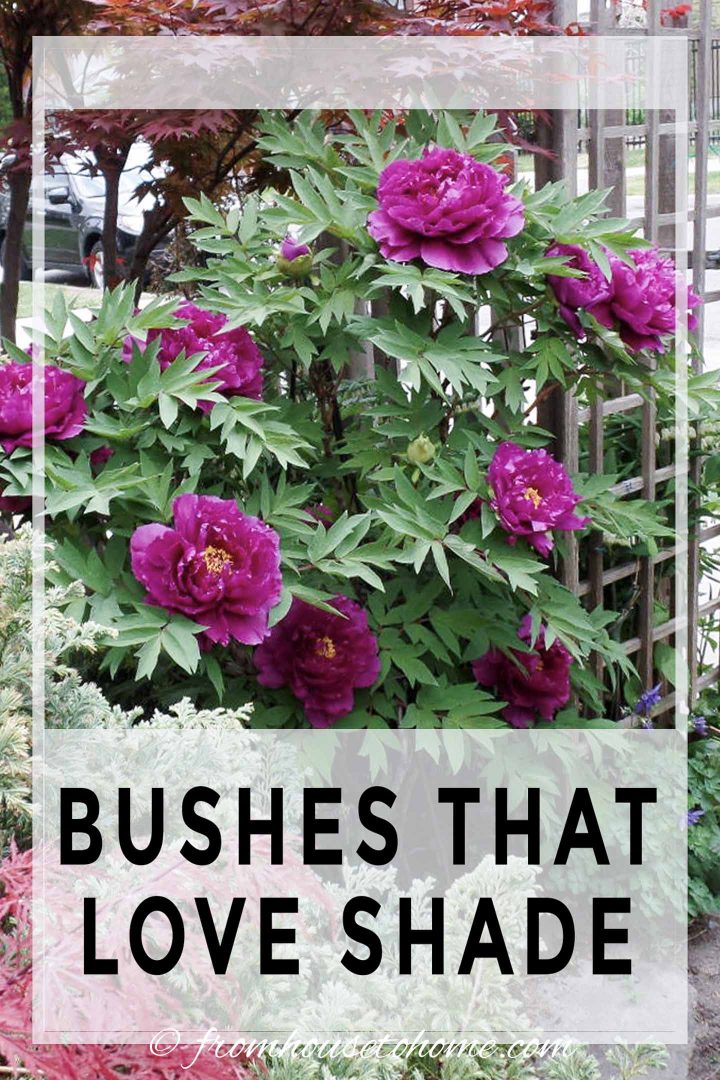
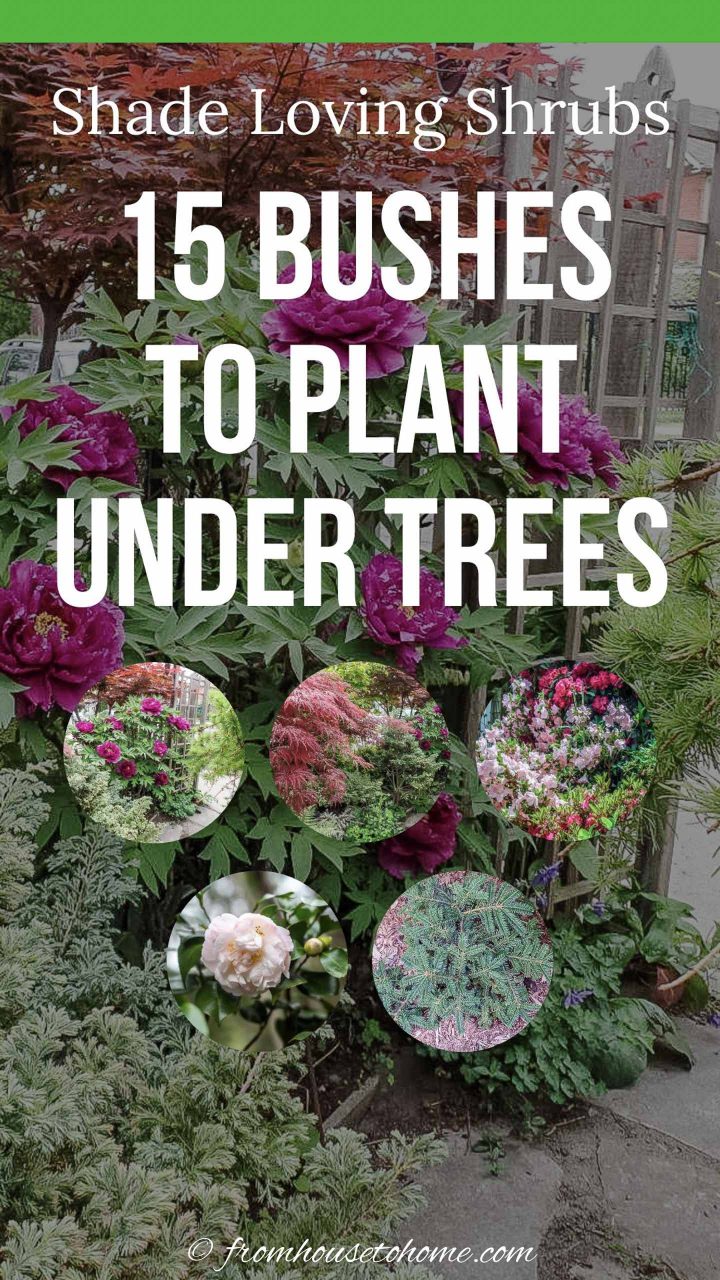
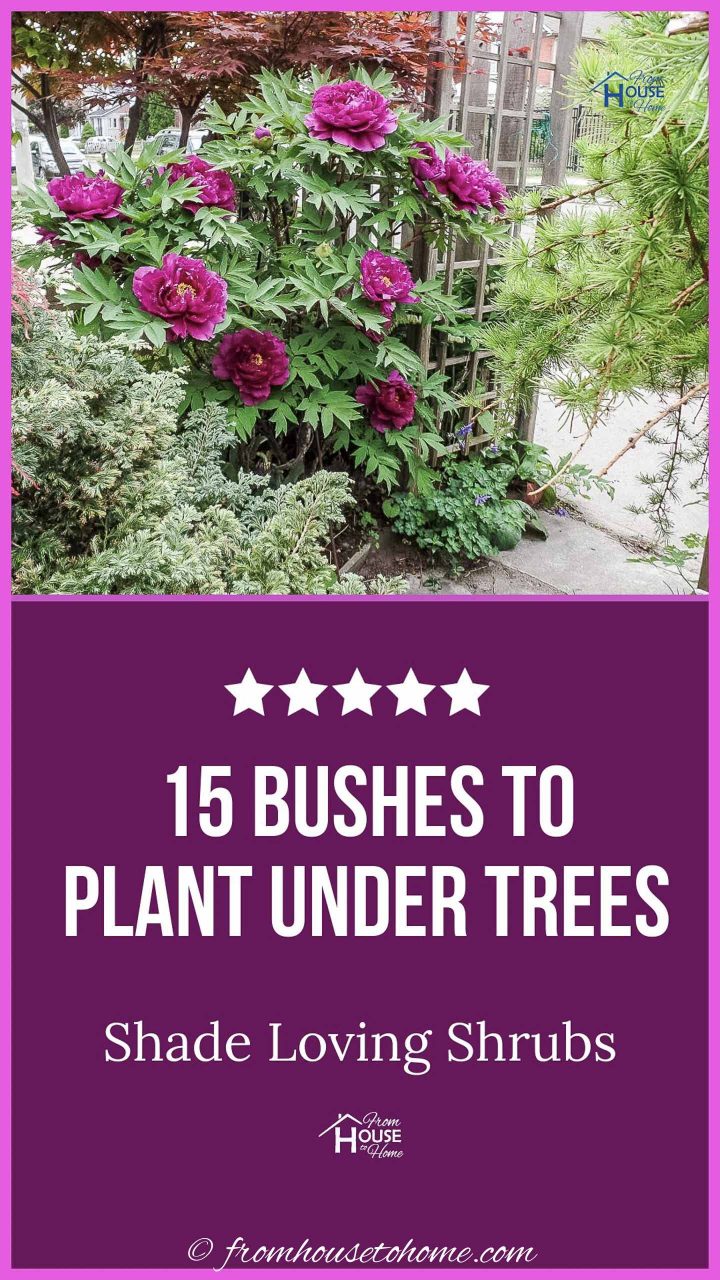
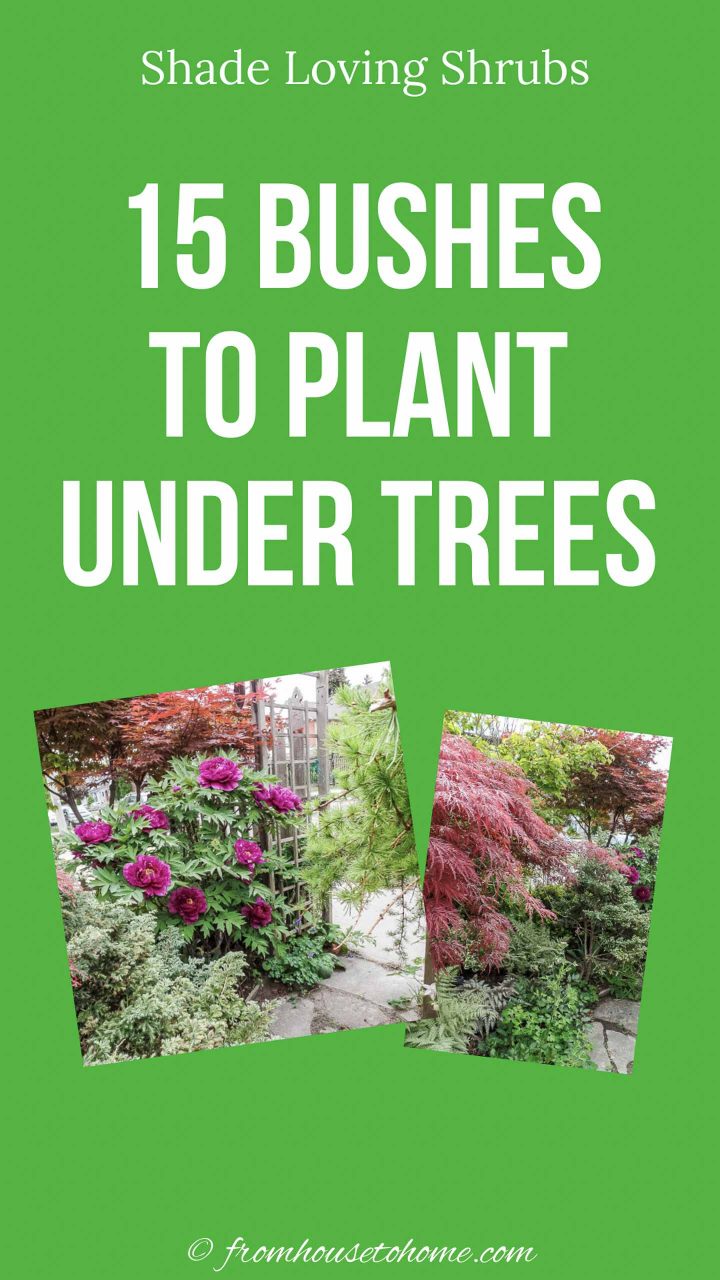
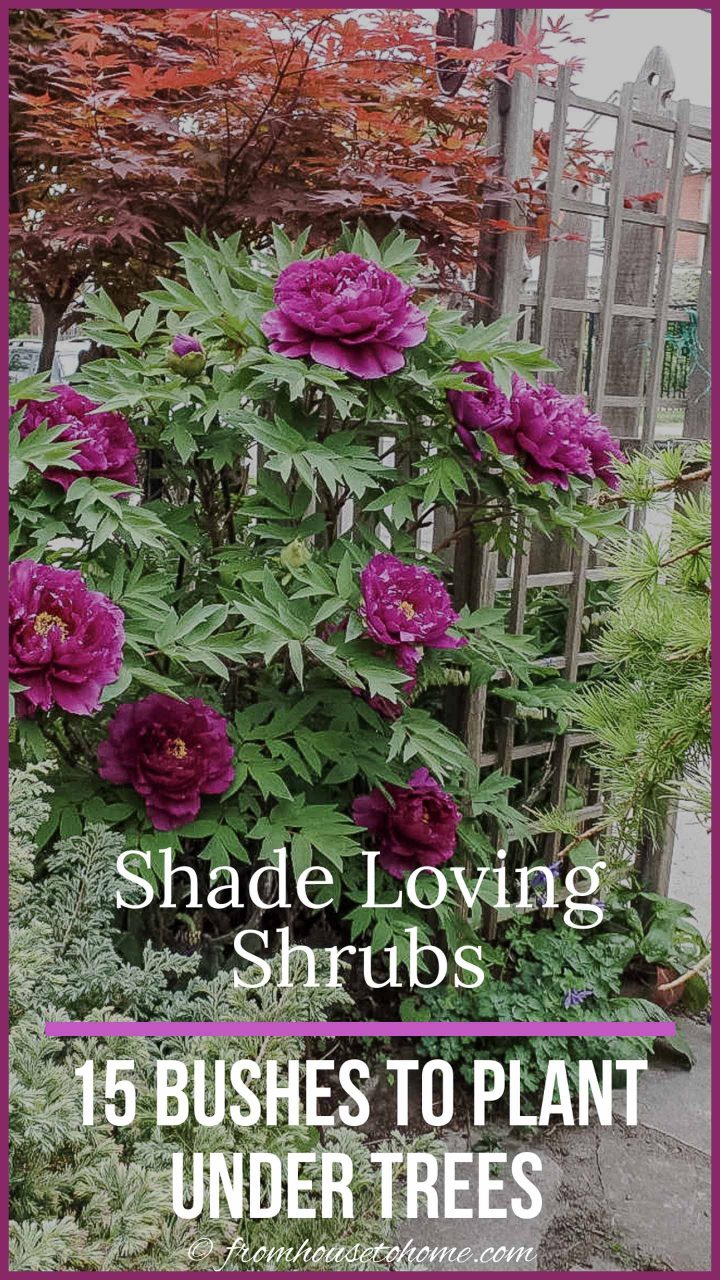
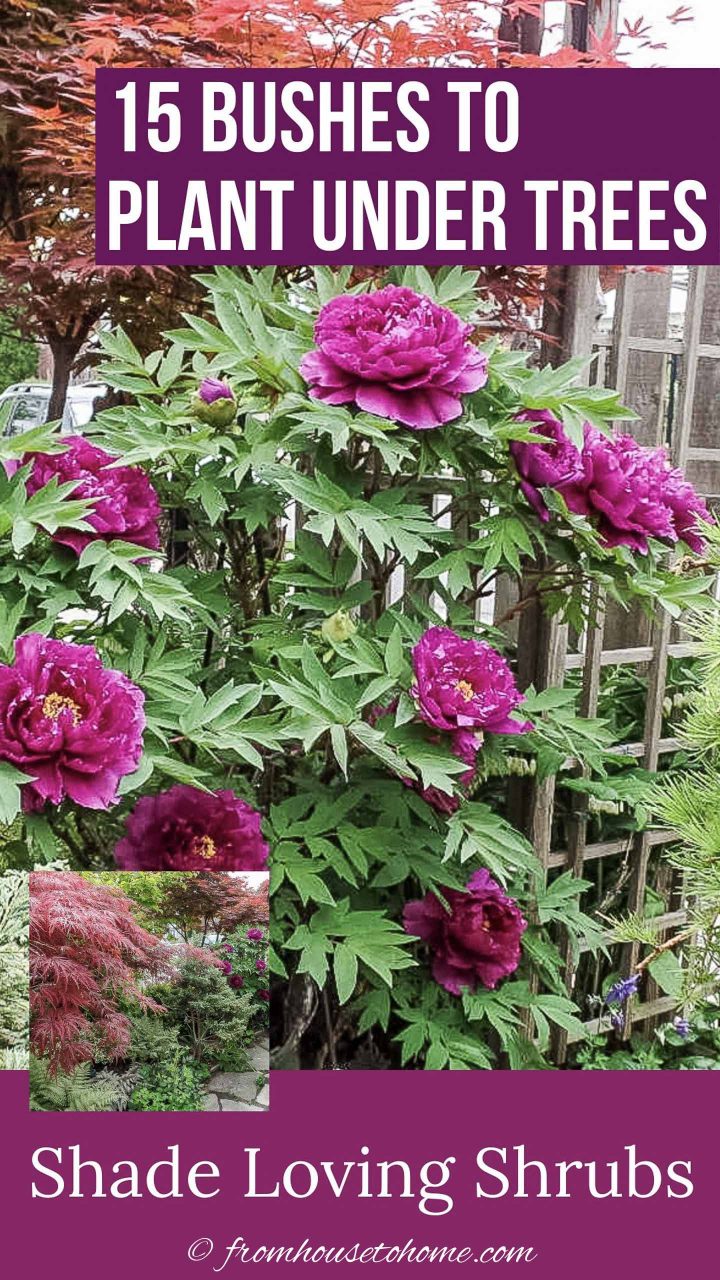
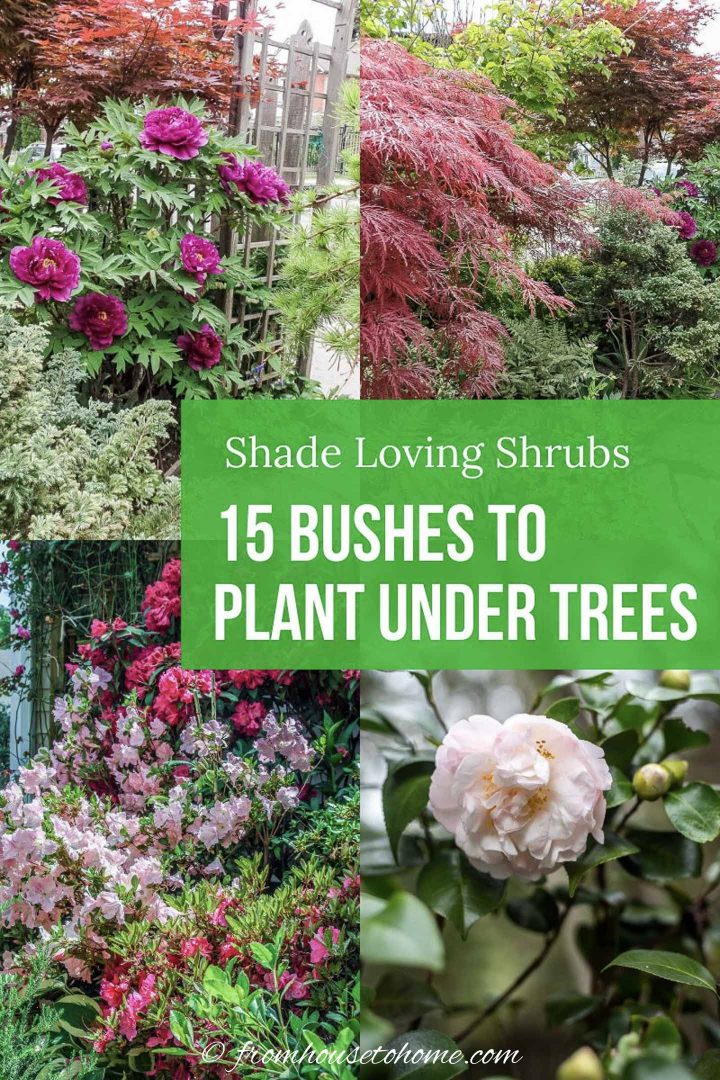
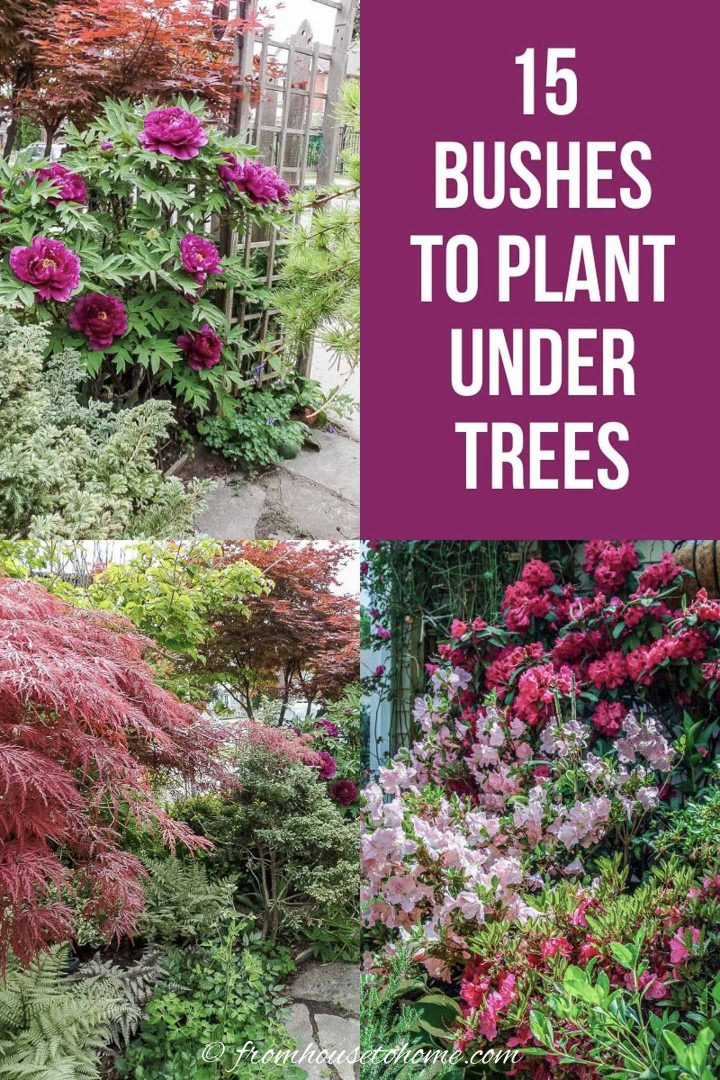
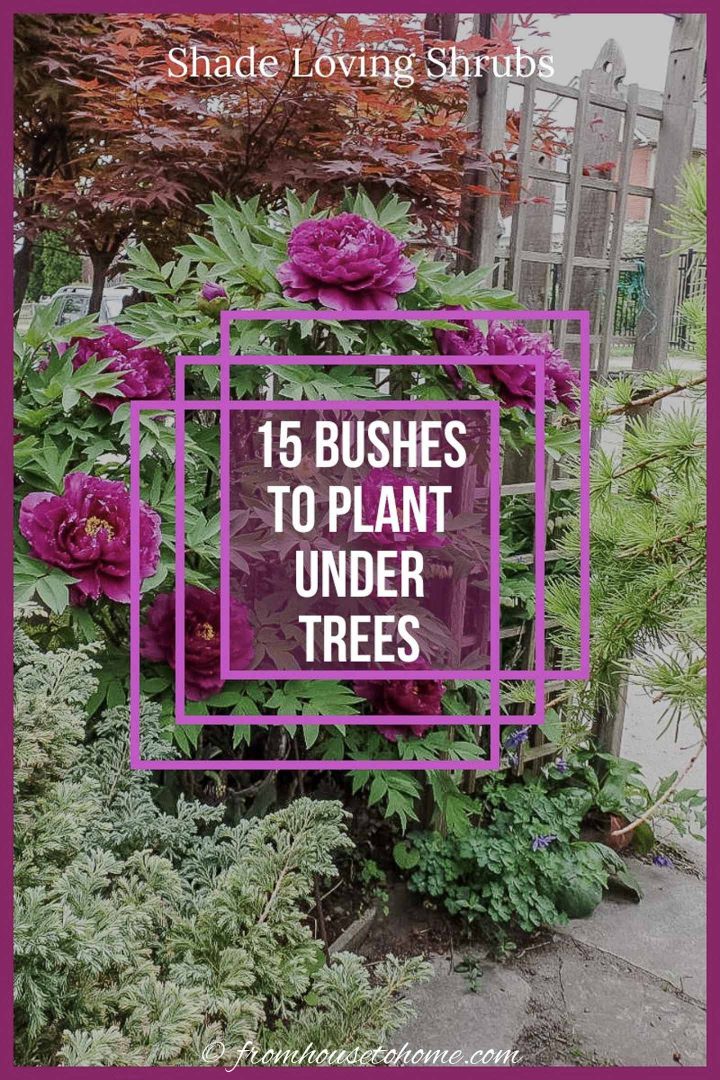
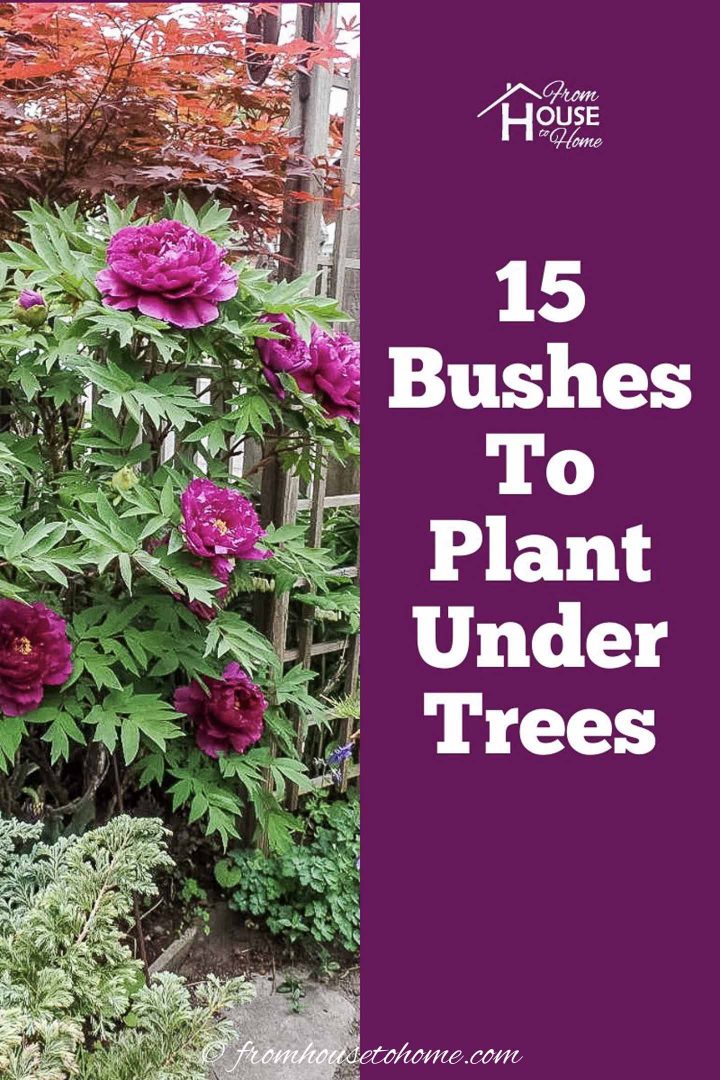
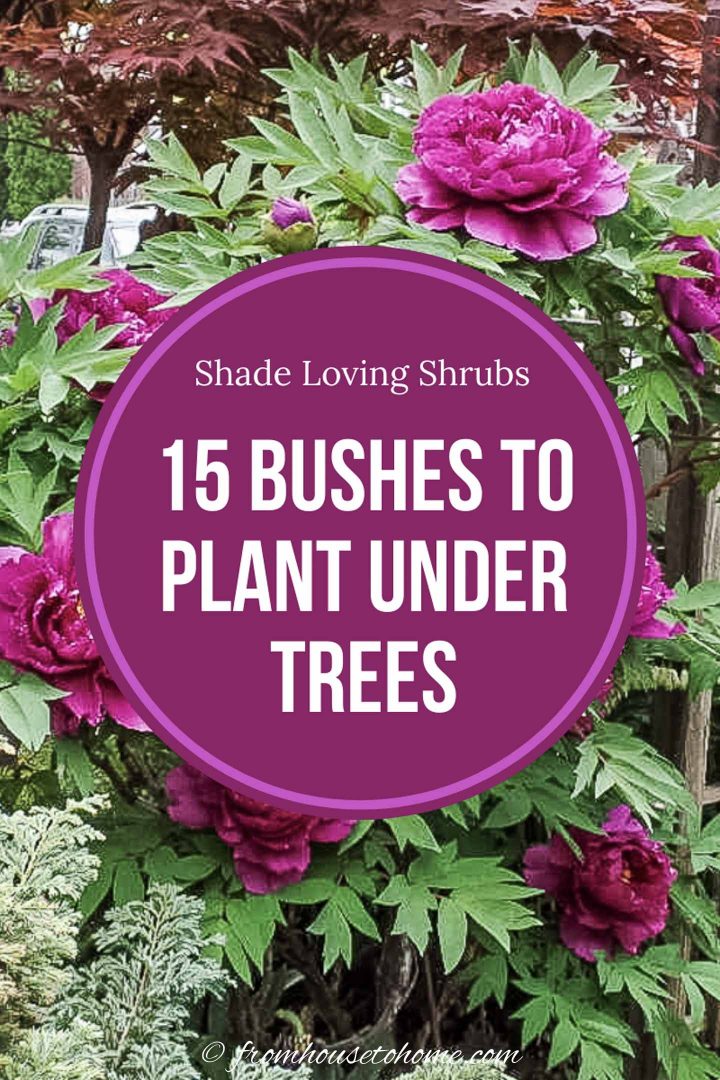
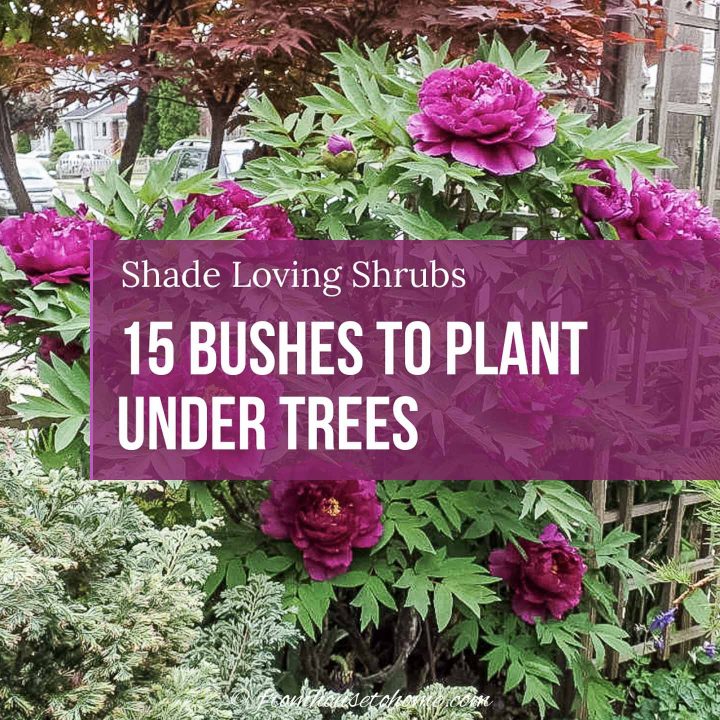
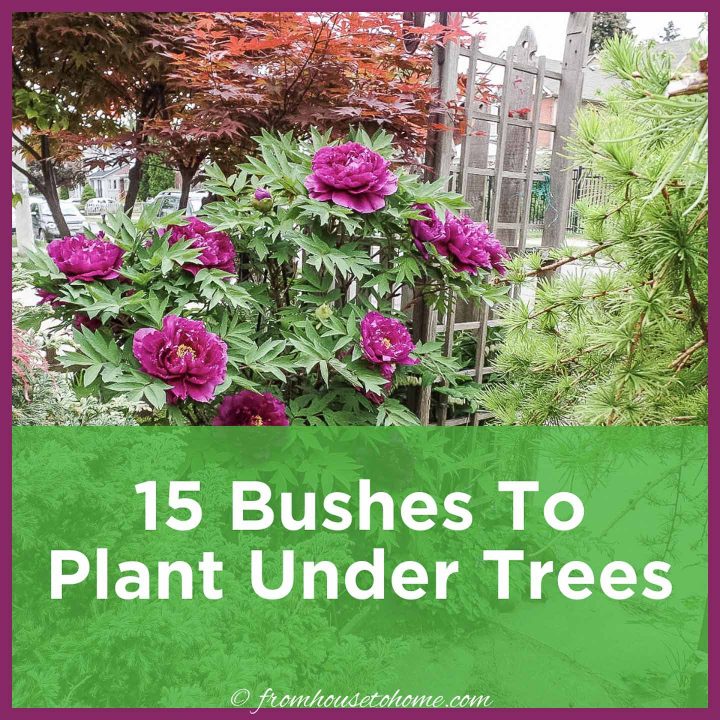
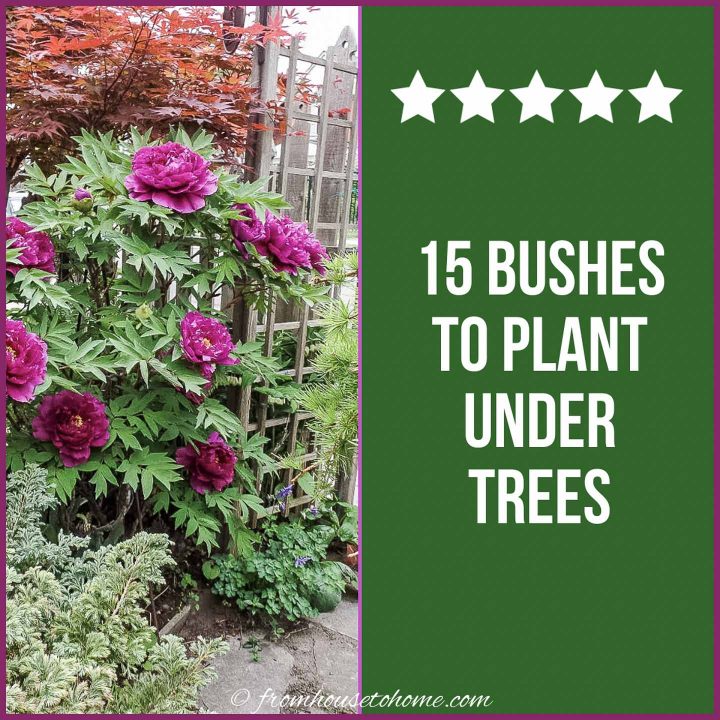
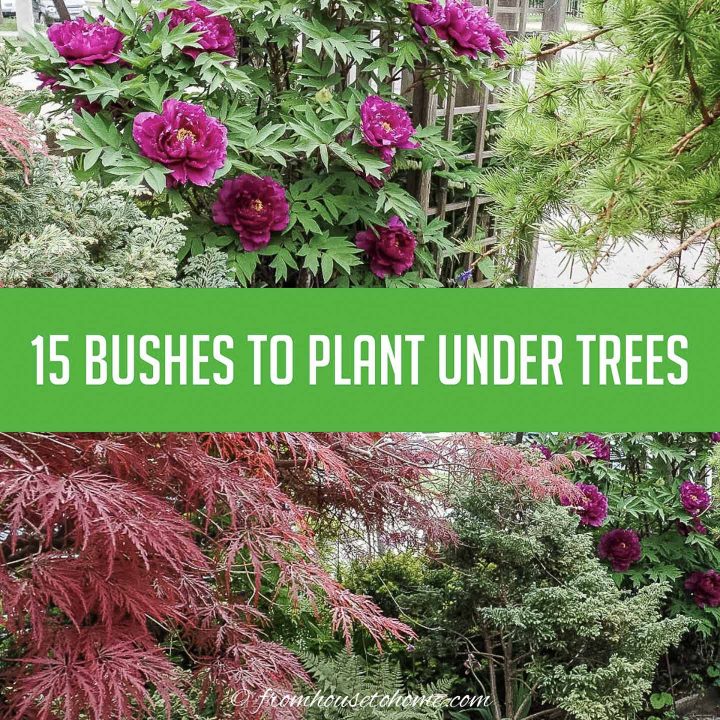
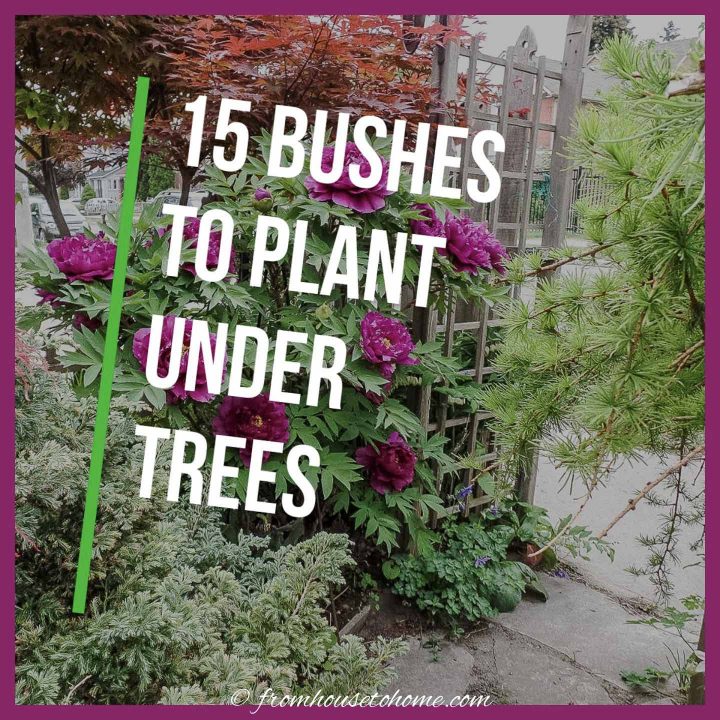
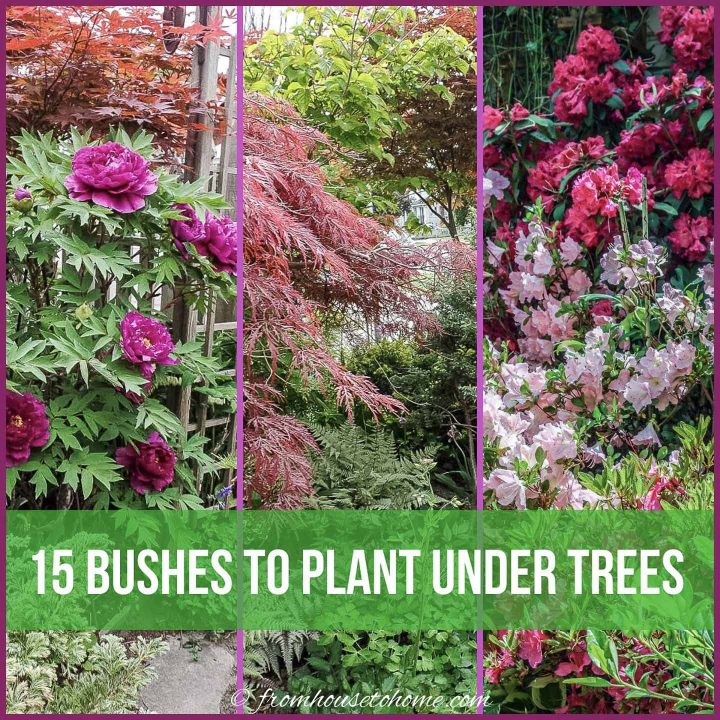
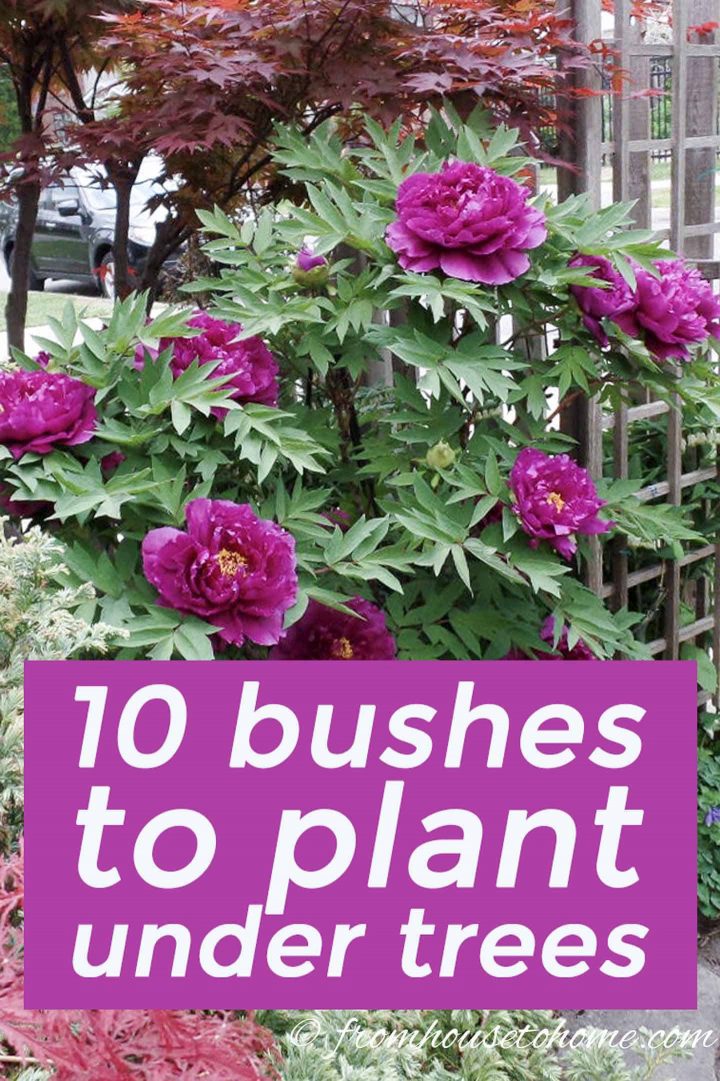
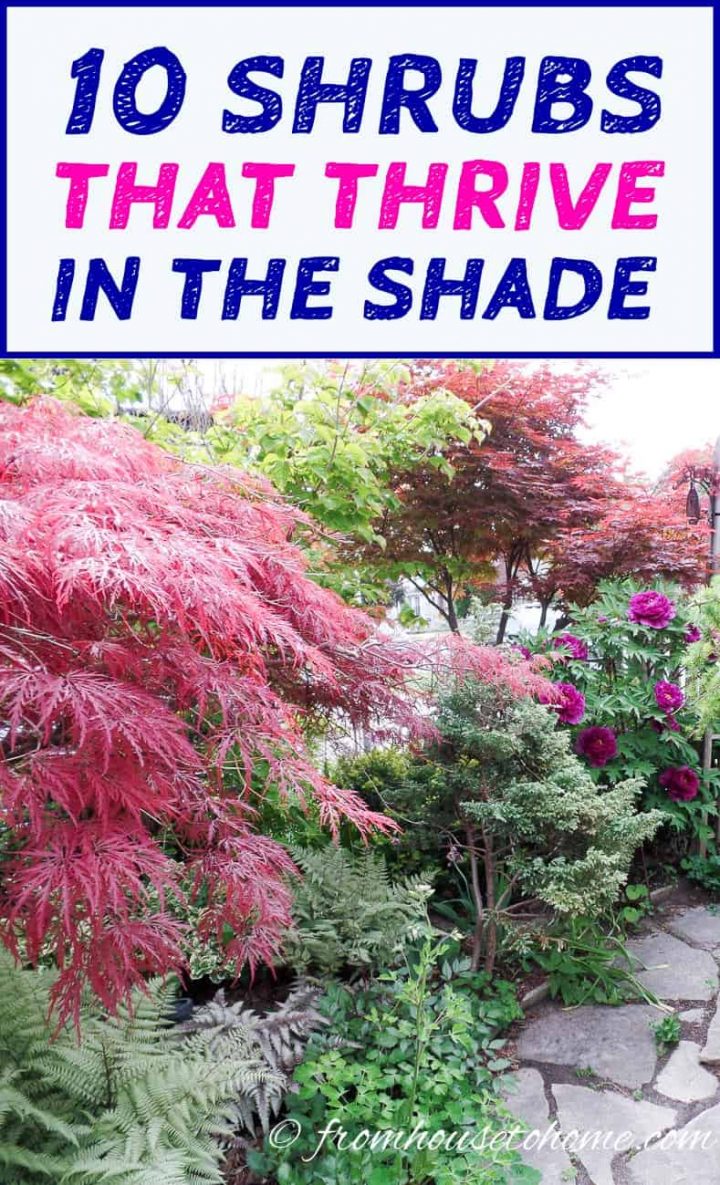
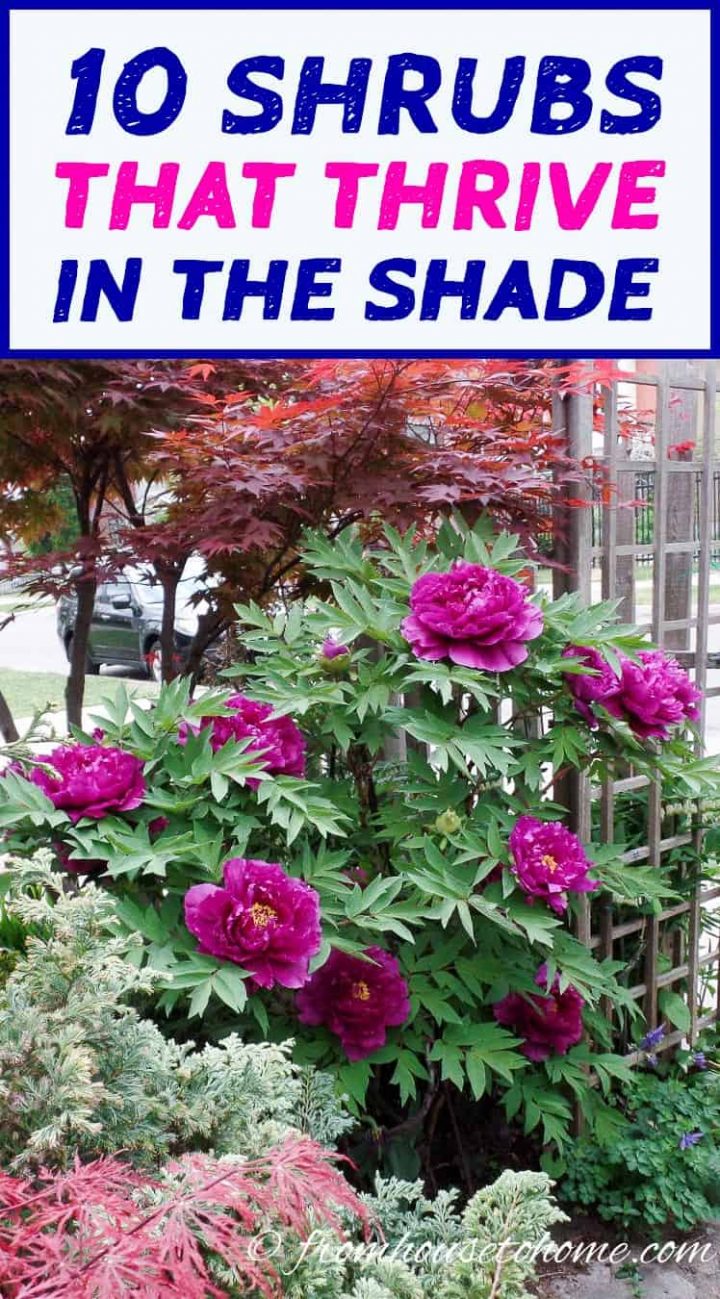

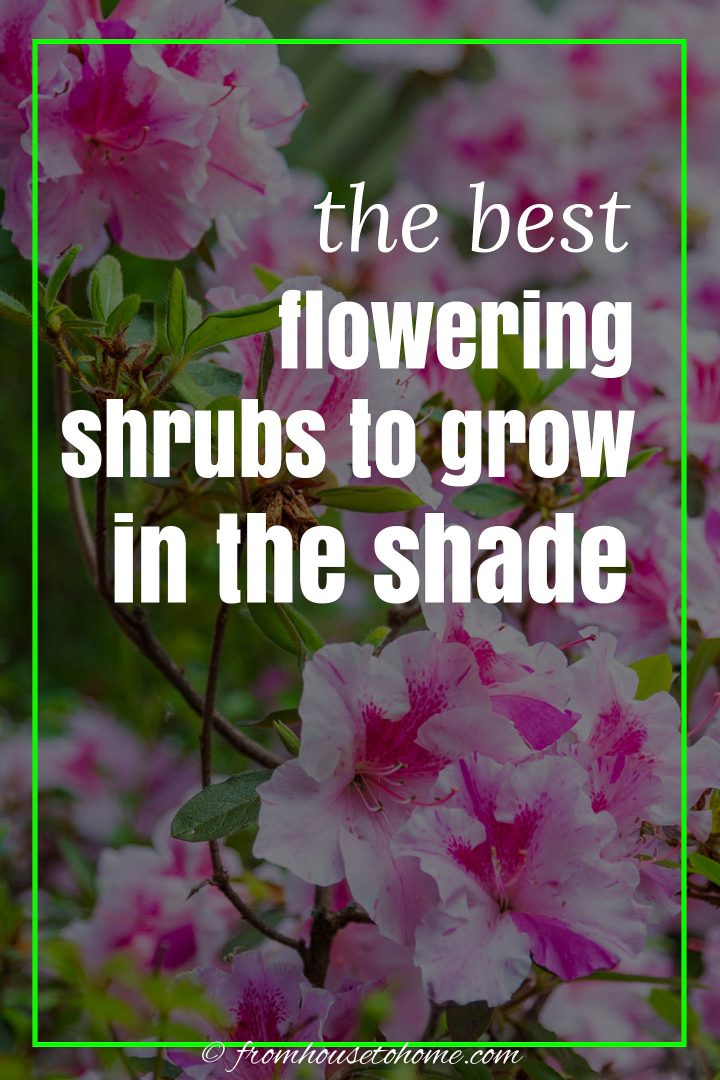
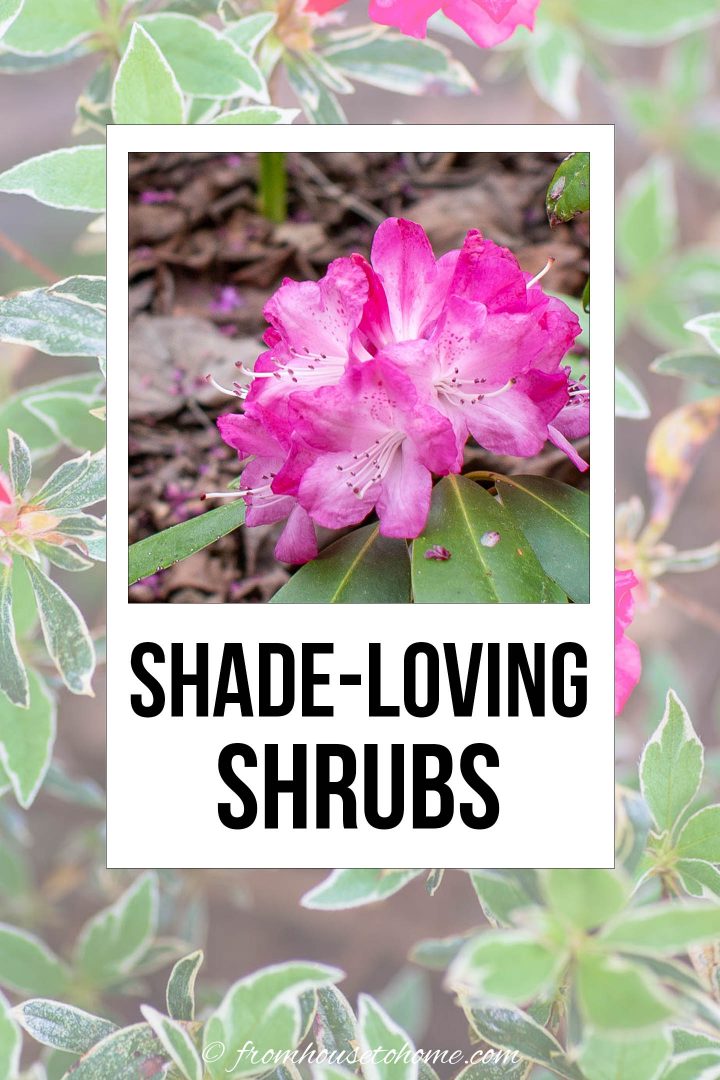
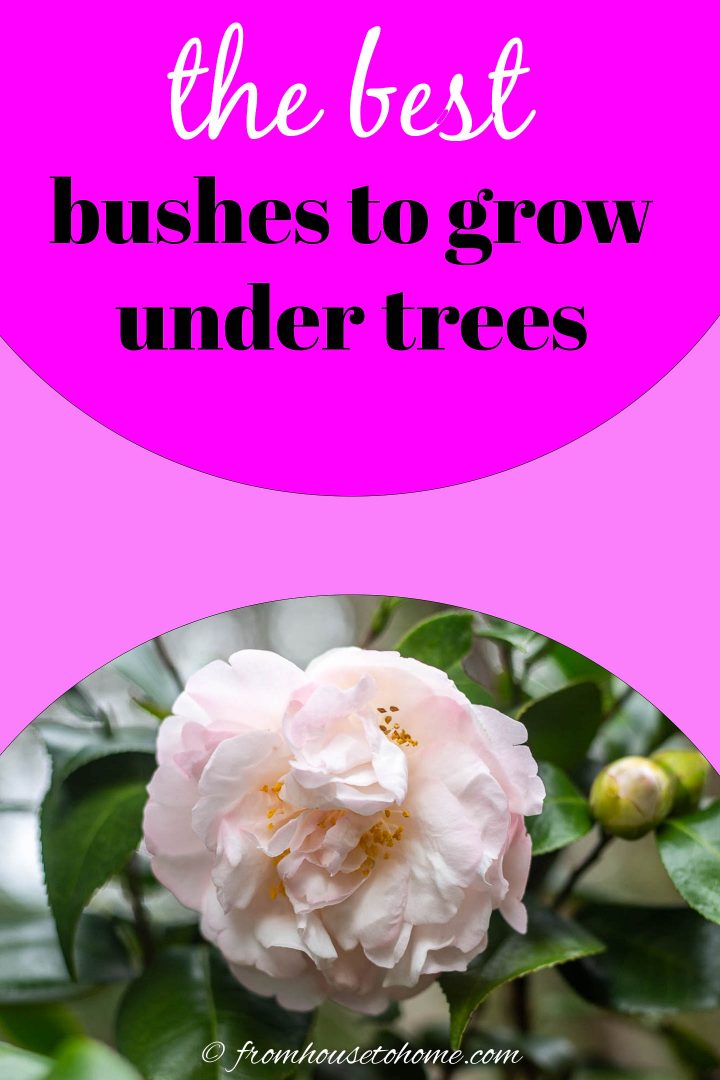
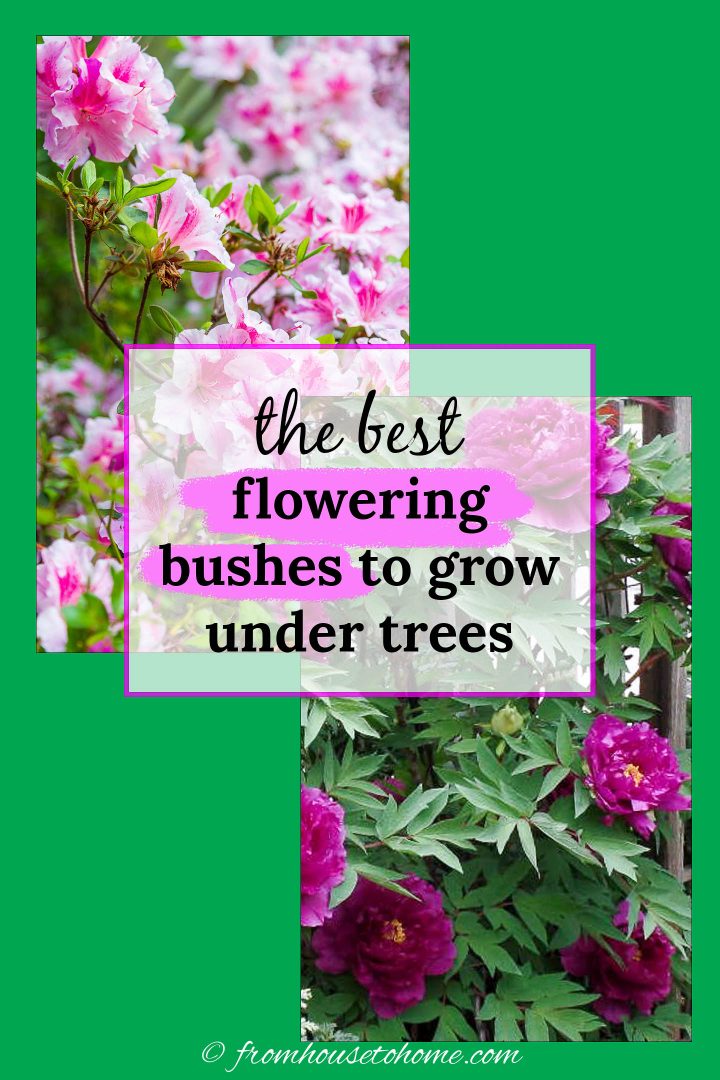
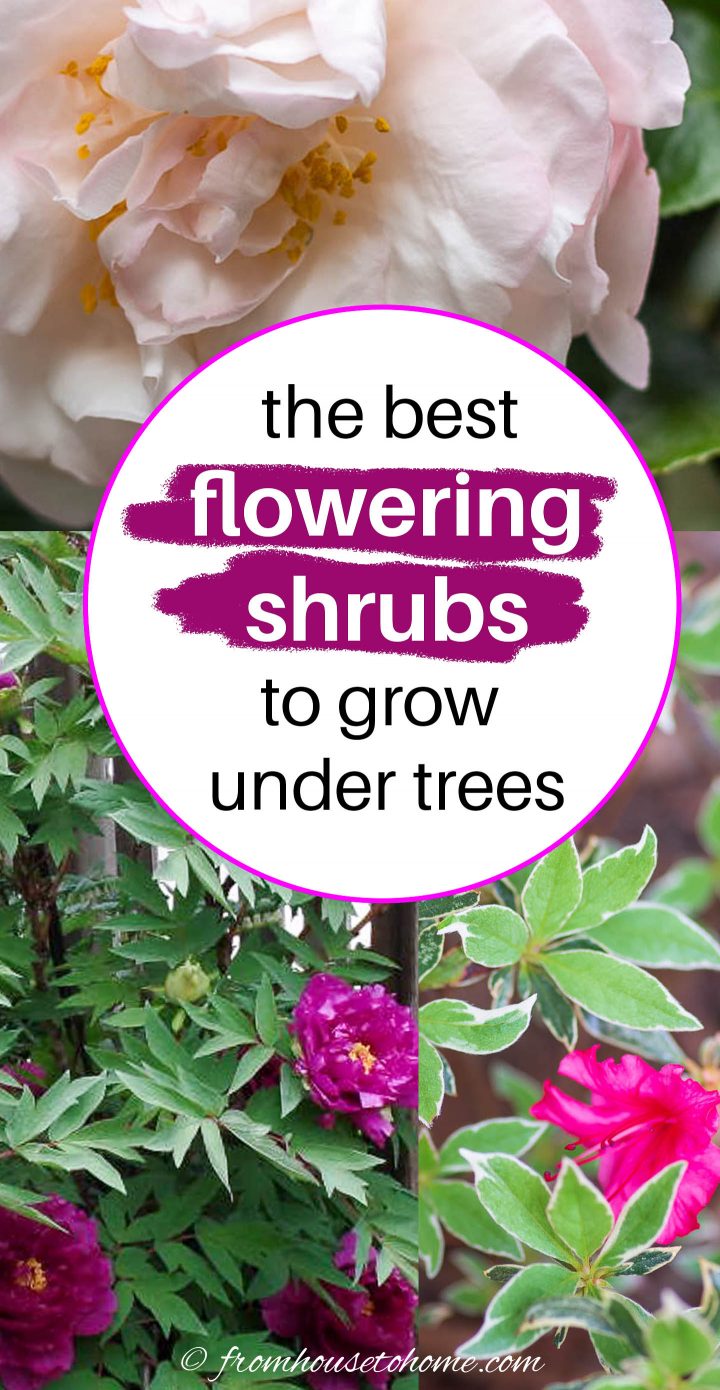
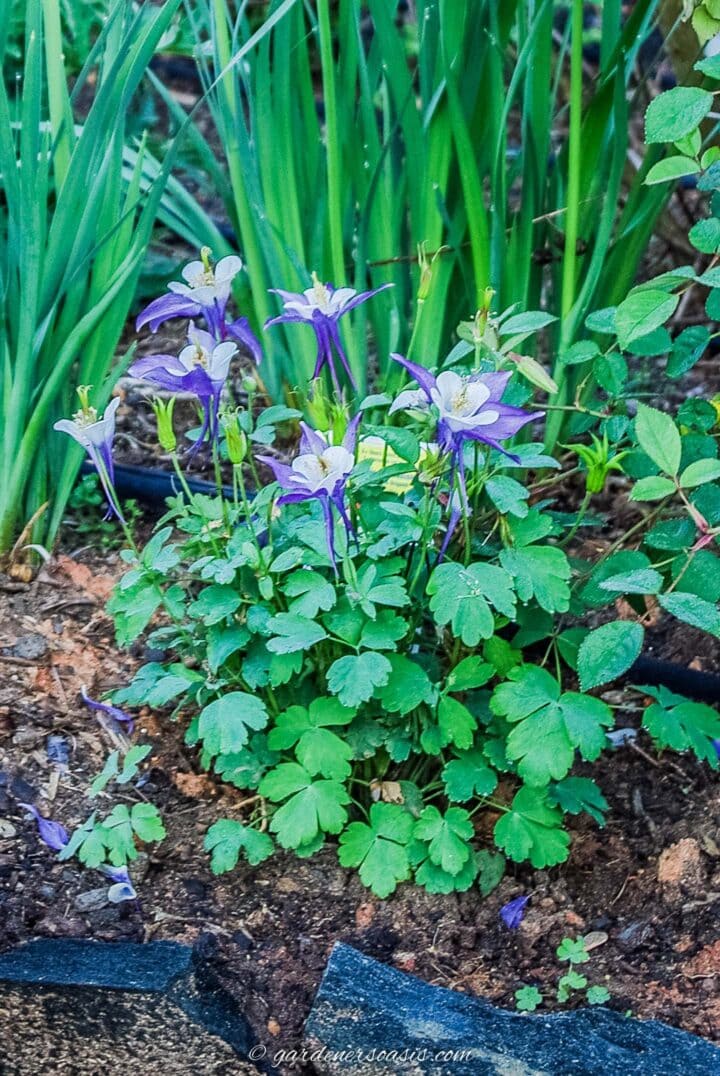
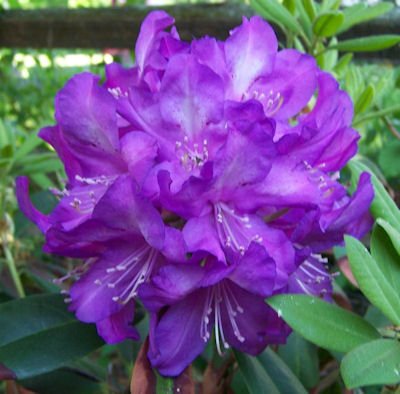

I’m a gardener from way back. Love your info and suggestions.
Thank you Betty. I have been particularly glad to have the garden for diversion this year.
Beautiful plants
Thanks Chilumba
Thank you so much for sharing! I’m still working on my green thumb and these have given me some great ideas and confidence that even I can make my garden beautiful! Looking forward planting some new flowers this spring/summer! (I love the purple passion rhododendron and the Japanese peony)
Good luck with your new garden design Vickie. It is always an advantage to have identified some plants you love!